
PLUS: The offshore comeback Pipeline smackdown Focus on safety



PLUS: The offshore comeback Pipeline smackdown Focus on safety

This Louisiana offshore hub is redefining itself for an ‘all things energy’ future.

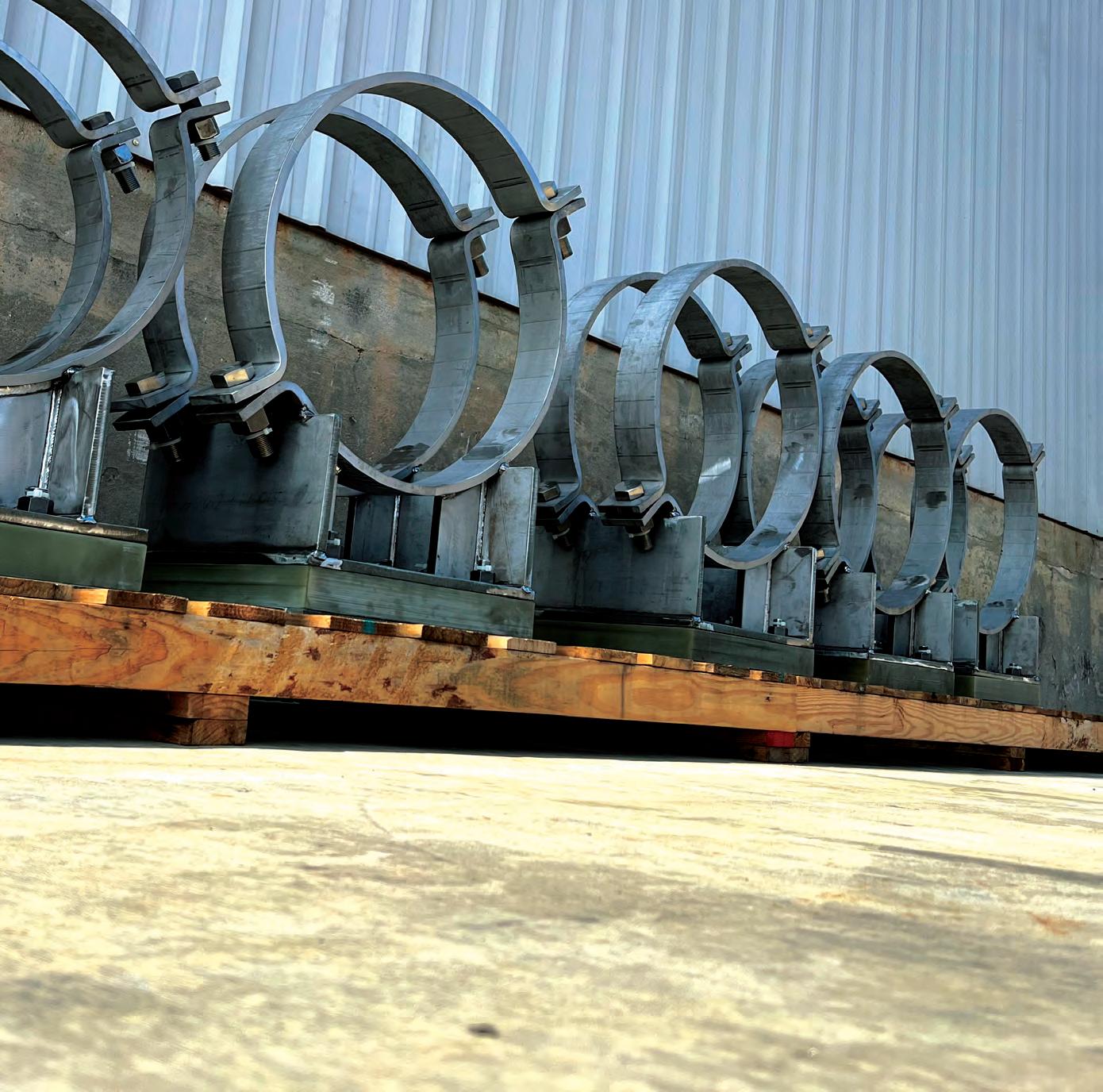

Founded in 1989, ISC has become a premiere electrical and instrumentation contractor within the industry. From humble beginnings in Baton Rouge, Louisiana, we’ve been blessed to see our company grow to have offices in 5 locations across the U.S. We want to say thank you to the amazing customers we’ve had the priviledge of working with, but especially to our associates, who go above and beyond every day to live out the ISC values of safety, quality, integrity, and innovation.
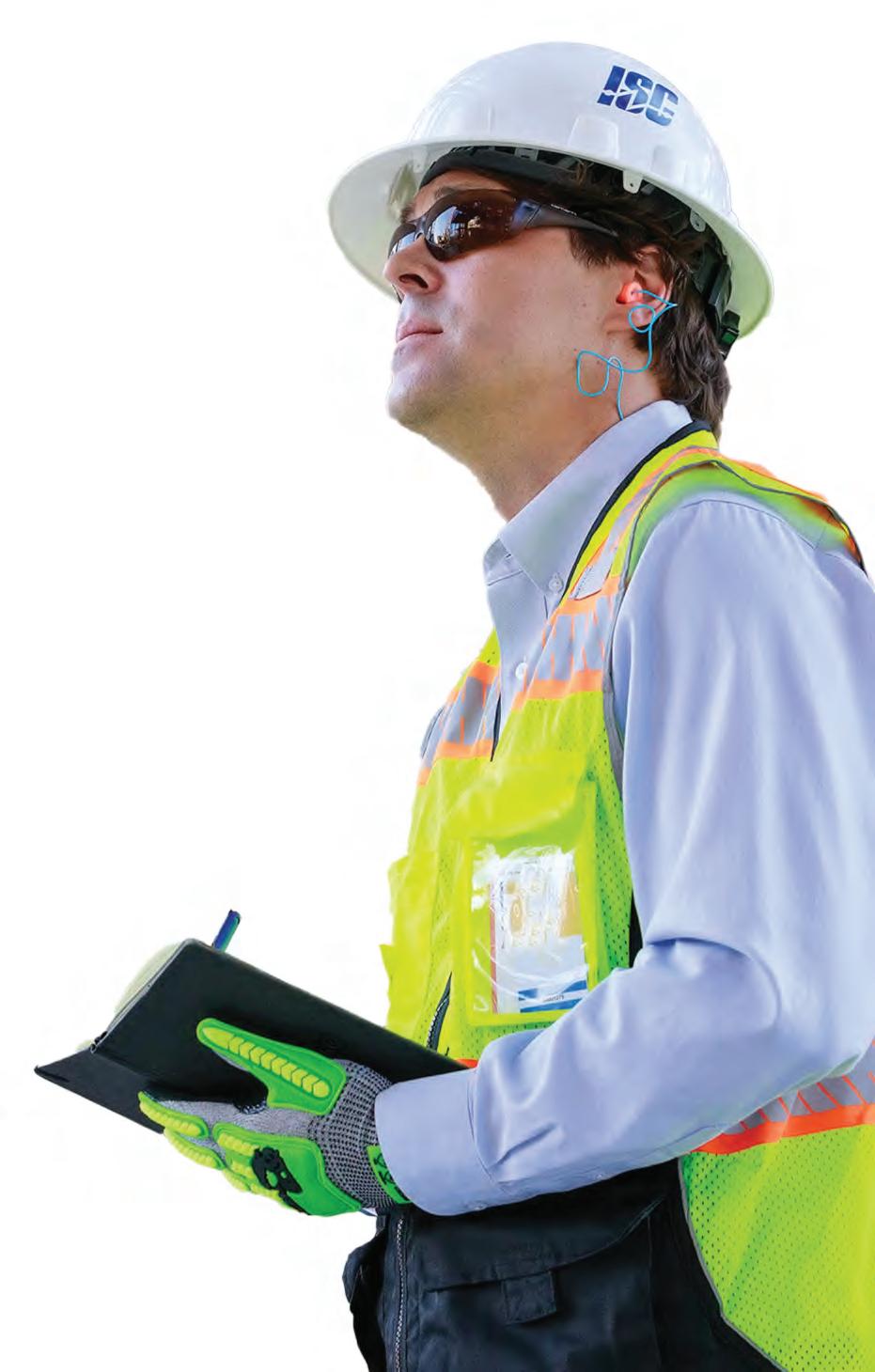










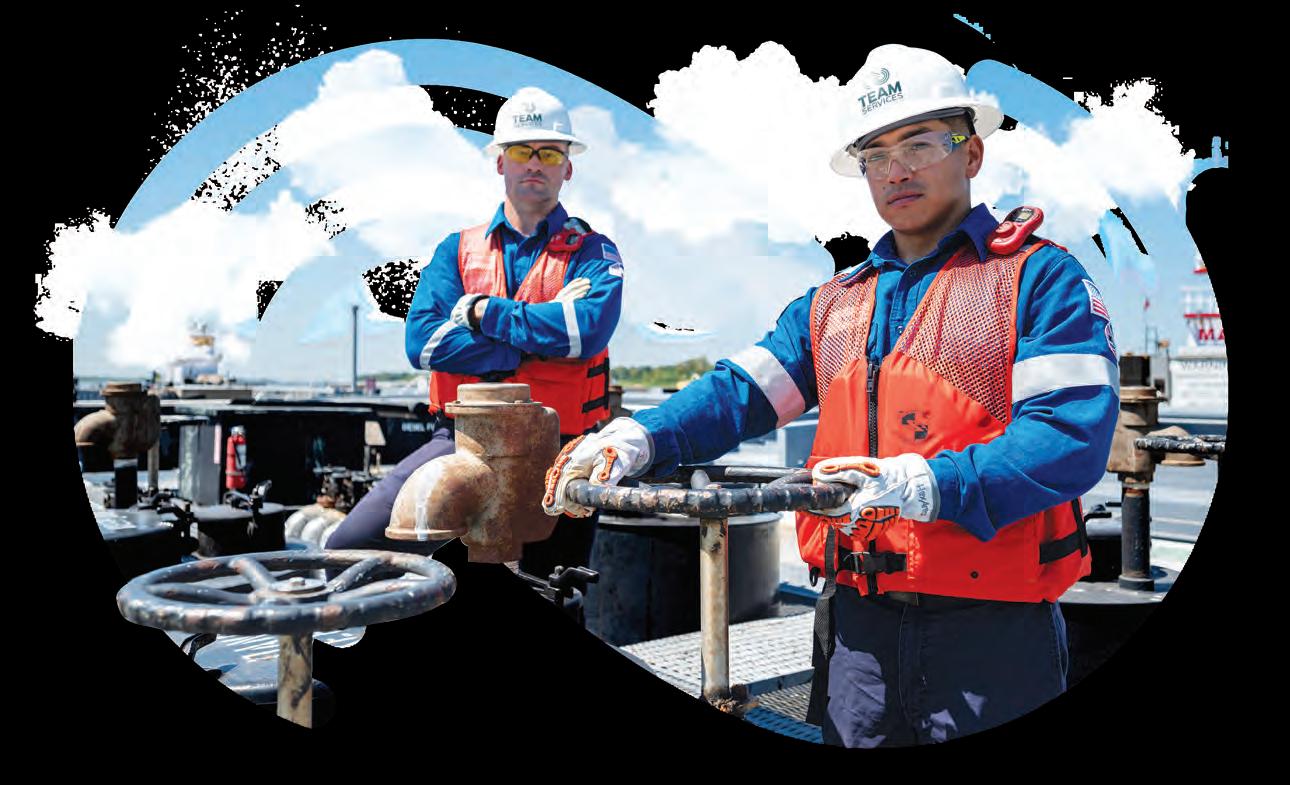







This Louisiana offshore hub is redefining itself for an ‘all things energy’ future.
64 Tug of war Streamlined processes help contractors strike a balance between safety and productivity.
Failsafe
Industry leans on partnerships, technology and a lot of practice to prep for the unthinkable.
80 Insight: Why Louisiana energy expansion should matter to you
82 Our maps of the projects driving industrial growth 86 Toughest Challenge
A tragedy takes Koura executive Erick Comeaux on a whole new journey.
The Roundtable
Five south Louisiana leaders discuss the challenges and opportunities facing industry in the last quarter of 2024 and beyond.
Publisher: Julio Melara
Associate Publisher: Erin Pou
EDITORIAL
Executive Editor: Penny Font
Editor: Sam Barnes
Contributing Photographers: Cheryl Gerber, Don Kadair, Leroy Tademy
ADVERTISING
Assistant Manager/Sales & Marketing Operations: Kynley Lemoine
Senior Multimedia Marketing Consultant & Team Leader: Kelly Lewis
Multimedia Marketing Consultants: Rachel Andrus, Nancy Bombet Ellis, Ethan Shipp, Emma Walker
Digital Operations Manager: Devyn MacDonald
Media Strategy Manager: Paul Huval
Partner Success Manager: Matt Wambles
Digital Operations Assistant: Derrick Frazier
STUDIO E
Creative Director: Timothy Coles
Corporate Media Editor: Lisa Tramontana
Content Strategist: Emily Hebert
Business Development Manager: Manny Fajardo
Multimedia Marketing Consultant/Custom Publishing: Judith LaDousa
Multimedia Marketing Consultant: Ashleigh Ward
MARKETING
Marketing & Events Assistant: Mallory Romanowski
ADMINISTRATION
Business Manager: Tiffany Durocher
Business Associate: Kirsten Milano
Office Coordinator: Donna Curry
Receptionist: Cathy Varnado Brown
CREATIVE SERVICES
Director of Creative Services: Amy Vandiver
Art Director: Hoa Vu
Senior Graphic Designer: Melinda Gonzalez Galjour
Digital Graphic Designer: Ellie Gray
Graphic Designer: Sidney Rosso
AUDIENCE DEVELOPMENT
Audience Development Director and Digital Manager: James Hume
Audience Development Coordinator: Ivana Oubre
Audience Development Associate: Catherine Albano
Customer Experience Coordinator: Kathy Thomas
A publication of Melara Enterprises, LLC
Chairman: Julio Melara
Executive Assistant: Brooke Motto
Vice President-Sales: Elizabeth McCollister Hebert
Chief Content Officer: Penny Font
Chief Digital Officer: Erin Pou
Chief Operating Officer: Guy Barone
Louisiana’s
50 Revitalizing Southwest Louisiana
The region undergoes a transformation filled with promise.
71 Leaders of Industry 10/12 Industry Report shines a light on companies and organizations that make an impact in their fields and in their communities.
Circulation/Reprints/Subscriptions/Customer Service
225-928-1700 • email: circulation@businessreport.com
Volume 9 - Number 2


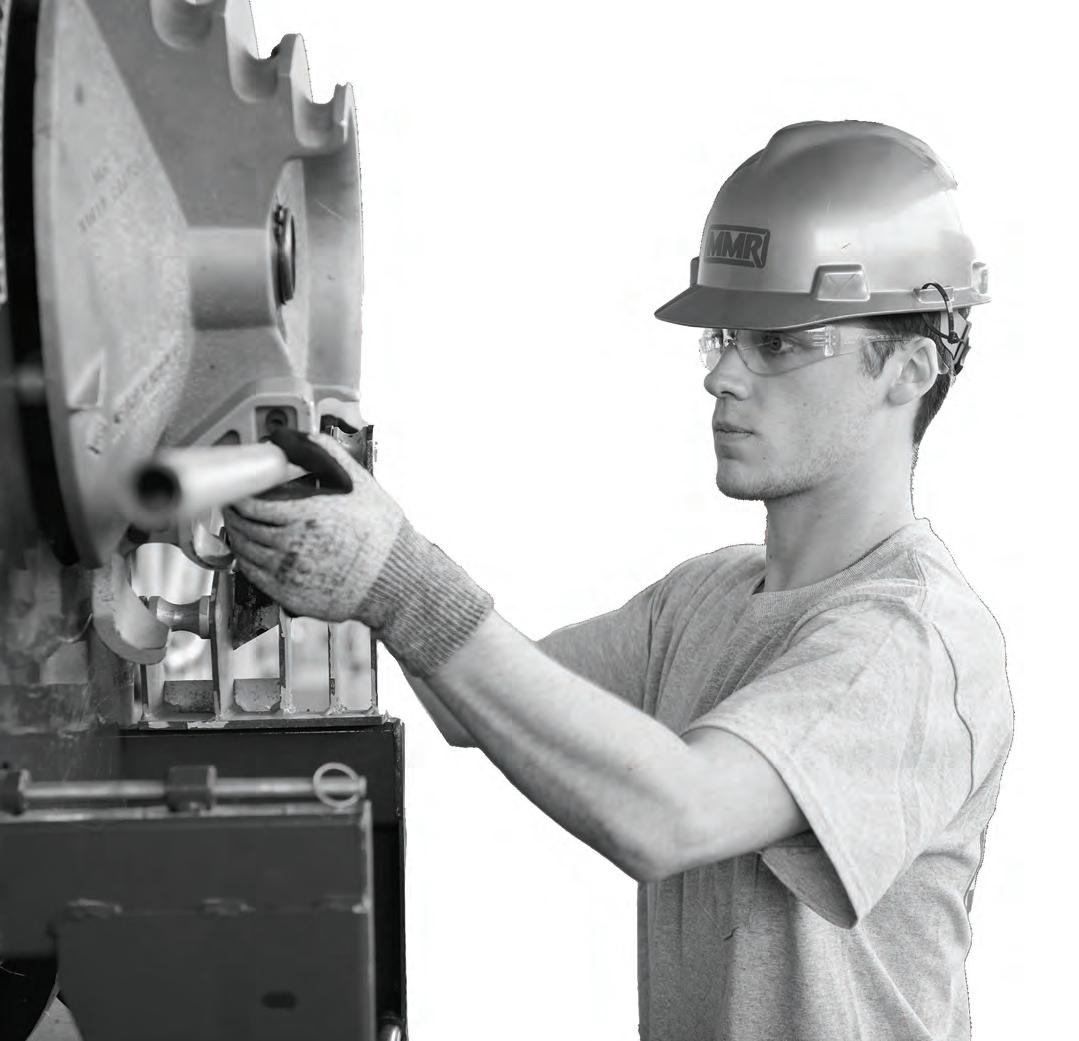

BY SAM BARNES
It’s not likely that Louisiana’s fledgling electric vehicle battery industry would even exist without federal assistance, but state economic leaders really don’t care.
More than a dozen new incentives enacted through the Inflation Reduction Act, the Infrastructure Investment and Jobs Act, and the CHIPS and Science Act have fueled investments nationwide in the EV manufacturing space and resulted in more than 84,000 announced jobs, according to the U.S. Department of Energy.
That’s made it financially viable for many foreign-owned companies to consider transporting mined materials from such faraway places as Australia, Mexico and Mozambique into Louisiana to manufacture EV battery components. And, despite reports that EV sales are falling short of expectations, the long-range need to reduce the country’s dependence on China will continue to prop up the supply side of the equation.
To date, some seven projects totaling nearly $2.8 billion have been announced in the state, all to manufacture materials for EV batteries. One facility—Syrah Technologies in Vidalia—is already producing a graphite-based product for Tesla.
“The pressure to create competition for China in this space is clear,” says Susan Bourgeois, secretary of Louisiana Economic Development. “It would be foolish for us not to view that as a major sector for us in the next year to 36 months. We’re addressing what Louisiana needs to do right now

to capitalize on this opportunity.”
Such projects are receiving virtually no regulatory pushback at the local, state or federal levels. For example, Australian-owned Element 25 received an air permit in near-record time for its proposed 65,000-ton-per-year high-purity manganese sulfate monohydrate— known as HPMSM—facility in Ascension Parish.
None of the companies planning to build in Louisiana will be direct competitors, since they will each manufacture a different lithium-ion battery material. EV batteries consist of cathode, anode and electrolyte components that require various materials such as lithium, cobalt, manganese, iron, graphite and nickel to operate effectively.
Element 25’s $300 million HPMSM facility will take about two years to construct once a final investment decision is reached. The company plans to import raw materials from its Butcherbird Mine in western Australia—a 30day journey by ship—with many of the remaining inputs to be
sourced from U.S. and Louisiana suppliers.
In Vidalia, Australia-based Syrah Technologies is already producing about 11,250 tons a year of a graphite-based active anode material, or AAM. The company gets the material it needs from its Balama Graphite Operation in Mozambique, the largest integrated natural graphite mine and processing operation in the world.
“Syrah is in the midst of finalizing their third phase,” Economist Loren Scott says, “and it’s occurring in one of the most economically desperate areas of our state. Here you have a company bringing in about 220 jobs with an average salary of $116,000. That is huge.”
In St. Gabriel, Orbia Fluorinated Solutions’ subsidiary Koura is planning two simultaneous expansion projects at its existing Iberville Parish plant—a $400 million investment to produce LiPF6, a component that facilitates the flow of electricity; and a $400 million investment to manufacture R-142b, a primary
building block in polyvinylidene fluoride (a critical binding agent for batteries).
The company expects to begin construction in 2025 and be operational by 2026.
Elsewhere in the state, Japanese chemical company UBE Corp. has announced it will invest $500 million in a manufacturing facility that will produce dimethyl carbonate and ethyl methyl carbonate at Cornerstone Energy Park in Jefferson Parish. And in Rapides Parish, Ucore North America plans to invest $75 million to establish North America’s first modern technology rare earth element separation and purification facility.
In Gramercy, ElementUS, a joint venture of DADA and Enervoxa, plans to invest $800 million in a facility to extract rare earth elements at the Noranda Alumina site. And in Ascension Parish, Capchem Technology USA Inc., a subsidiary of Shenzhen Capchem Technology Co., plans to invest $350 million to build an integrated carbonate solvent and electrolyte manufacturing facility.
Kate MacArthur, president and CEO of Ascension Economic Development Corp., is optimistic that the two projects in her parish will move forward, and doesn’t anticipate that any short-term declines in EV demand will impact their trajectory.
“Element 25 and Capchem are planning for 30 to 40 years down the road,” she says, “so even if people aren’t purchasing today, they know that ultimately this market will expand.”
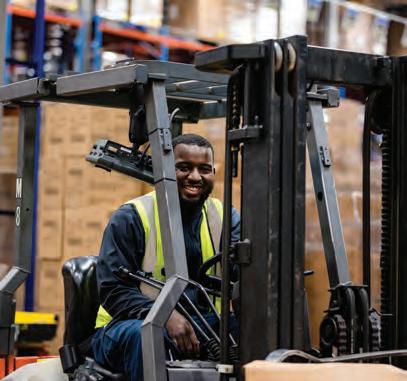

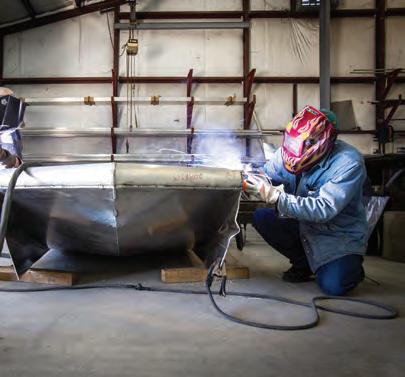
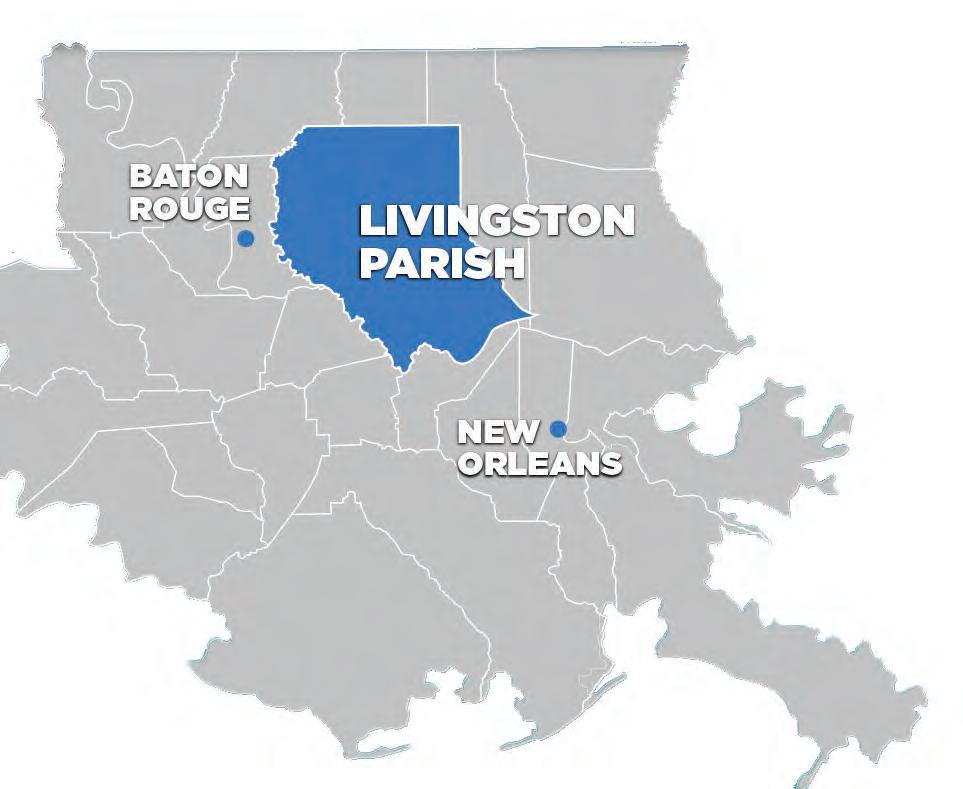



BY SAM BARNES
Some of Jeb Bruneau’s earliest memories are of his father–long-time state legislator Peppi Bruneau–standing up for right-to-work legislation in the 1970s.
It was a critical moment in time for the Louisiana business community, and it thrust his family into the middle of an embittered fight between organized labor and the right-to-work movement.
“Good, bad or indifferent, when you’re a politician’s son, you get it all,” says Bruneau, president & CEO of Associated Builders and Contractors New Orleans/Bayou Chapter. “It got pretty nasty. I remember my mom never letting us go outside because someone had shot through one of our windows.”
Bruneau is a New Orleanian to his core. He grew up and attended school in the Lakeview area After graduating from LSU with a degree in political science in 1992, he briefly flirted with the idea of entering law school, then possibly a career in politics himself, but his father encouraged him to enter the workforce instead.
Bruneau worked as a salesman for a liquor distribution company for more than a decade, but in the days and weeks following Hurricane Katrina his path took on a decidedly different direction. “I was the head of our neighborhood civic group at the time, and I got a lot of national exposure because of that,” he says. “It was weird. I’d be working in some grocery store somewhere and I’d have to go out and do an interview with CNN.”
Not long after, Bruneau made an unsuccessful run for the state legislature, then later worked a two-year stint for the Pelican Institute, a public policy think tank. He then took a job in business development at a Baton Rougebased consulting firm, where he gained invaluable experience as a lobbyist over some eight years. Along the way, he made numerous connections in industry,
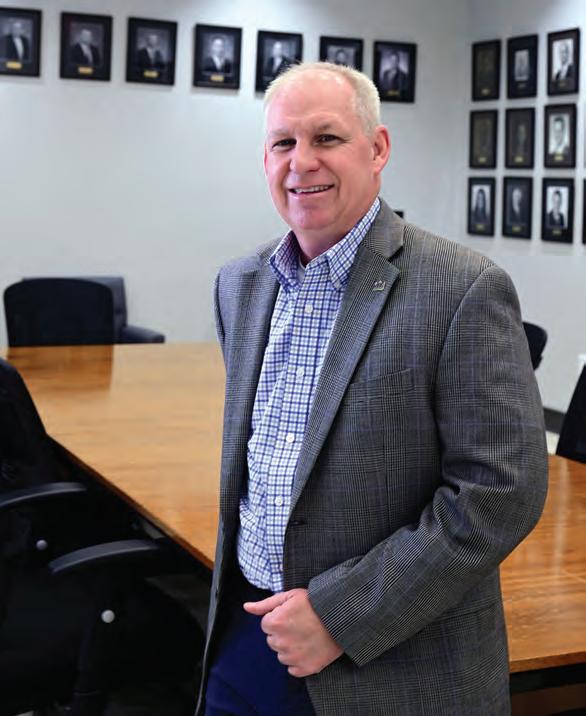
one of whom was John Walters, who was at the time vice president of governmental relations with Louisiana ABC, who suggested Bruneau apply for the position (in 2019).
“It was an interesting jump,” he says. Other than being president of the civic association, I had never been in an executive role. Now, some five years later, I can’t imagine doing anything else.”
Two big things happened while I was a relatively new executive. I had been here only a little more than a year when the world changed. I found myself in the office alone during COVID, and a lot of the things we do are public facing.
The big push was to get Gov. John Bel Edwards to make con-
struction an essential job. I had owners calling me because they were very concerned about the city of New Orleans, the state and the construction industry.
We got through that, then got slammed by Hurricane Ida. Our buildings here in St. Rose all got water in them, and we went through a major fight with the insurance company. Through both events, we found a way to keep our craft training going. Construction was deemed essential, so neither the plants nor the industrial contractors ever quit working.
It’s going to be extremely important for us to address the worsening worker shortage. We’ve got the largest construction project in the world going
on right now in Plaquemines Parish at Venture Global. That one project, alone, is sucking up a lot of the workforce not just from Louisiana, but Texas and all over the place.
And there are some other huge investments coming up in St. Charles Parish, so there’s going to be a big demand on the industrial side. We need people to go to work, from laborers to helpers and skilled crafts, as well as management, from foremen all the way up the chain.
At ABC, we plan to expand and grow to meet those needs. It’s still in the pilot stage right now, but we’re conducting a pipefitting class at a satellite location in Port Sulphur, with Performance Contractors as our partner. We’re also working with two high schools on the Northshore ... where we’re piloting some welding classes. While we have this beautiful facility here in St. Rose, in today’s world you must go where the people are, so I think we’ll continue to see the expansion of satellite locations.
Mardis Gras and the carnival culture are important to me. My dad has been involved with the Krewe of Endymion since I was a child, and I’ve been a member since I was in high school. Next year, both my boys will be riding on the float with me.
And I’m a huge LSU and Saints football fan. I think when we came back during that Atlanta Falcons game after Katrina, it symbolized the City of New Orleans coming back and showed to the world that it was alive and vibrant. There’s also nothing like a Saturday night in Tiger Station. It’s a special place.
However, it’s family and friends that are most important to me; it sounds hokey, but they’re very much a part of who I am.
Gov. Jeff Landry issued an executive order in February making key changes to the qualifications for participation in the state’s Industrial Ad Valorem Tax Exemption Program, or ITEP—a property tax abatement incentive meant to encourage industrial investment. It partially reversed some of the requirements that Gov. John Bel Edwards put into place in 2016, while including other key revisions. Some of the fine details remain to be worked out, but the order made three distinct changes. Here’s a breakdown, accompanied by feedback from industry leaders.
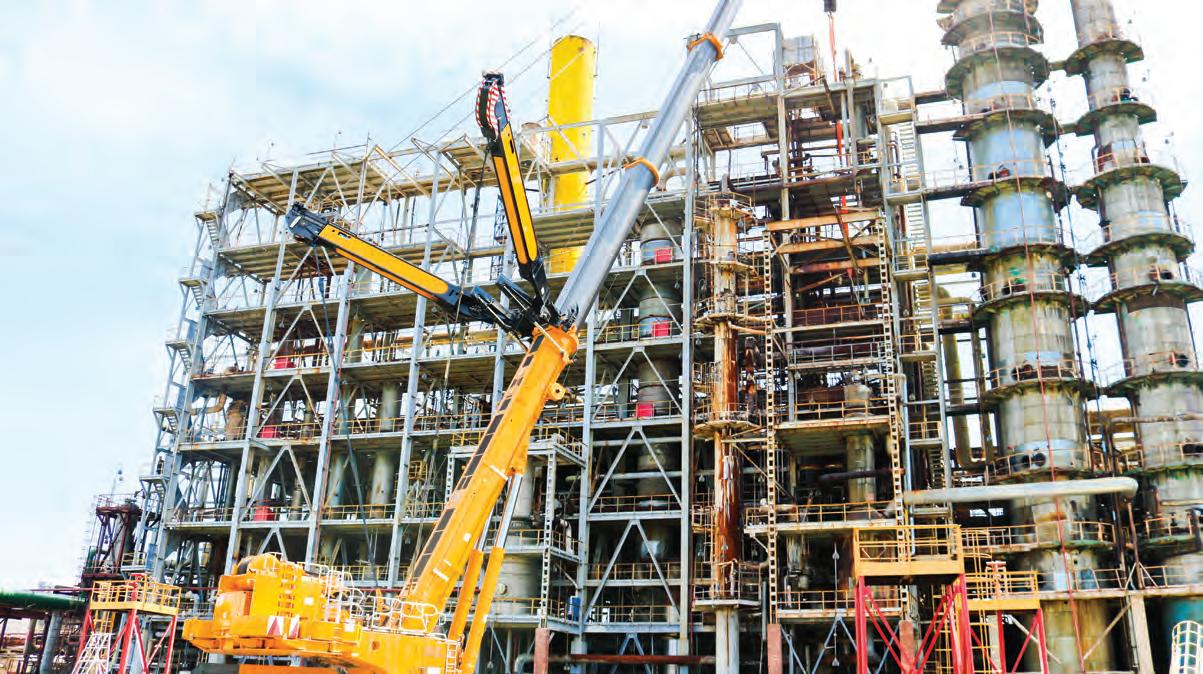
Here are the three primary changes made to the ITEP protocol.
• Removed the job creation and retention requirement
• Changed the way local governments affected by an ITEP project provide input into an ITEP application
• Shortened the timeline for local input

The order retains the requirement for local input but provides that it be obtained through a single parish committee made up of:
• Parish president or president of the policy jury
• President or superintendent of the school board
• Sheriff
• Mayor, if located in a municipality
• Non-voting committee members from the local assessor’s office and local economic development representation

• Miscellaneous capital additions remain excluded from the ITEP program CHECK IN
Two key measures from the original order remain in place.
• The abatement remains limited to 80% of the qualifying property value for the first five-year contract and approved renewal
We asked key industry leaders to provide their insights into how the new ITEP protocol is going. Here’s what they shared.
“The removal of the jobs creation and retention requirements is important. At the initial stage of planning a large-scale capital project, it is sometimes unclear just how many permanent jobs it will create …. additionally, very large and expensive modernization and capacity improvement projects were excluded (in the previous ITEP framework). This simplistic calculation missed the point of ITEP as an economic incentive to make large investments.”

—TOM YURA, vice president of operations – Americas Mitsubishi Chemical Group, Geismar

“… There will still be multiple state and local agencies that a company making application must seek approval from; however, the timeline is shorter and that is helpful. Projects must now gain approval before beginning construction and that may help provide clarity to governmental decision makers.”
—CONNIE FABRE, president & CEO, Greater Baton Rouge Industry Alliance
“With the opportunity to have the Louisiana Economic Development overrule a decision by a local body, the impression (among public bodies) is that authority has been taken away from locals.”
—Calcasieu Parish public body comments, according to JIM ROCK, executive director, Lake Area Industry Alliance, Lake Charles
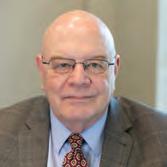

“One major change by the governor is that the job creation element was removed and only the capital investment is considered. We have heard mixed reviews on this from some of our local officials. However, there are times that a project will not create new jobs, but the improvements will solidify the industry for 15 to 20 years.”
—GEORGE SWIFT, founding president/CEO, Southwest Louisiana Economic Development Alliance
“I think it clearly has accelerated the process. I think the new process is one that would yield good results for Louisiana’s economy.”
—GREG BOWSER, president & CEO, Louisiana Chemical Association
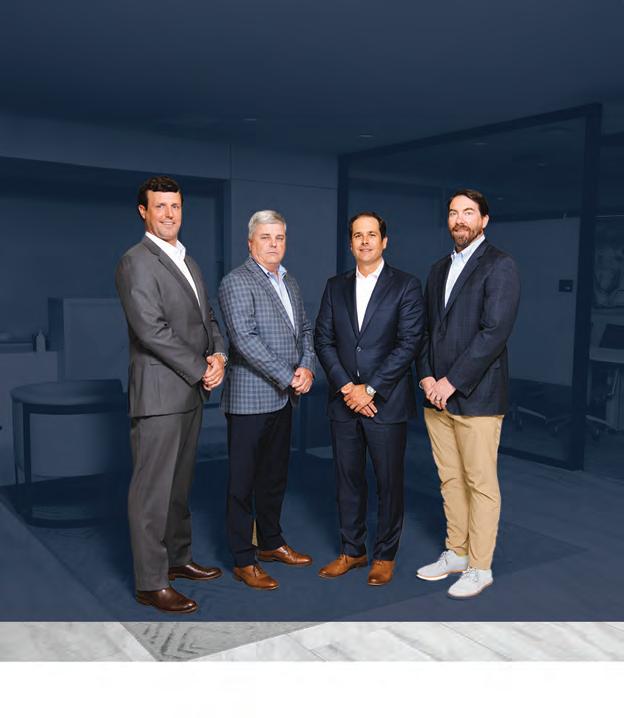
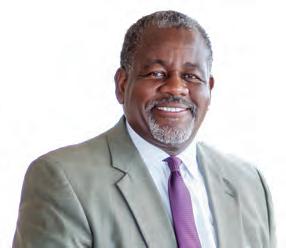




During a scheduled outage, Deep South was tasked with replacing two coke drums at a refinery. The new drums each weighed 452,800 pounds and were 96 feet long and more than 19 feet in diameter comparable in size and weight to the old drums. Completing the replacement within the window of time and in tight confines required precise logistics, specialized crane configurations, and multiple means of transport.
A year prior to the outage, Deep South received the new coke drums from a ship at the Port of Houston and then barged them to a dock on the Calcasieu River in Louisiana. Once on location, the coke drums were rolled off of the barge and staged using the Deep South’s 440-ton Terex-Demag CC-2400-1 with a 177.2-foot main boom, counterweights and a tail crane. Each drum was erected into the vertical position and placed in a jig stand to add insulation.
To allow the refinery unit to keep running at full capacity until unit shutdown, the crane had to be assembled offsite and moved into position when ready—an operation that Deep South had never done. Performing this move required significant cooperation between the project engineering and VersaCrane design engineering teams to determine a composite center of gravity and ensure stability. The transport of the crane from its assembly/staging position to its final lift position took approximately one hour.
After the unit shutdown was complete, the Deep South crew moved the fully-assembled VersaCrane TC-24000 into the final lifting position with the boom in the air—a company first—to begin the derrick cutting and coke drum exchange. Once the new coke drums were placed, the derrick structure was reset. So as not to delay unit start up, Deep South transported the more than 1.6 million pound fully-assembled crane back to a nearby laydown area for disassembly and demobilization.
We put the multi in multimedia...

WE PUT THE MULTI IN MULTIMEDIA
Digital Marketing
Visual Production




Award-winning, nationally recognized media production and creative marketing along side the trusted media brands you know and love.
Digital Marketing
Strategy
Brand Equity
Events
Creative Services
Custom Publishing
Video Production
Custom Leadership Training

& Events
Scan to learn more about our awardwinning, nationally recognized media and creative marketing services along side the trusted brands you already know and love.
Scan to learn more




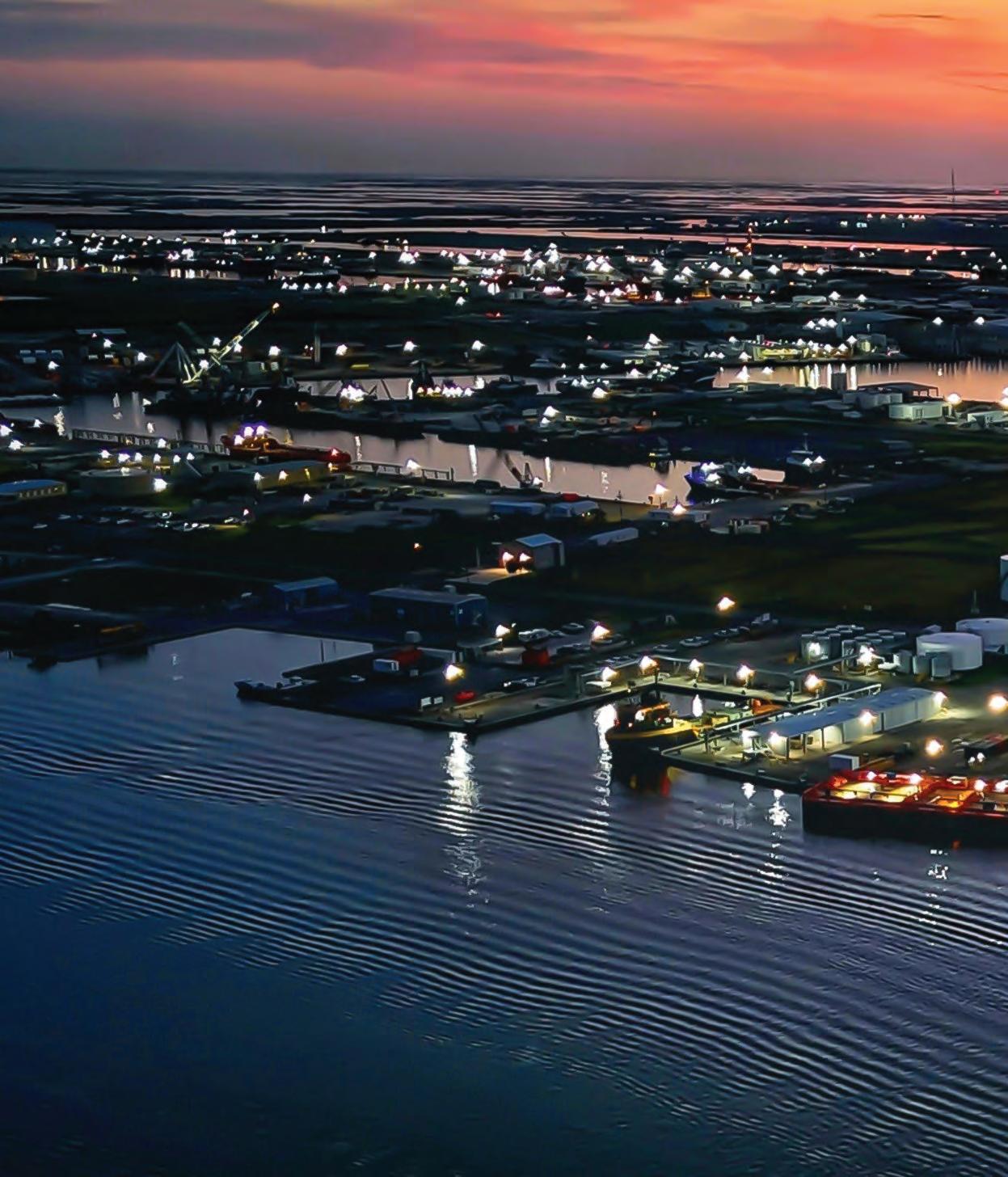
This Louisiana offshore hub is redefining itself for an ‘all things energy’ future.
BY SAM BARNES
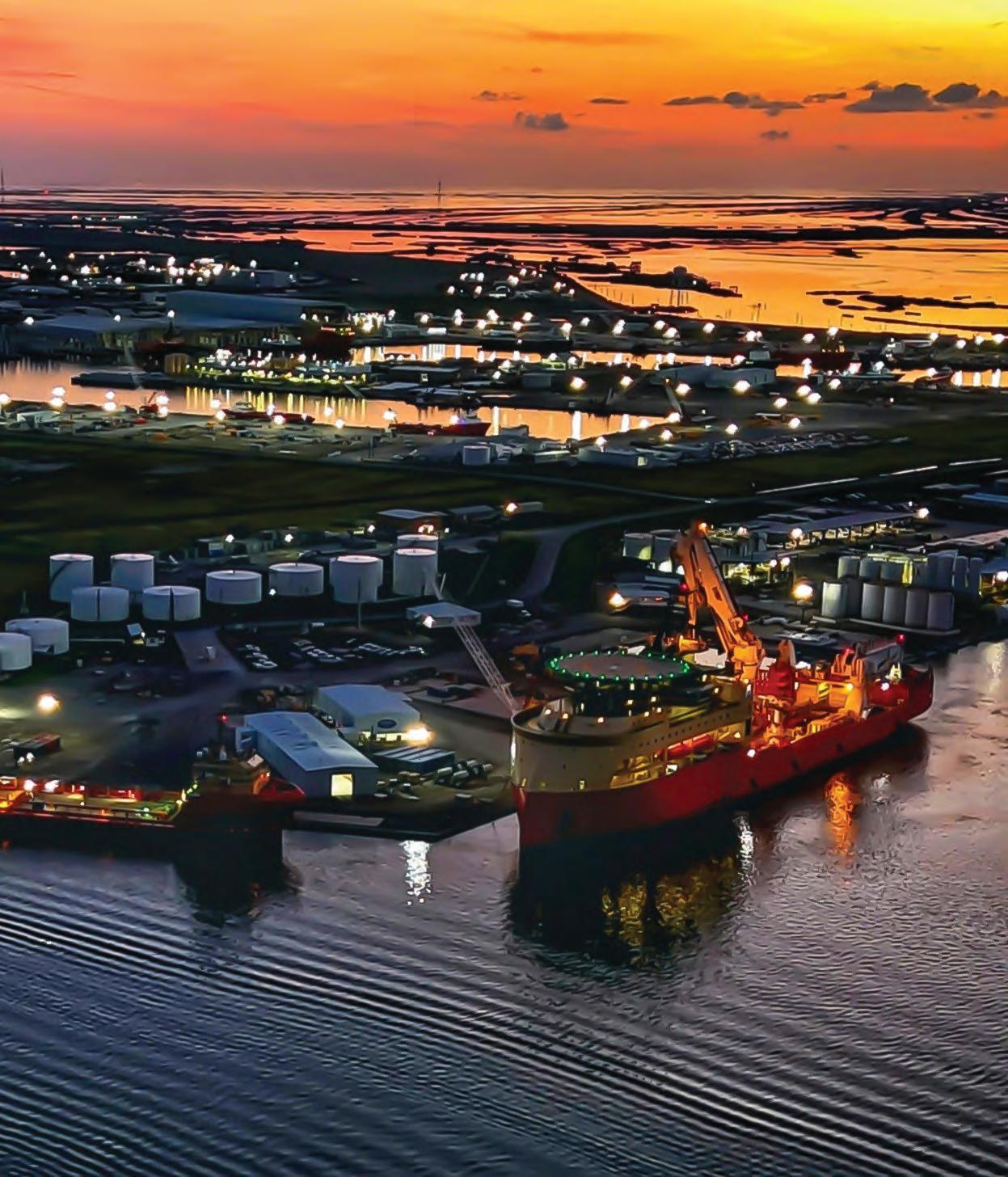
“Whatever type of energy we’re talking about, if it happens offshore, we’re going to play a role in it.”
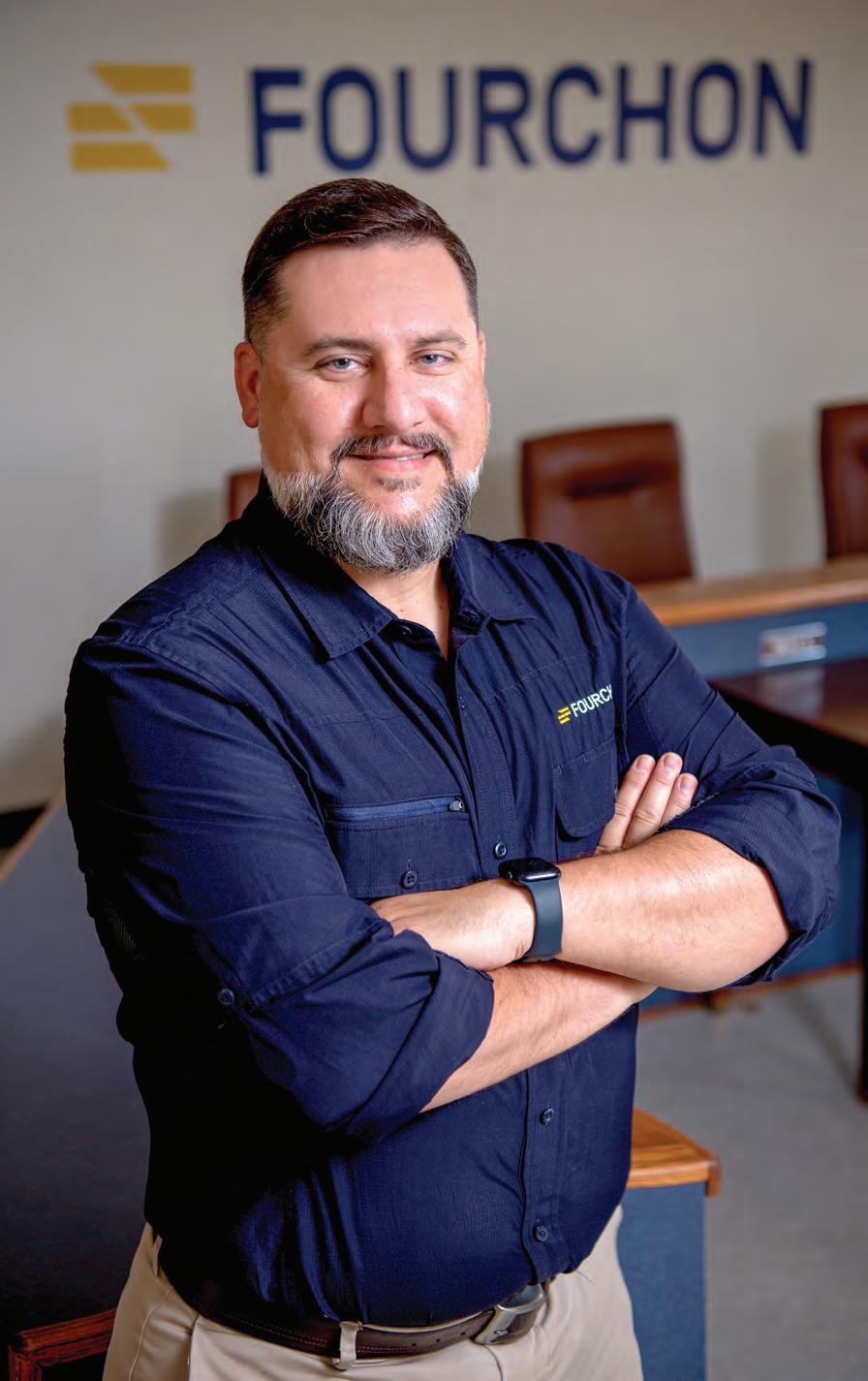
CHETT CHIASSON, executive director, Greater Lafourche Port Commission
Chett Chiasson isn’t interested in competing with any of Louisiana’s other ports.
There’s really no need, since as executive director of the Greater Lafourche Port Commission he’s chasing a distinctly unique holistic vision for Port Fourchon.
Situated a mere stone’s throw from the Gulf of Mexico, the port has always been intimately tied to Louisiana’s offshore oil and gas industry—servicing more than 95% of all Gulf deepwater activities.
But these days, Port Fourchon is evolving, intentionally pursuing a more diversified agenda with a focus on all things energy, now on the verge of becoming home to Louisiana’s inaugural wind turbine.
“You won’t hear me talking about cargo and containers–that’s not at all what we’re about,” Chiasson says. “We’re not looking at competing with our brethren across Louisiana.”
It would be an understatement to say that the port and its tenants have endured their fair share of storms, both literally and figuratively, over the last 10 years. When the oil market bottomed out from 2014 to 2016, they were each faced with a difficult decision: Evolve or dissolve.
Then came the COVID-19 pandemic and a devastating blow from Hurricane Ida. Employment in the area dropped from above 100,000 in 2014 to a bottom of 81,000 in 2021.
“That was a mother of a hit,” says economist Loren Scott with Loren C. Scott & Associates in Baton Rouge, who currently forecasts employment in the area to slowly, but steadily, rise to 89,000 by 2026. “Since 2021, they’ve begun to recover, but they’re still a long way below where they were in 2014.”
To survive, Port Fourchon’s tenants have done whatever it takes to stay relevant. Several companies diversified into non-oil and gas related work or shifted into the maintenance and repair side of things.
Edison Chouest, a firm that
owns and operates some 300 supply boats servicing the offshore industry, now builds to service the offshore wind industry and other vessels. Bollinger Shipyards, a major shipbuilder in the region, now has a long-term contract with the U.S. Coast Guard to build Fast Response cutters. And marine construction firm ThomaSea has shifted beyond the oil and gas market by fabricating research vessels and brown-water barges.
Port Fourchon itself has become particularly adept at navigating the frustratingly slow and tedious waters of state and federal regulations to fund a variety of infrastructure and dredging projects, while also adopting an “all things energy” mindset.
As a result, they’re evolving into
a testbed, of sorts, for innovation as they pursue investors in offshore wind, hydroelectric power, LNG, coastal restoration and offshore platform fabrication and decommissioning.
It plays into Chiasson’s mindset of holistic resiliency, whereby industry and the environment aren’t competitors, but collaborative partners.
LNG–who hopes to build an LNG export facility on port property–credits Chaisson’s evolutionary vision for growing the port in the face of some rather daunting odds.
15,000
Number of people per month flown to offshore locations supported by Port Fourchon
“They work very well together,” Chiasson says. “We all must live in the same happy world. Bottom line: We want a good economy, good environment and the ability to provide energy.”
Jonathan Bass, CEO of Argent
“What was Port Fourchon 15 years ago? What has Port Fourchon become today? It’s a completely different animal,” Bass says. “Chett’s strength is that he goes out there and does the heavy lifting. I’ve seen him in Washington D.C. more than Louisiana. He’s out there pushing forward with his vision.”
Christy Zeringue, incoming
“[Port Fourchon] has been cutting edge on their designs for the future state of what a wind port could look like.”
JAMES

CEO of the South Louisiana Economic Council in Thibodaux, didn’t hesitate to ask Chiasson to become the council’s board chairman after assuming her new role this fall following the retirement of Vic LaFont. “I knew exactly who to call,” Zeringue says. “He’s a visionary, a pioneer in this energy addition space.”
She says it’s Port Fourchon’s comprehensive approach to energy that is catching everyone’s attention. SLEC works with Port Fourchon as a liaison and facilitator. “They’re leaders in the energy space. They’re adding a land-based windmill at the port … how many other places can say that they’re doing that? How many ports?
“My challenge is that we need to tell our own story … that way

we can set the narrative about how uniquely poised we are to bring in all these different energy industries. And that we have a skilled workforce that can either be retrained or reskilled, so they have the certifications they need.”
Chiasson and the port were in the process of developing a master plan when the oil market bottomed out a decade ago—a painful hit that only served to accentuate the need for a new strategy. The contents of the plan are now being played out, with just more than $270 million in capital projects scheduled over the next two years.
A few of the more significant include:
• The development of Fourchon Island, a proposed deepwater port south of the existing facilities. A total of $200 million is projected for the development, which will focus on offshore wind and offshore rig repair, refurbishment and decommissioning. Leases have already been signed with C-Logistics, Bollinger Shipyards and Gulf Island Shipyards. Permits are expected later this year.
• The purchase of 850-acre
Caillouet Island, which will provide unrestricted access to Port Fourchon Island and be supported by a new Fourchon Bridge. The port is also donating 165 acres to the state for the creation of a Coastal Wetlands Park. The $700,000 attraction is set to begin construction in late 2024 and will include an elevated viewing tower.
• The $1.1 million installation of Louisiana’s first wind turbine by Gulf Wind Technology in Avondale. The 200KW to 300 KW of power generated by the
turbine will be used for the port’s operations center and the Coastal Wetlands Park viewing tower. Construction of the turbine foundation is set to begin late this year.
• A new $4.3 million, 6,000-square-foot terminal at South Lafourche Leonard Miller Jr. Airport, which is under the port’s jurisdiction. The airport supports numerous helicopter and fixed-wing flights and is used heavily by the offshore oil and gas industry.
“Closely related to the port is a $411 million project by Entergy to construct the Bayou Power Station,” Scott says in his recently released Louisiana Economic Forecast. “This will be a floating
natural gas-powered station to provide power to Port Fourchon, Golden Meadows, Leeville and Grand Isle.”
From atop a barge across from a substation in Leeville, the 112 MW power station would provide much-needed redundant power.
“This will give them the ability to provide more resilient rapid startup capability and give us a more reliable and resilient power grid,” Chiasson says.
The port executive is particularly excited about recent successes in garnering federal funding for dredging activities that will ultimately accommodate a wider range of tenants.
“We’ve been finalizing all our approvals and working with different agencies for an initial deepening project that will take us from 27 to 33 feet. That should start before the end of the year,” he says. “It will allow our tenants to be more efficient in serving the larger vessels that are already using the port.”
More importantly, potential funding from the federal Water Resource Development Act could facilitate the dredging of the southernmost section of Bayou Lafourche to a depth of 50 feet, critical to the development of the Fourchon Island deepwater port and the proposed Argent LNG facility.
“Fortunately, about half of Fourchon Island is already under lease to Bollinger Shipyard, Sea Logistics and Grand Isle Shipyards,” Chiasson says. “By having it leased, we can go to the Corps of Engineers to demonstrate the need for the 50-foot draft. You’ve got to have the chickens before you can build the coop.”
Once permits are received, it will take the port nearly a decade to create the island, as the project calls for transforming about 900 acres of marshland into a new 500-acre development.
The port administration is also waiting on another supportive infrastructure project: A 9-mile
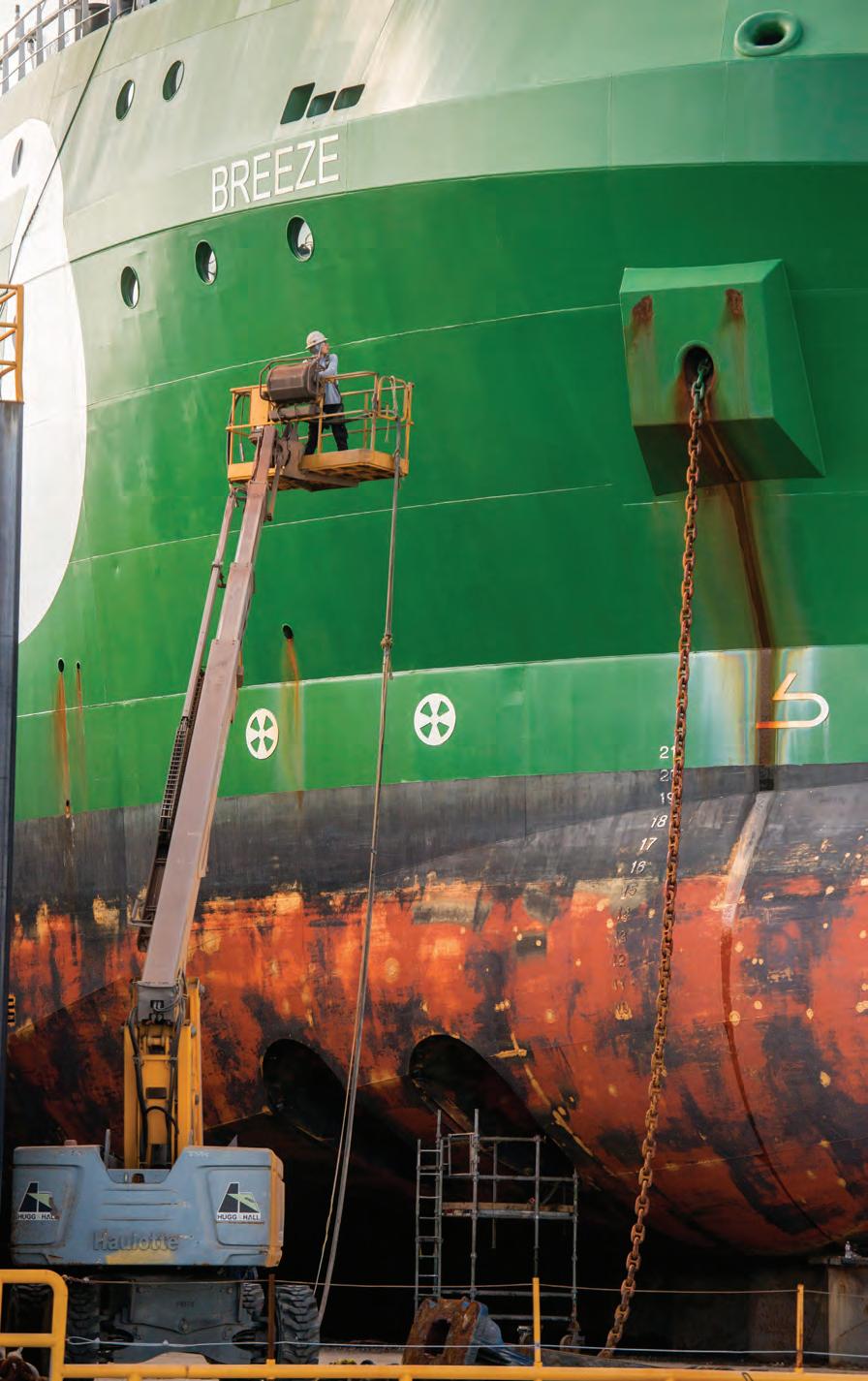
stretch of elevated LA 1 leading to Port Fourchon, set for completion in late 2027. “That is a major piece of infrastructure that will provide long-term resiliency for the port and for accessing the port,” Chiasson says.
Port Fourchon’s willingness to embrace all things energy has led to an implausible partnership in recent months. By year’s end, Gulf Wind Technology expects to begin constructing the foundation for the state’s first wind turbine at the port’s Coastal Wetlands Park.
The 187-foot-tall turbine will collect data and potentially power the port’s nearby emergency operations building.
“When I found out the port had an appetite for embracing renewable energy, we hit it off,” says James Martin, CEO of Gulf Wind Technology in Avondale. “Chett talked about the vision he
had for the area, and we began performing a wind assessment and working with the port to determine the right location. They’ve been cutting edge on their designs for the future state of what a wind port could look like.”
Earlier this year, the turbine and its components arrived at Avondale Global Gateway after a transatlantic journey from Ireland. Since then, Gulf Wind Technology has been testing the technology in a wind tunnel at its facility.
peak wind events.
Percentage of the nation’s oil supply in which Port Fourchon plays a strategic role
“The project is also demonstrating that the port can handle the components of the turbine, such as the tower, gearbox, generator and blades. We wanted to showcase that you can import, store on site etcetera,” he adds. “The aim for this turbine is that it’s going to have new technologies installed on it on a rotating basis.
Every season we might put a new set of blades on it, or we might put new sensors on it.”
is equally valuable.”
Once it’s operational, Chiasson hopes to showcase his port as a national leader in the servicing of offshore wind power. “If offshore wind does take off in the Gulf, we certainly believe and know that Fourchon is going to play a role in that industry because of the supply chain that already exists and the expertise we have in servicing offshore industry,” he says.
“Our objective is to install a technology demonstrator turbine at Port Fourchon,” Martin says.
“It is an example of a small robust turbine that we are going to adjust so that it can operate in the low wind speed environments of the Gulf and be resilient against
Martin expects the turbine to be producing power by the end of Q1 2025. “But there’s really no rush … we’ll have just as much enjoyment planning the project and putting the project together than we will in seeing the turbine spin,” he adds. “That’s the cherry on the top, but the journey
The port is also picking up a related tenant: Crowley Offshore Wind, which plans to spend $50 million a year through 2026, with the anticipation that it will service offshore wind developments in state waters.
“Businesses here are already working in the northeast on offshore wind projects (such as Block Island Wind Farm),” Chiasson says. “That expertise can transition easily. They’re still working offshore, still loading and unloading heavy stuff … it’s still part of



that offshore process and we have that expertise here. Whatever type of energy we’re talking about, if it happens offshore, we’re going to play a role in it.”
Port Fourchon’s biggest attribute is “location, location, location,” says Argent LNG’s Bass. “The port checks every box. There’s proximity to a pipeline … we’re only 1,500 yards from it, and there’s a community and a local government that’s supportive of the project. Then there’s the community … Chett can’t go a week without people in the community asking him about the LNG project.”
Bass expects his proposed $10 billion, 20 million tons-per-year facility to begin the FERC pre-filing process this fall. If approved–which could take up to two years–Argent would take delivery of its first module 18 months later, with subsequent modules following every one to two months until completion.
Earlier in the year, Argent tapped Worley as its EPC and development partner, with Worley’s initial focus being the development of site layouts and the selection of process technologies. Argent also selected GTT’s cryogenic membrane containment system for the transport and storage of the LNG.
Bass expects about 1,000 permanent jobs to be created by the facility, without another 3,500 construction jobs over a six- to seven-year period. He admits that the project must first overcome some serious headwinds, principally the current federal LNG pause, “but I think we’ll get past all of this anti-gas mentality … it’s the only immediate lever they can pull that’s better than coal.”
Tommy Faucheux, president of the Louisiana Mid-Continent Oil & Gas Association in Baton Rouge, says Port Fourchon’s willingness to accept all forms of energy will undoubtedly create
jobs in the long run.
“A lot of those service companies are going to need opportunities to grow, expand and diversify,” Faucheux says. “And at Port Fourchon, they’re the world’s experts in operating in the Gulf. If they can service the oil and gas industry, they’re absolutely capable of servicing offshore wind or something else.
“I think it’s great for Louisiana business, because they’re playing a critical role in the industry’s success at home. It creates long-term job protection.”
But as projects ramp up, it could serve to exacerbate a lingering and persistent problem for the Bayou Region: an alarming lack
of workers. “There was a large segment of the population that just threw up their hands and said I’ve had enough after Hurricane Ida,” Scott says. “And I’m sure Francine, although not as bad, will reinforce that a bit.
“Gulf Island Shipyards was forced to hire international crews to work its offshore rigs,” he adds. “They’re having to fill these jobs somehow. The jobs are there, but they’re having a hard time finding people.”
SLEC’s Zeringue agrees that it’s the workers, not the jobs, that are scarce. That’s why workforce development has become a particularly important focus for the council in recent years, in addition to business retention and recruitment.
Faculty members from Nichols State University’s College of Business Administration and Fletcher Technical Community College are on the SLEC board to facilitate the workforce discussion. They also get input from South Louisiana Community College. “Through their collaboration,




they’re able to quickly put together programming for maritime management, welding certifications, etcetera, to meet the needs of industry.
“We have meetings with them where we bring in our industry partners to find out where the gaps are,” Zeringue says. “When the industry folks can tell our higher education folks where the gaps are, as well as how much they’re offering in salaries, that generates a lot of interest. They’re also helping fund some of the training through donations, or in-kind donations, to facilitate the training.”
Chiasson says irrespective of the challenges, there’s palpable
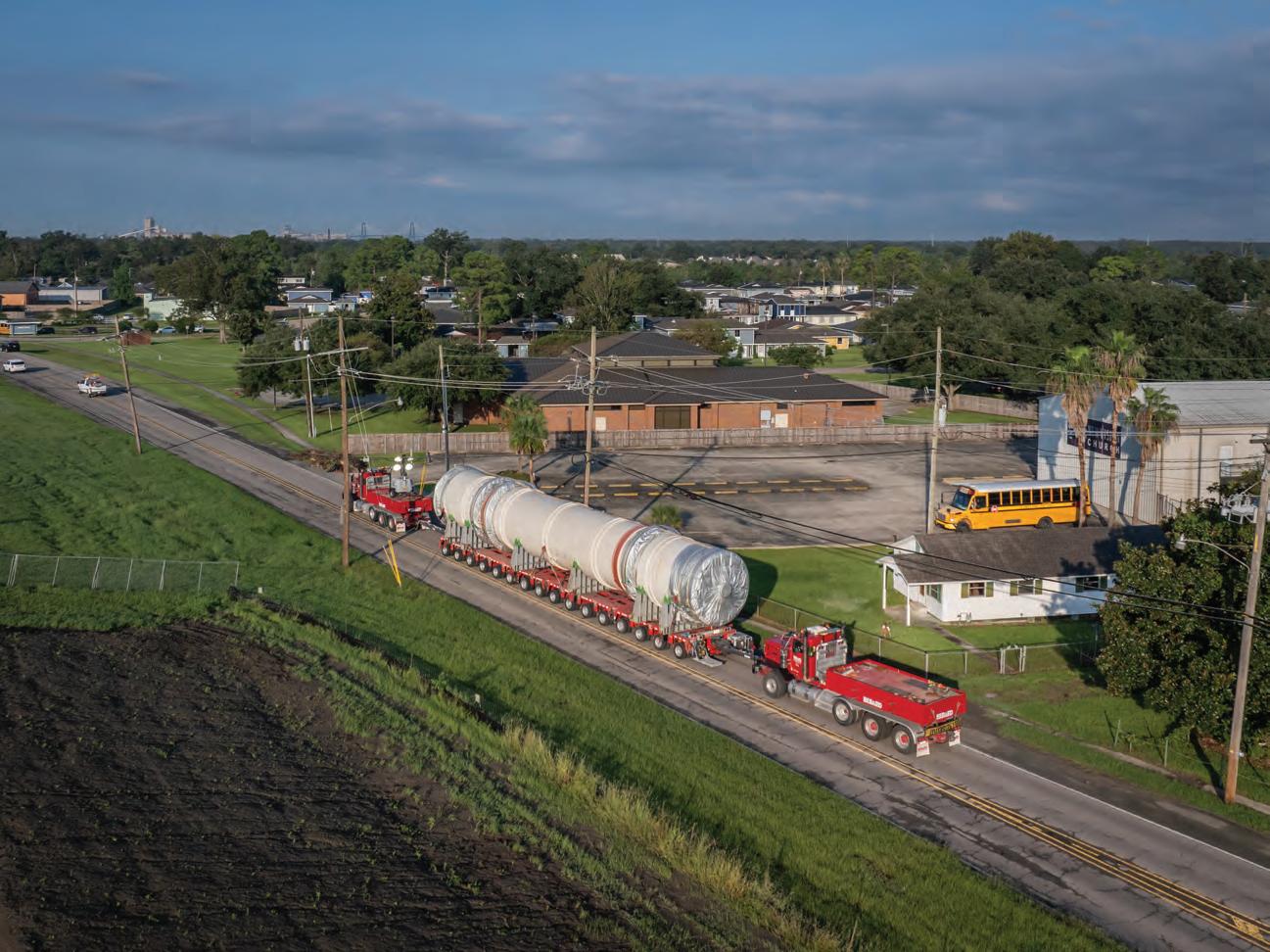
Louisiana’s five deep draft ports on the Lower Mississippi River represent “one of the busiest port complexes in the world.”
In a coordinated effort, these five ports have commissioned an independent firm to develop a market analysis and strategic plan to identify new cargo opportunities and expand international trade.
This historic cooperative undertaking will be led by Martin Associates Economic & Transportation Consultants under the
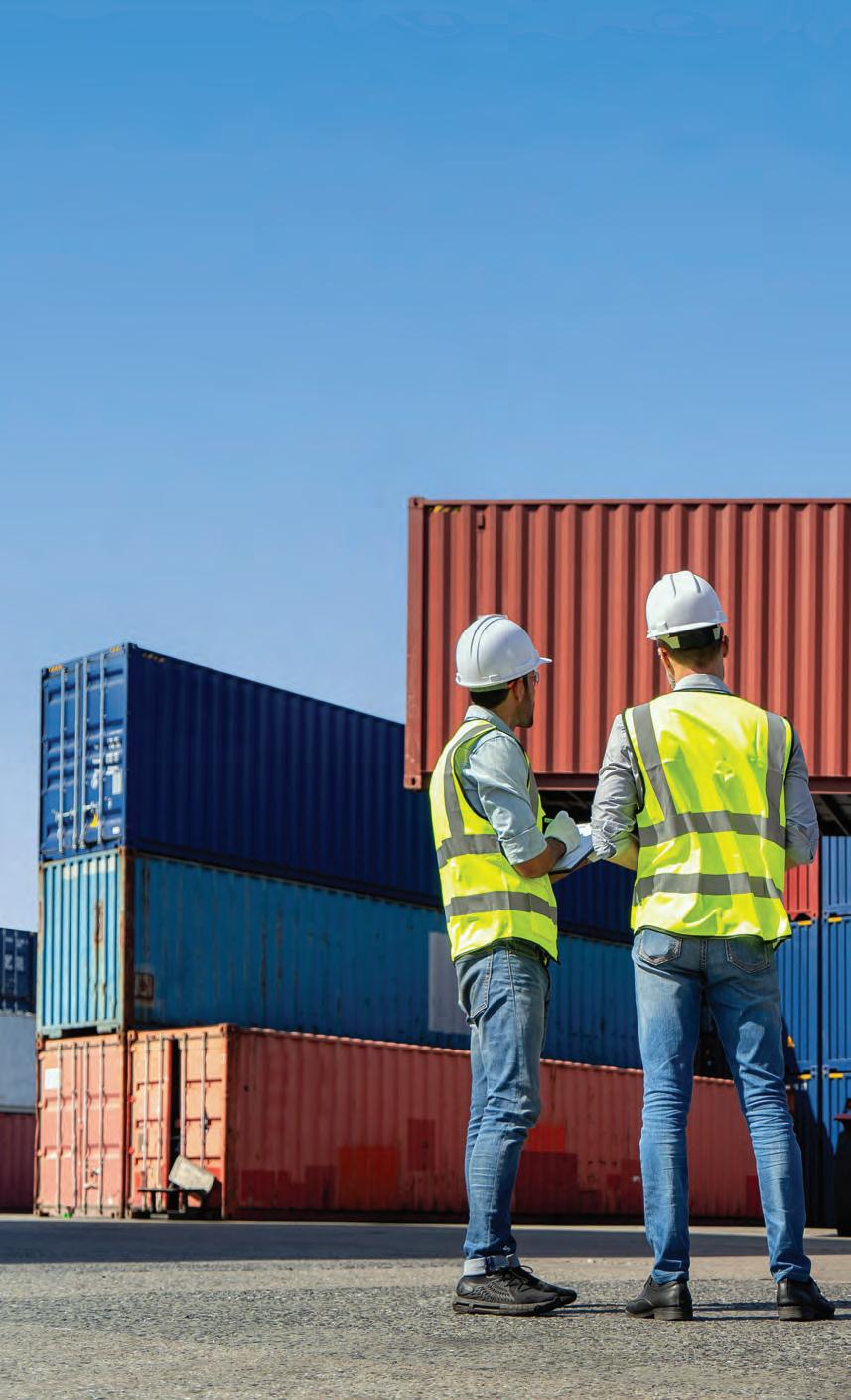
direction of the World Trade Center New Orleans. Cargos in the analysis include containerized cargo, break bulk and project cargo, as well as bulk cargo. Interviews with key maritime stakeholders, the market analysis, and logistics cost analysis will help create a cargo development strategy to help the five ports along the Lower Mississippi River to successfully compete regionally and internationally.

Brian Haymon CEO, Loadstar Product Handling

Evan
President & Managing Principal, Lee & Associates
WHEN THE ANCIENT Greek philosopher Heraclitus wrote that “The only constant in life is change,” he could just as easily have been talking about industry in south Louisiana thousands of years later. As 2024 winds to a close, the region finds itself in a constant state of adapting to complex challenges while grappling with how to harness new technologies.

With this dynamic situation in mind, 10/12 Industry Report invited five local thought leaders to share their ideas and insights surrounding the key issues facing the petrochemical industry today, as well as the opportunities that they see for their sectors and this area moving forward. From artificial intelligence and energy grid diversification to debt markets

and expanding development, these leaders offered real-life examples of how they are tackling pressing issues and revealed what is driving their successes as they work to position our state for future growth.
Comments made during the roundtable have been edited and condensed for clarity and for space. Read and share the online version.











Alliance Safety Council has your back. Our team of experts creates, delivers and manages compliance training so you can focus on what you do best. We’re your partner in building a job-ready workforce.





Your workforce is mobile, and so are we! We’re committed to making training as accessible as you need it to be. Whether it’s at home, on a phone or in a lab, our training meets you where you are — anytime, anywhere.
Mid-South OTI Education Center

The Mid-South OSHA Training Institute (OTI) Education Center, a consortium between Alliance and LSU’s College of Engineering, delivers occupational safety and health classes.
The Certified Occupational Safety Specialist (COSS) program caters to new safety practitioners, while the Certificate for Occupational Safety Managers (COSM) program is for experienced safety professionals. Both can qualify as CEUs for safety professional certifications.

Safety Awareness Fundamentals (SAF)
The SAF suite of computer-based courses provides standardized, awareness-level training on 40+ safety topics.


Pyvot Verify


Make any online training available 24/7/365 with AI-assisted remote proctoring technology.
HAZWOPER



24- and 40-hour courses include scenario-based lessons and handson, real-time air monitoring exercises.





In St. Gabriel, probably the most challenging issue is diversifying the energy grid. As facilities are trying more low-carbon products and even low-carbon energy, there is a transition that needs to happen. Diversifying the electric grid is not just about saving and creating jobs in St. Gabriel but in industry as a whole. It presents a variety of challenges and opportunities. The challenges are geopolitical and geo-economic; we don’t want instability in our region and throughout the world. But the opportunities are simply to create clean energy and to prevent leaks and flares and things of that nature. I embrace modernization and expansion that is an environmental win.

Lionel Johnson

Public opinion around the environmental impact of industry is a huge challenge, and it needs to be addressed with more education about recent advancements in monitoring and reducing emissions. Industry needs to stand up and speak about the measures taken to ensure the safety of our communities. We have the technology to be able to monitor and address almost everything that could possibly occur. Emissions have not led us to stop driving cars or barbecuing. There is a need for more balanced and informed conversations.
I think industry as a whole and the workers of our industry tend to stay silent on this, and there needs to be a groundswell to shift public perception.
—Kathy Trahan
OWhat do you see as the most pressing issue facing your industry as you move into 2025? I
think it is the political climate. There is opposition from those who want to inhibit growth of the industry, and often we ignore them, but I believe that is the wrong strategy. They are hitting social media. They are hitting schools. The kids who are hearing this today will be parish council members in 15 years. They will be mayors. They will be decision makers, and if they have been told for years that industry is bad, that is going to influence the future. I think industry is going to have to figure out a way to get just as assertive in its messaging. We have to get better at telling the good side of the story of the industry and debunking the negativity.
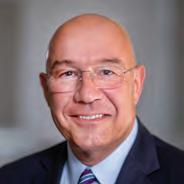
—Jerry Jones

Dne emerging issue is producing energy to support growth and new technology. AI, for example, requires huge amounts of energy. We need to be open to new sources like Small Nuclear Reactors (SMRs) and other alternative forms of production, even as we continue to expand and harden the grid. A related emerging issue is competing for talent. Too many younger workers see ours as an industry of the past. We need to showcase our technology and commitment to produce clean energy. Local communities also need to see us not as old-world polluters, but as drivers of economic growth that can improve education, healthcare and other outcomes, especially for those living close to industrial areas. We have to increase our investment and present ourselves in a much more positive light, and then show people the good we are doing. We must change the narrative.
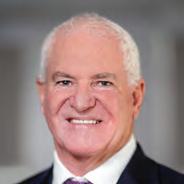
—Brian Haymon
ebt markets continue to be a challenge for us. I work with companies that would be service providers to petrochemical, and what they need is warehouse space. Getting warehouses built is becoming more and more of a challenge because the debt markets are very tight right now. There is plenty of equity in the market for deals, but debt has been a challenge. Getting funding for speculative development wasn’t that big of a challenge 24 to 36 months ago. Now, it’s kind of like looking for a needle in a haystack. Population decline is also a real challenge, and it goes hand in hand with the ability to attract debt into the market. A lot of institutional groups want to invest capital or deploy debt in areas that are experiencing population growth. Louisiana is missing out on a huge opportunity to be a strategic location for supply chain logistics for companies, especially with the new container port south of New Orleans. Look at our interstate connectivity, our rail connectivity. Baton Rouge is the only MSA along the I-10 corridor that has three north/south interstate corridors within 80 miles of it. I like to say that I-10 and the Mississippi River, that’s Main and Main and we are sitting on top of it. So there is a ton of potential there.

—Evan Scroggs















It’s amazing how AI has changed the way business is done just in the last 24 months. We use it for market research and forecasting. We’ve used it to help give us an idea about future tenant demand. Probably the most compelling way I have seen AI implemented locally is to help solve supply chain and logistics questions. You can provide it inputs— where the product is manufactured, who the end consumer is, which ports it is being exported from, where it’s being imported to, how many warehouses your supply chain infrastructure allows for—and it can help determine the best footprint or the best location based on those inputs. That’s been pretty fascinating to see. But we are just scratching the surface.
—Evan Scroggs

Ithink from an environmental standpoint, it is going to make us better at monitoring emissions. When you have a 400-mile pipeline, a lot of things can happen in 400 miles, and I think AI is going to help us minimize fugitive emissions. I think it is going to help us forecast maintenance needs. A piece of equipment has a lifespan, and I think it is going to be able to monitor wear and tear and give us a better ability to decide when it’s time to take a piece of equipment out of service. But we must address the energy demands that AI is going to require. The great news for Louisiana is that natural gas is still a clean way to produce electricity. Louisiana has all the natural gas we need, and we can build all the power plants we want. But still that takes time, and we are going to have to have that energy. The other thing that I think will come with increased AI is increased cybersecurity issues. Where there is opportunity, there are bad guys that are going to take advantage of it. You have to address both of them simultaneously.
—Jerry Jones
LAoadstar has adopted AI to improve our safety and operating performance. Each month, our supervisors conduct hundreds of observations of employees performing tasks in the field. We used to collect the paper observation forms and look for trends. Now the observation data is collected electronically and fed into an AI software that identifies gaps—the people, tasks or other things we are not observing as often as we should. The software generates a weekly to-do list for each supervisor so our observations are more comprehensive and our management has a more accurate picture of how our guys are performing in the field. In another AI application, we hired a local firm, DisruptREADY, to develop AI software that applies complex pay and billing rules to invoices and payroll. It used to take one person three days to process a two-week pay and billing cycle. Now it takes about three hours. It’s been a game changer in terms of efficiency.
Artificial intelligence has become an essential technology in the corporate world. How are you incorporating it into your own industry?


—Brian Haymon
Ibelieve government has a role to play. I have projects that are in place that I call legacy projects. I know I won’t see them through, but I know I will get them started. I think our state leaders need to have legacy in mind. We have to have a futuristic approach. I completed a Ph.D. program in public policy, and the last year and half, I saw the university grapple with how to handle AI. So not just in this industry but in all industries, I think we need to start embracing it, understand the opportunities, and understand the challenges with security. Our statewide leaders have to have the foresight to address these things together, understanding that with term limits, they won’t be the one that might get all the credit for it, but it will be a part of their legacy.
I has become an essential component in our operations. “AI is going to take your job” is what you hear, but the people who know how to use AI will be able to do the work of two to three people. We use human-assisted AI in our online training courses for facial recognition and the flagging of anomalies. Prior to COVID, we had this technology ready for the power sector, because it is so geographically dispersed. Since then, we have transitioned it to other sectors. With human-assisted AI, humans are still an important part of the process. In our solution, AI flags potential deviations from the rules during online training, but humans make the final call on whether the student will get credit for the course based on testing parameters set by the course provider.
—Kathy Trahan

—Lionel Johnson





St. Gabriel is a city with many advantages. Our public services, our police protection, our youth programs, our senior programs, and our economic development efforts are just a few of the benefits that we take seriously.
Uniquely situated to partner with world class industry, our state’s Capital and our region’s educational powerhouses, St. Gabriel offers our resident’s a lifestyle unlike any other in the Capital Region.
The residents of St. Gabriel, both corporate and residential, have an impact on the city as a whole. Our partnerships are leading us to become a city of excellence and achievement moving forward.



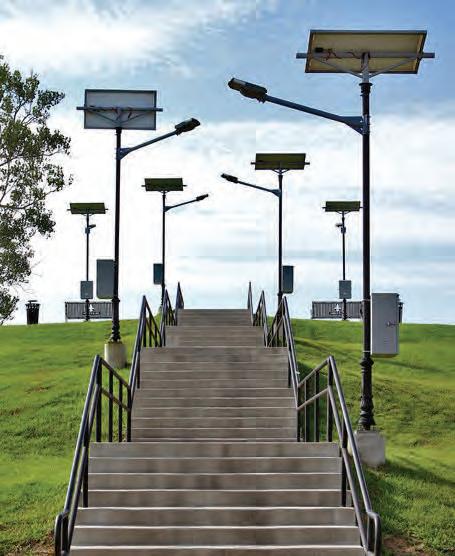




One thing that has become a common thread over the last year goes back to workforce availability. Companies can’t find the people they need. That was not a problem pre-COVID, at least not at the level it is now. On the positive side, there’s the rapid expansion of carbon capture utilization and storage. CCUS can be a gamechanger for Louisiana. That wasn’t on the horizon 10 years ago. And it picked up in the last year like I never expected. So I think we see some challenges in 2024, and I also see some great opportunities that are out there. I am learning more now than I was 20 years ago because there is just so much more that you have to absorb. This is probably one of the most exciting times in the energy industry, and I think Louisiana stands in a position to be a major player in this game.
—Jerry Jones

We continue to see younger workers emerging as leaders and decision makers. They bring their own expectations for our industry and its future. Some have told me they see our industry as too conservative and risk averse. They sometimes encounter an attitude of “if it ain’t broke” that can stifle creativity and innovation. In the site logistics space where Loadstar works, barges, railcars and trucks are handled much the same as they have been for decades. Change is surely coming. Will our industry adapt, or will we lead? This is one reason why innovation is a core value at Loadstar. We have introduced virtual reality and AI, and we are just getting started. We want to help our customers figure out the changes that work best for them and then go make it happen.
—Brian Haymon

Streamlining the onboarding process for our contractors has been one of our big wins. We work with the one resource that nobody can get more of—time. We look at every process and say, “How can we shave time off of this?” We measure by ZIP codes—where people live versus where they work versus where they train—to show the time and emissions we are saving them by training them where they are. At the same time, technology and the infrastructure to support online training has gotten better, so we are able to deliver richer training experiences. When we talk to industry partners and stakeholders, we look for that common thread—how we can eliminate redundancies and how we can provide them just-in-time resources that give them what they need.
What is the biggest change you have seen in your sector so far in 2024, and how has it affected your organization?


WI—Kathy Trahan
hen I started with Lee & Associates in 2023, we were really the only national commercial real estate company in town, and since then there have been a few other national groups that have opened offices in New Orleans. That is a big change. I don’t know if it has really affected our organization. I do think it is going to have an effect on smaller boutique brokerages that may run into limited resources and capacity to handle the research required to stay competitive. For us, it’s affirming that we were ahead of the curve and seeing where the industry was going.
think the biggest changes for us have been investment and development. Several local facilities are doing modernization projects and expansions. We have one new facility coming on board. All of them are environmentally friendly. We are talking about billions of dollars in investments right here in St. Gabriel. We have plastics. We have fertilizers. We have herbicides. We have insecticides. So we are talking about protecting crops, protecting people and protecting water. I embrace modernization and expansion that is an environmental win.
—Lionel
Johnson

—Evan Scroggs
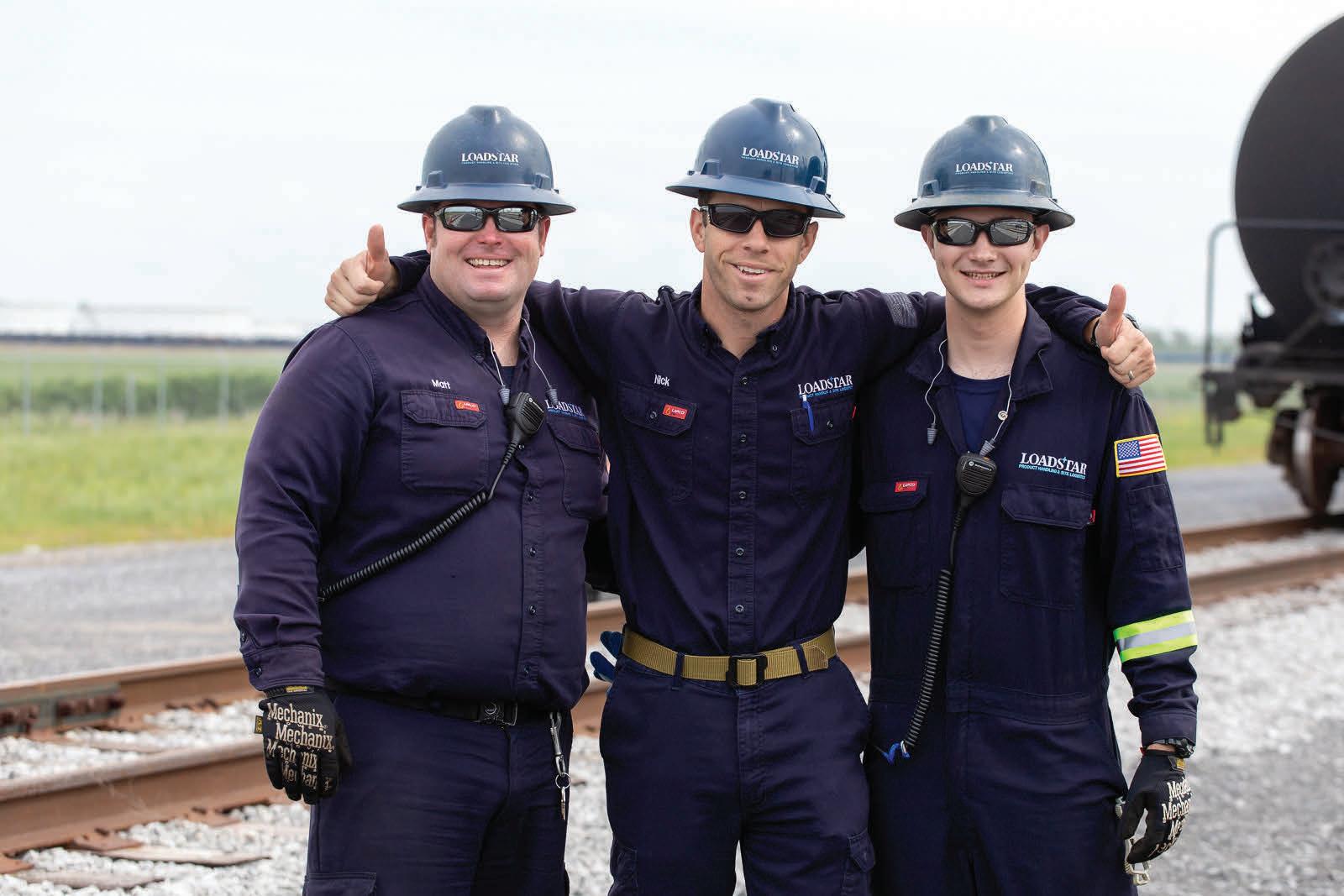
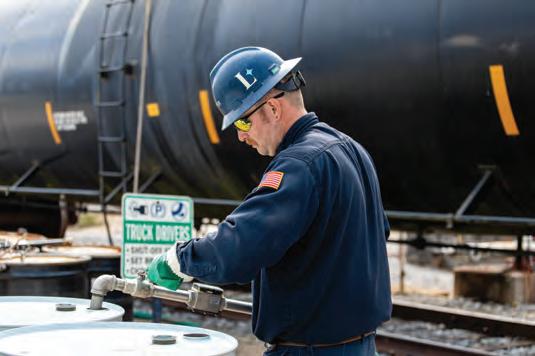
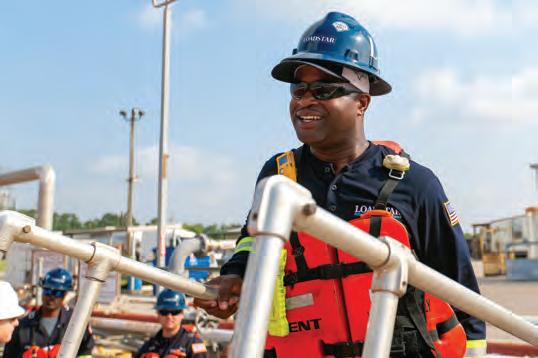
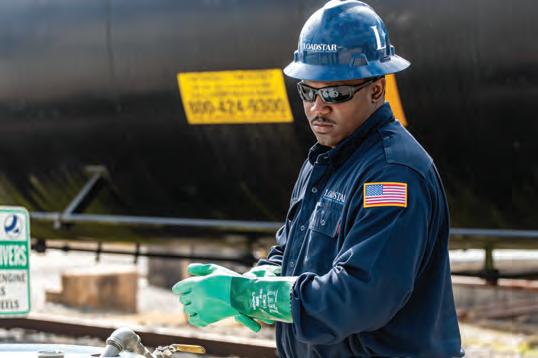
Loadstar provides product handling and site logistics services to the refining, chemical, and marine industries. We load and unload railcars, trucks, barges, and ships; we switch railcars; and we operate docks, warehouses, tank farms, rail yards, and other assets on behalf of customers. Our employees handle all classes of cargo including liquids, solids, and compressed gases.
Our people come first. As a Best Place to Work, we attract top talent that delivers the outstanding customer service that sets us apart. Together we are building a great company, one that will lead our industry for generations to come.
www.loadstar.com www.loadstar.com

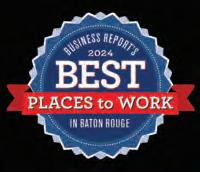

We are focused on utilizing technology and data that we have collected to help our members meet rapidly changing needs. We are going to continue to use technology to scale as an organization, and that scaling will provide additional data to feed that engine. We’re also going to be proactively embracing a userobsessed approach. How do we make it easy for people to access our training? Also, we are really seeing a big push for more just-in-time resources. How can we support our contractors as talent exits industry? With so many Baby Boomers leaving, there is a big gap that needs to be backfilled, and we want to collect that information and provide them with the resources they need to help get projects completed on time and on budget.
—Kathy Trahan

We are looking to add two partner-level brokers to our company over the next six months as we continue to grow. We are also going to be opening a New Orleans office in the next 12 to 18 months. Another focus for us is continuing down the I-10 corridor. We have an office in Lafayette, we are in Baton Rouge, and we want to lock down New Orleans, but we’re also looking over toward Mobile. There are a lot of similarities between the Mobile market and New Orleans and Baton Rouge combined. It is a port city, with a lot of trade through there, good infrastructure, and it’s a place that we want to focus on. So it’s all about continued growth, both geographically and by adding good talent and good brokers.
—Evan Scroggs
SFt. Gabriel is positioned where we have parcels of property that are wanted by industry. We still have enough green space for expansion and continued growth. We are positioned perfectly off the I-10 corridor and along the Mississippi River, and we can seize our role in meeting that demand. On the macro level, I see that as more jobs, environmental wins, and opportunities for increasing the quality of life not just for the people of St. Gabriel, but for the people who work and live in the region.

—Lionel Johnson
What

Ithink Loadstar will continue to enjoy healthy growth. Customers trust us to handle their critical operations safely, and we will do our best to continue to reward their trust. We will build on our work in VR, AI and other technology to develop creative solutions. Loadstar is honored to have twice been recognized as a Best Place to Work, and we think our ability to attract and retain great people will continue to set us apart. We are locally owned and operated, and we will remain that way for generations to come. We aspire to be an industry leader and to make our world a better place.

ossil fuels will always be a part of the equation in Louisiana, but we are going to have to see an all-of-the-above approach: fossil fuels, solar, wind, CCUS. And as a law firm, we are going to be players in all of that because that is where the energy industry is going. Lithium mining is going on right at the Arkansas-Louisiana border. We are getting several manufacturers that make components for lithium battery manufacture. There are opportunities in the battery world that Louisiana hasn’t even touched on yet. So We are looking at all sectors in energy, and it is ever changing. That is both exciting and terrifying.
—Jerry Jones

—Brian Haymon

BY SAM BARNES
Louisiana service companies and oil ‘majors’ renew their focus on offshore oil despite federal challenges.


Acomplex set of variables is driving a resurgence in the Gulf of Mexico. Despite a federal push away from fossil fuels, the Gulf’s major oil players are investing in new production platforms that will increase, or at least maintain, current production rates for several years.
Industrial Info Resources of Houston is currently tracking 97 offshore oil and gas projects totaling nearly $27 billion that are in the planning, engineering or construction stage.
“The majors are developing more projects than I’ve seen in the last five years,” says Gordon Gorrie, vice president of oil and gas research at Industrial Info.
“There are several new projects taking off … not just additional steel platforms but a lot of deepwater floaters and semi-submersibles. And most of that is offshore of Louisiana, not Texas.”
That’s welcome news for south Louisiana’s oilfield service industry. When the market bottomed out from 2014 to 2016, the rig count in the Gulf dropped precipitously from 60 rigs to about 14. Now, it’s around 20 to 22.
“There are a large number of production platforms going into the Gulf of Mexico, with 12 of them having just announced, or are very close to announcing, an FID (Final Investment Decision),” says economist Loren Scott with Loren C. Scott & Associates in Baton Rouge.
Shell PLC and Equinor ASA, who recently approved a 90,000 barrels per day oil and gas platform in the Gulf, said they would aggressively invest in exploration to continue production through 2050.
The deepwater Gulf of Mexico will also remain a key component of BP’s overall energy portfolio, even as it invests in the energy
“At $80 oil, the profitability is in drilling for oil, not in renewables.”
MIKE MONCLA, president, Louisiana Oil & Gas Association
transition, with a goal of increasing production to 400,000 barrels per day.
Technology is part of the reason for the resurgence. Chevron disclosed in August that it had pumped oil from its Anchor Oilfield at 20,000 psi pressures using specially designed equipment. BP has its own high-pressure technology and is expected to soon pump its first 20,000 psi well in the Kaskida Oilfield about 250 miles southwest of New Orleans.
“It’s like a whole new frontier has opened up,” Scott says. “What they’re doing out there, technologically, is more difficult than landing a man on the moon.”
Mike Moncla, president of the Louisiana Oil & Gas Association, says sustained oil prices are also fueling investment.
“The industry is commodity
Chevron is a prime player in deepwater exploration in the Gulf. Presently five Chevron-operated deepwater platforms in exist in the Gulf, and the company is developing two more.
driven, and for the last several years we’ve had $80 oil as an average,” Moncla adds. “Shell and BP have invested a lot in the renewables side, but recently they’ve decided to concentrate more on being profitable for their shareholders. And at $80 oil, the profitability is in drilling for oil, not in renewables.”
That’s grabbing the attention of Louisiana’s oilfield service companies. Prior to 2023, Danos Group in Gray had made a significant move into onshore work, particularly in the Permian Basin, but the ratio has recently begun to tilt back to offshore.
In March 2023, Danos acquired Wood’s offshore labor supply operations, then a year later Per-
formance Energy Services (PES) in Houma. “The Wood’s acquisition was a pure play in terms of investment in offshore production,” says Paul Danos, CEO of Danos Holdings, “and while Performance has some work in Israel, outside of that all of their work is offshore.”
As a result, Danos has retrenched itself squarely in the offshore market, with nearly 75% of its business now in the Gulf of Mexico. “Our recent acquisitions help us leverage our existing infrastructure and make us more competitive in that space,” Danos says.
Nevertheless, he remains “cautiously optimistic” about the future of offshore oil and its impact on south Louisiana service companies.
“The ‘cautious’ part comes from experience,” he says. “Our company has been around some 77 years, and we’ve moved through many oil and gas cycles, so being cautious just comes with the territory.
“And while there continues to be good opportunities, we need a federal government that wants to produce oil and gas in the Gulf,” he says. “If they do, there are companies that are still interested in this space.”
Many oil producers also point to environmental reasons for the ramp up in offshore attention.
A recent report by the National Ocean Industries Association, an industry group, asserts that greenhouse gas emissions associated with extracting a barrel of oil from
Operated assets (facilities)
Non-operated assets
Offices or facilities
Airbases
Marine shorebase
the Gulf are one-third lower than emissions from a land-based well. “It’s a combination of God-given geology and the small footprint that they occupy,” Danos says. “They’re producing a lot of barrels in very small and confined area. And they can stick it in a pipeline, not on a ship that burns fuel.”
The recent offshore surge seems to fly in the face of the Biden Administration’s attempts to curtail future investment.
The U.S. Department of Interior released its 2024-2029 National Outer Continental Shelf Oil and Gas Leasing Program nearly 500 days late and with the fewest oil
and gas lease sales in the program’s 45-year history. Only three lease sales are scheduled in 2025, 2027 and 2029.
“And there’s no guarantee that they’ll have those,” says Tommy Faucheux, president of the Louisiana Mid-Continent Oil and Gas Association. “With the couple of lease sales that we had recently, Congress had to force them to happen.”
As a result, 2024 will be the first year in the program’s history with no sales at all. “If you look at the long-range forecast for production, it’s going up but then it starts to tail off and drop,” Scott says. “The decline curve is much shallower than a shale rig, but it does decline. Unless you get more drilling, you’re going to see that decline in production continue in the Gulf.”
Industrial Info’s Gorrie says new offshore investment will only help maintain the current rate of 2 million barrels per day, as the more mature platforms are producing less oil.
According to the American Petroleum Institute, most of the oil currently being produced is from leases sold during the Reagan and Clinton administrations.
“That’s how long it takes,” says LOGA’s Moncla. “Just because there’s a lease doesn’t mean it’s going to be drilled this year. When they ink a lease, they have to do seismic studies, geological surveys and figure out the best place to drill, then it might take a year or two to get a rig. Then you’ve got the logistics of getting the oil or natural gas to the shore. It takes years.”
And while the oil and gas industry continues to innovate to maximize production at existing lease sites, “they’re doing it with the leases they have now,” Faucheux says. “We have to figure out at a policy level how to increase the number of leases in order to incentivize these companies to explore and produce for the next 10 to 20 years.”
Faucheux points to the upcoming Dec. 20 suspension of the National Marine Fisheries Ser-
“We need a federal government that wants to produce oil and gas in the Gulf.”
PAUL DANOS, CEO, Danos Holdings

vice’s “biological opinion”–used by federal agencies when permitting new oil wells–as another threat to production.
In August, the U.S. District Court for the District of Maryland ruled in a lawsuit brought by environmental groups that the NMFS opinion “underestimated the risk and harms of oil spills to protected
species.” The ruling creates uncertainty for oil and gas operations while NMFS completes a new biological opinion, as ordered by the court.
While it won’t stop Gulf of Mexico production, Faucheux says, “it will make it very hard to get new permits for any type of activity.”
That’s given pause to companies such as Danos, who remain wary about the future even as they prepare for a ramp up in work.
“Historically, the Gulf of Mexico has had a predictable regulatory market, relative to other places in the world,” Danos says, “but that has been totally undermined over the last two years.”
BY SAM BARNES
Louisiana’s multipronged push toward industrial- and utility-scale solar is making big waves.
First Solar’s Georges Antoun can hardly contain his excitement about the future of the state’s solar energy market.
What began as a trickle could soon become a tidal wave of new investment, and his photovoltaic solar panel manufacturing facility will take the lead as the industry’s biggest employer when it begins operating in New Iberia next year.
Antoun, the company’s chief commercial officer, hopes to dispel a common misconception about the solar industry–that it’s not a job creator. As evidence to the contrary, he points to the more than 700 employees who will be working at his New Iberia facility once it’s fully operational at the end of 2025.
The massive $1.1 billion, 2.4-million-square foot manufacturing facility will be capable of churning out more than a dozen panels per minute, with some 120 trucks coming in and out of the facility every day. “It’s wrong to say you don’t like solar because it creates fewer jobs than an oil rig,” Antoun says. “The University of Louisiana at Lafayette released a study that said for every direct job
the factory brings, it will create 7.5 indirect or induced jobs.
“And any time you put in a manufacturing facility, you have suppliers who build around you,” he adds. Case in point: Ice Industries, an industrial manufacturer and supplier, recently announced that it will invest $6 million to build a new production facility in southwest Louisiana that will “roll form” steel back rails for First Solar’s panels.
What’s happening in New Iberia is not an anomaly. Across the state, dozens of solar projects are at varying phases of development, and energy providers, private developers and the industrial sector are all gunning for more solar development as they look for practical ways to achieve renewable energy and net-zero goals.
Developers are taking advantage of funding from the Inflation Reduction Act to add solar projects across the U.S. at a record pace.
Installed solar capacity has grown 34% since Q2 2023, with more than 110,000 MW of projects now operating. Additionally, nearly 233,000 MW additional solar capacity is in development in
the U.S. through 2028, according to Market Intelligence data.
Antoun expects that Louisiana will become a strong player in the market, as its existing workforce can easily transition to the manufacturing space. “That’s a large part of the reason that we’re locating here,” he says. “We found that oil and gas skills easily transfer to the manufacturing side.
“As a state, we need to diversify and create resiliency so that we’re not on an up and down five-year cycle dependent upon one industry,” Antoun adds. “Also, without renewables in the state you’re not going to attract the data centers or the AI companies because they all want to be served by renewables.”
In recent years, the petrochemical industry has become a surprising bedfellow in the advancement of solar power. Frustrated by the pace of renewable energy adoption by local energy providers
such as Entergy, the Louisiana Energy Users Group, or LEUG, a decades-old coalition of industrial companies, received approval from the Louisiana Public Service Commission in June to begin investing in their own solar farms.
It’s a necessary move, the owners say, as it will enable them to more swiftly achieve their own net-zero goals. LEUG’s membership includes companies such as Dow Chemical, Chevron, Air Products, Georgia-Pacific, ExxonMobil, Honeywell, Monsanto, Nucor Steel, Phillips 66, CF Industries and BASF, among others.
Initially, they’ll be allowed to create their own source of renewable energy, but the energy still must traverse Entergy’s transmission lines and will be capped at 500 megawatts, ensuring they remain dependent on the utility. LEUG companies hope to eventually be allowed to bypass Entergy altogether, although that was not part of the recent LPSC decision. The move marks a pivotal point for utility regulation in a state that has

“As a state, we need to diversify and create resiliency so that we’re not on an up and down five-year cycle dependent upon one industry.”
GEORGE ANTOUN, chief commercial officer, First Solar
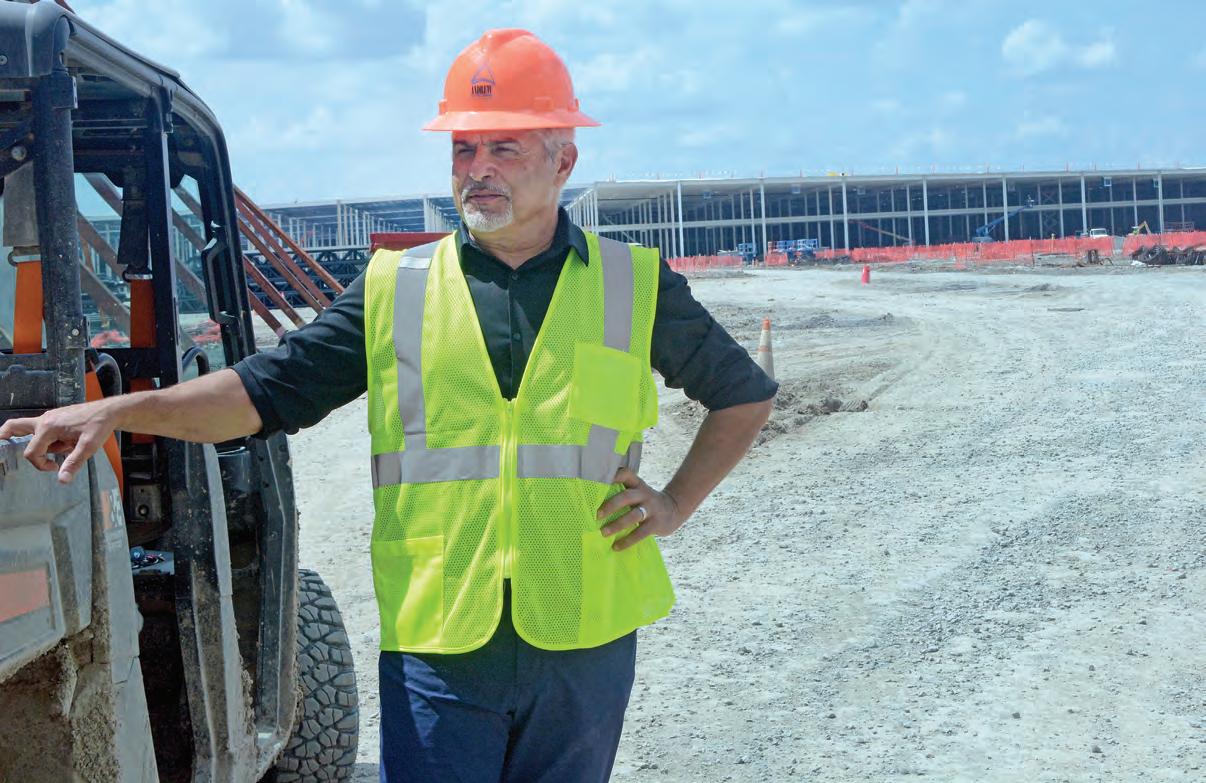
long enabled a single company to dominate most of the market for the supply and transmission of electricity. LEUG first brought the plan to the commission in 2019.
“Industry has been asking for renewable power and the need to access renewable power for more than four years,” said LEUG spokesman Randy Young, a partner with Kean Miller in Baton Rouge, during the June meeting. “Four years fast-forward … Entergy has 50 MW of solar on the ground. That’s all they have.”
While Entergy has other solar investments in varying stages of development, the pace has been too slow for LEUG’s member companies, each of whom has its own corporate goals for using renewable energy sources.
Young said by investing in their own energy sources, his member companies will be able to create more “price certainty” when purchasing energy.
“Secondly, they’ll know how much volume they’re going to get and how many renewable energy credits they’re going to get,” Young said in the meeting. “This allows them to create that certainty in terms of the price, the volume and the renewable energy credits.
“We hope that Entergy’s projects and programs are successful, but this creates another option for those industrial companies that need to do something today.”
In May, the LPSC approved an Entergy proposal to add up to 3 GW of solar power to its generation portfolio, marking the largest renewable power expansion in state history.
The approval authorized a streamlined procurement and approval process that will enable the construction of several solar resources within the state.
The initiative aligns with Entergy’s plans to grow its renewable energy resources by 2031 and its
commitment to achieving net-zero carbon emissions by 2050.
Today, nearly 25% of Entergy Louisiana’s generation portfolio comes from carbon-free resources, including nuclear and renewable technologies.
UL Lafayette has emerged as the undisputed local leader in the solar arena, buoyed in part by the success of its 1.1 MW outdoor Louisiana Solar Energy Lab.
Terrence Chambers, director of the lab and a mechanical engineering professor at the university, says the six-year-old research and training facility is one of the largest and best equipped in the southeastern U.S. and is what initially attracted First Solar to the area.
And in 2023, the university received a $1 million U. S. Department of Energy grant to jump start the “Louisiana Solar Corps,” a statewide solar energy workforce
training program with a focus on underrepresented communities.
Through the program, Chambers and others are helping technical and community colleges such as South Louisiana Community College and River Parishes Community College to establish their own solar training programs by developing curricula and training faculty.
They recently conducted a week-long training course for the faculty of RPCC. “They now have their own solar training program,” Chambers says. “That’s the kind of thing we’re doing to help grow the programs across the state and, in turn, enable the solar industry to grow.”
UL Lafayette is also propping up an Advanced Manufacturing Laboratory on campus that will train the bulk of the workers needed by First Solar. Dr. Jonathan Raush, director of the Institute for Materials Research & Innovation,
will oversee the facility, which is funded in part by a $40 million donation from First Solar.
“The training will be specific to the processes used at the factory,” Chambers says. “Most of them will go through our facility for training prior to being hired.”
Once operational, the Advanced Manufacturing Lab will provide a sustainable source of training for the manufacturer.
In the meantime, First Solar is sending workers to its other facilities in Alabama and Ohio for on-the-job training. “As workers move on, change jobs, etcetera, we’ll need to sustain that workforce and the university has committed to helping us with that,” Antoun says.
But the university’s plans for the lab extend far beyond the solar industry.
“The processes you use to make solar panels are almost identical to the ones used to make computer chips,” Chambers says, “so our long-range vision is for it to be used for semi-conductor manufac-
“(We’re helping) to help grow the programs across the state and, in turn, enable the solar industry to grow.”
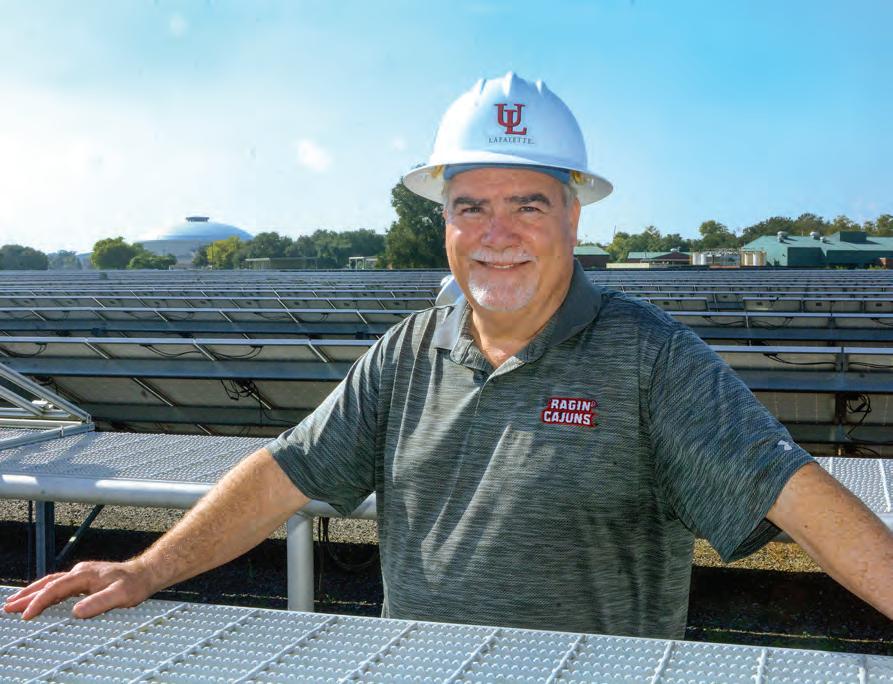









turing, with the goal of building a semi-conductor industry in Louisiana.”
First Solar’s Antoun has his own “big picture” view. With significant growth expected in local solar demand, he hopes to create a vibrant and healthy customer base in Louisiana and across the Gulf South.
At present, about 95% of First Solar’s customers are developers and utility companies.
“We’re hoping that most of these guys are going to buy First Solar panels, not Chinese,” he says. “We’re differentiated from other manufacturers because we’re close. We’re hoping all these modules we produce will go to Louisiana projects, as well as to Texas, Mississippi, Alabama and Florida.”
Another item on Antoun’s wish list: that the state will incentivize the process by encouraging the developers of local solar projects to use locally-based manufacturers. “I believe the current administration is looking into the potential of that.”

BY SAM BARNES
Louisiana’s pipeline industry struggles with infighting and other roadblocks as it aims to meet LNG demand.
Irrespective of the current LNG permitting pause, existing demand and a readily available supply are fueling the construction of thousands of miles of new natural gas pipelines from the Haynesville and Permian shale plays.
As many as eight pipeline projects continue to advance across Texas and Louisiana to feed five LNG export projects currently under construction along the Gulf Coast, according to the most recent data provided by the U.S. Energy Information Administration’s Natural Gas Pipeline Project Tracker.
That equates to more than 20 billion cubic feet per day of new capacity to feed liquefaction trains coming online through the end of the decade.
And there’s no sign that things are slowing down. Gordon Gorrie, vice president of oil and gas research at Industrial Info Resources in Houston, is currently tracking 155 projects totaling $22 billion in natural gas pipelines and compressor stations across the two states that are either planned, designed or under construction.
Gorrie, who monitors oil and gas investment worldwide, says most of the pipelines are making
a beeline for the Gulf Coast to serve LNG facilities in Texas and Louisiana.
“The vast majority in Louisiana are coming out of the Haynesville Shale play, but the Permian Basin has opened up a bit too,” Gorrie says. “Those come down to the Houston area and go from there across to Louisiana.
“And when a project is announced in Texas or Louisiana, there’s a good chance that it will move forward,” he adds. “The citizens of those two states are generally favorable toward putting in new pipelines, unlike in the northeast and other places.”
Market dynamics favor a robust pipeline market in the long term, says Greg Upton, executive director of LSU’s Center for Energy Studies in Baton Rouge. That’s because U.S. oil and gas production is expected to grow for decades.
“Globally, it’s going to be driven by the developing world,” Upton says. “If we’re going to connect production all over the U.S. with markets all over the world, midstream assets are going to be part of that connection. So as long as those longer trends persist, there are going to be investments in these midstream assets to get product down to the Gulf Coast.”



The race to get natural gas from the Haynesville Shale to the southwest Louisiana LNG market has created an intensely competitive market as companies such as Energy Transfer, DT Midstream, Williams Cos. and New Generation Gas Gathering (NG3) battle for the same land space.
“Much of the time, these disputes are about territory rights,” says Eric Smith, director of the Tulane Energy Institute. “A pipeline is essentially a business that moves product from point A to point B, and if two companies are drawing on the same field or supplying the same terminal, there has to be some sort of agreement as to how that can be done in an orderly manner. Otherwise, they’re going to fight tooth and nail.”
Case in point: After months of legal wranglings, Williams Cos. received the legal green light in late July to continue building its 1.8 billion-cubic-feet-per-
day Louisiana Energy Gateway, or LEG, project, a natural gas pipeline that will fuel LNG export terminals with Haynesville Shale gas. That’s after a court threw out an Energy Transfer attempt to halt construction.
The two companies had been in a dispute in which Energy Transfer contested having the LEG line cross under its pipeline in DeSoto and Sabine parishes. Ultimately, the 42nd Judicial District Court in DeSoto Parish ruled that Energy Transfer could not block Williams from constructing the pipeline. “Construction can begin in earnest on the Louisiana Energy Gateway, which is expected to be in service by the second half of 2025,” a Williams spokesperson said in a written statement. LEG was just the latest project to overcome Energy Transfer’s crossing objections. DTM found an alternative route for its Louisiana Energy Access Project after a court ruled against it last year. And Momentum Midstream
“Much of the time, these disputes are about territory rights.”
ERIC SMITH, director, Tulane Energy Institute
recently settled its crossing dispute to move forward with the 1.7 bcf/d New Generation Gas Gathering LLC pipeline.
But the long-term threat to pipeline development isn’t legal infighting.
It’s the external roadblocks thrown up by the federal government and courts, Upton says. In particular, the current LNG export facility permitting pause could have significant impacts on pipeline development for years.
“When an LNG facility owner signs a long-term contract to export gas produced on the Gulf Coast, they must line up every single part of that supply chain,” he notes. “You need to have the producer to produce the gas and the midstream assets to get it to the Gulf Coast … so when you throw in uncertainty over permitting, it has a ripple effect on everything because all these assets must come online at the right time.”
Tulane’s Smith says environmental groups and the Federal Energy Regulatory Commission, or FERC, seem determined to disrupt new or expanded LNG export capability. “Our best chances are with intrastate pipelines that remain within Louisiana, which don’t require FERC approval,” Smith says. “But, even in that case, NEPA (National Environmental Policy Act) interpretations provide plenty of room for activists to meaningfully delay projects.”
The approval process becomes exponentially more complicated for interstate pipelines.
“A pipeline system can become very convoluted in the U.S.,” he adds. “If you want to ship natural gas from Oklahoma to Tennessee, for example, and you have a buyer and a seller, you still must have the approval of Arkansas. That doesn’t always happen.”
That’s made transporting the gas to Mexico’s fledgling LNG market an attractive option for Permian gas producers. And while
there is an available supply of shale gas in Mexico, “extracting it is more trouble than it’s worth when the Americans are selling it to them,” Smith says. “As a result, natural gas shipments from the Permian to Mexico have tripled in the last 10 years.”
More recently, New Fortress Energy Inc. completed an offshore LNG liquefaction terminal known as Fast LNG 1 near Altamira, Mexico, that is shipping LNG from Mexico to Puerto Rico for less cost than shipping from Louisiana.
For now, most of the pipelines feeding Louisiana LNG facilities will come from the Haynesville Shale play, not the Permian. The pipelines benefit not only from being state based. The gas they’re transporting is “LNG ready.”

“When you’re building pipelines over long distances, it’s not cheap.”
GREG
executive director, LSU Center for Energy Studies

• Please respond by e-mail or phone with your approval or minor revisions.
• AD WILL RUN AS IS unless approval or final revisions are received within 24 hrs from receipt of this proof. A shorter timeframe will apply for tight deadlines.
• Additional revisions must be requested and may be subject to production fees.
“Haynesville’s main advantage is that it supplies ‘dry’ gas,” Smith says. “You can take that gas straight out of the ground, put it in a pipeline and it would meet all
the specs. In Texas, they produce associated or ‘wet’ gas that comes from oil, and how much they produce is tied directly to oil
Carefully check this ad for: CORRECT ADDRESS • CORRECT PHONE NUMBER • ANY TYPOS This ad design © Melara Enterprises, LLC. 2024. All rights reserved. Phone 225-928-1700
demand.” Wet gas also contains other gas liquids such as ethane, propane and butane that must be removed before it can be trans-


ported through a pipeline. And generally, intrastate pipelines have fewer regulatory hurdles to clear, other than state
service, maintenance & upgrades without the upfront cost, capital expenditure & overhead of traditional purchasing models. By outsourcing your AV equipment procurement, deployment, integration & management, your organization can stay agile while avoiding expensive purchases, overhead & costly downtime.

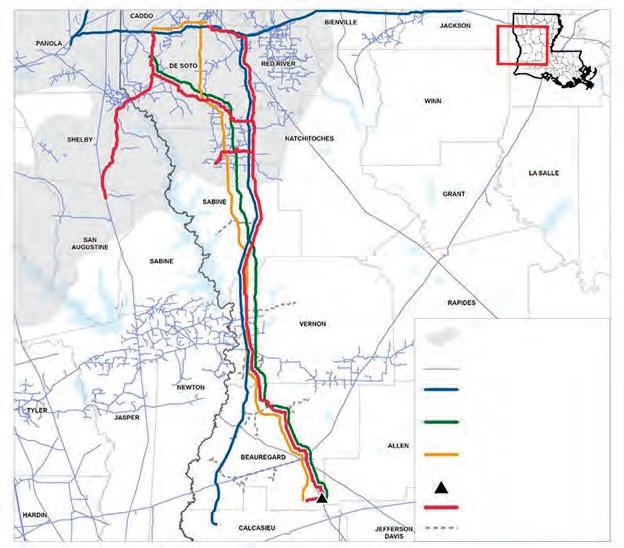
approvals and permitting through the Pipeline and Hazardous Materials Safety Administration.
“There are just fewer hoops to jump through,” Smith adds. “Crossing state lines brings FERC and all these other people into the act. And if an environmental group doesn’t like the answer they get from FERC, they immediately go to the circuit court in Washington (which adjudicates disputes with government agencies) and they usually get what they want.”
There are economic considerations as well. “When you’re building pipelines over long distances, it’s not cheap,” says LSU’s Upton. “These are expensive things, and you must deal with landowners, so proximity is an advantage.”
Nevertheless, pipeline activity in the Permian is expected to increase, as the incentive to transport and sell the gas increases. “The market dynamics are there,” Upton says, “and these companies have made environmental commitments regarding flaring. Not only is it a valuable product, but they’ve also made all these commitments to minimize their carbon footprint.”
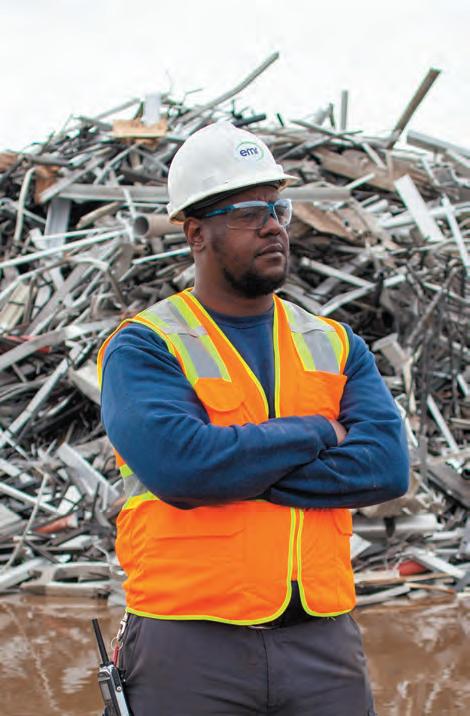
Recycling you can rely on:
Extract value from your used materials
Experience gold standard, speedy service
Services tailored around your business
Prompt and competitive payment
Together, we can transform today’s materials into the ones we’ll all need tomorrow.


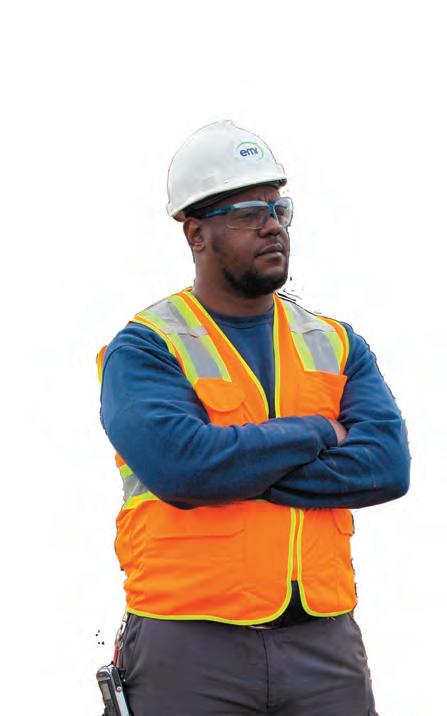
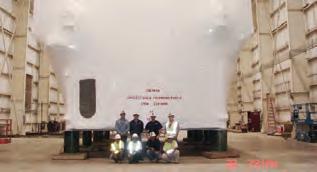
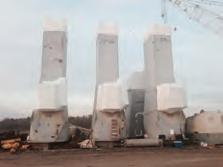
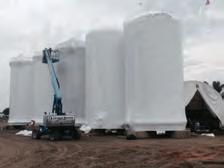
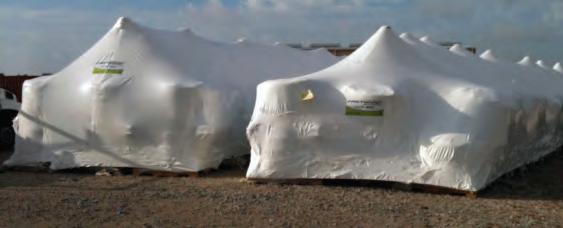



“The future of the Lake Charles economy looks promising as several foundational projects set the stage for long-term growth.”
DAN GROFT, PhD, Director of H.C. Drew Center for Business and Economic Analysis, Associate Professor, McNeese State University


“We are projecting 3,500 new jobs for the Lake Charles MSA in 2025 and another 4,600 jobs in 2026. This would make the Lake Charles MSA the fastest growing MSA in the state in percentage growth.”
DR. LOREN SCOTT, Economist, President of Loren C. Scott & Associates, Inc., Professor Emeritus at LSU
“We are no stranger to pivoting in Southwest Louisiana—we have a lot of grit. It’s what we do.”
ALLYSON MONTGOMERY, Executive Director, Children’s Museum of Southwest Louisiana

“Our aviation sector is a key component of our diverse economy. For a small market, this level of air service is exceptional.”
GEORGE SWIFT, CEO, Southwest Louisiana Economic Development Alliance

“We envision a future where responsible tourism practices safeguard our unique cultural heritage and natural beauty. We dream of a destination that embraces diversity and creates equitable opportunities for all.”
KYLE EDMISTON, President and CEO, Visit Lake Charles
Southwest Louisiana continues to make a comeback from devastating natural disasters over the past few years, including a pandemic and two hurricanes. Thanks to the collaborative efforts of state and community leaders, the region is poised for success with an increased population, economic investments and the potential for a growing manufacturing and export industry.
$44 billion
Value of completed economic development projects over the last 10 years


• After showing the highest unemployment rate in the state after Hurricane Laura (12.8%), the unemployment rate in the area has fallen almost 9 percentage points.
• Job postings in the region are up over 40% since the pandemic.
• Employment has recovered above pre-Laura levels.
• The area is rebuilding briskly from the storms, with jobs up over 14% since Hurricane Laura.
Calcasieu Parish welcomed 7 million visitors in 2023, generating $800 million in total spending.

$84 billion
Economic development projects announced or under construction
Gaming revenues per admission are almost 20% higher than pre-pandemic.

The Lake Charles MSA has the lowest cost of living for housing and utilities in the state, with the total cost of living almost 14% below the national average. It also has the highest median household income out of all MSAs in the state.

Nearly
$65,000
Per capita output of any area in the state.
130%
Increase in exports over pre-pandemic levels.

• There was an increase in population in the Lake Charles MSA from 2022 to 2023 despite a statewide drop.
• Calcasieu Parish ranks 5th out of 64 parishes in largest spending produced by visitors.
11
Number of certified sites in Southwest Louisiana, with two sites still pending certification. Three additional sites are currently undergoing evaluation and due diligence studies for certification.
100
Number of air operations handled at Chennault International Airport each day. Over 30 entities operate at the nearly 2,000-acre Lake Charles Regional Airport facility.

The Lake Charles Port, Harbor, and Terminal District is the 10th-busiest district in America, based on tonnage. Nearly 17.2 million tons of cargo are loaded and unloaded at the Port of Lake Charles each year and the Calcasieu Ship Channel moves approximately 64 million tons annually.
• The area has the highest share of output from manufacturing compared to any other area in the state, over 30%.
• The Calcasieu River Ship Channel generates $998 million in state and local taxes
$40+ billion
1,000+
$48.5 m
The LNG and petrochemical industries in Southwest Louisiana have a positive economic impact on the region. Local government puts industry tax dollars to work, improving infrastructure, providing funding for law enforcement, fire departments and school boards.
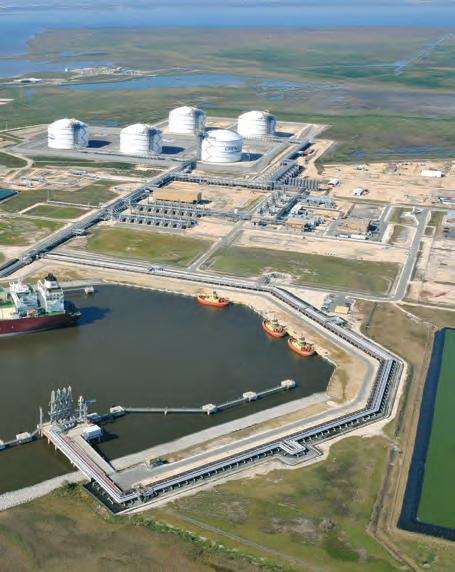
$1.2 billion $234 million in existing LNG facility investment direct employees employees in LNG industry
These industries are among the most generous of corporate citizens, donating millions of dollars to area organizations and thousands of volunteer hours, strengthening the community.
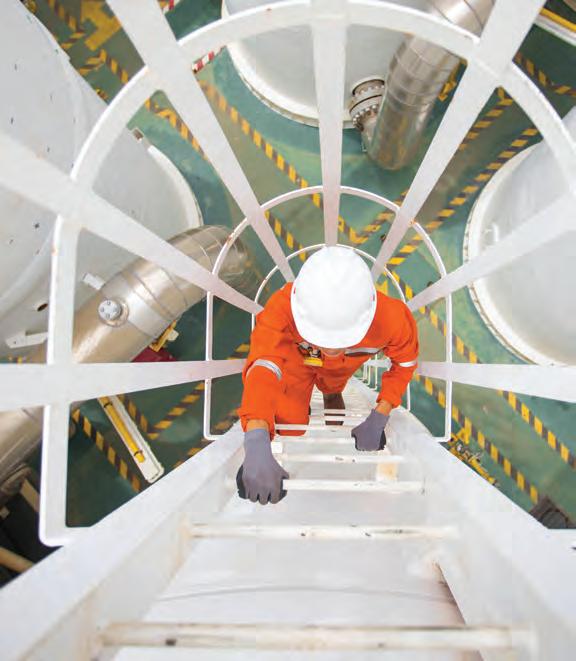
8,500
THE IMPLOSION of the Hertz Tower, formerly the Capital One Tower, marked the end of an era for Lake Charles but also symbolized a new beginning for Southwest Louisiana. Four years after hurricanes Laura and Delta wreaked havoc on the region, the area is undergoing a transformation filled with renewed hope and exciting opportunities.
“We’ve made tremendous progress in rebuilding homes and businesses,” says George Swift, CEO of the SWLA Economic Development Alliance. Despite some homes still in disrepair, new apartment complexes are rising, and public school attendance is increasing, indicating that families are returning to the region.
Swift attributes this resurgence to a blend of job opportunities and the unique cultural offerings of Southwest Louisiana. The region boasts a rich mix of Texas and Louisiana influences, providing a diverse range of activities—from rodeos to symphonies—that appeal to a wide array of interests. The outdoor lifestyle, with amenities like year-round golfing, adds to the area’s allure.
The economic opportunities in Southwest Louisiana are central to its recovery. The region’s diverse economic base, including liquefied natural gas (LNG), aviation, petrochemicals, and agriculture, has been instrumental in its quick rebound.
One of the region’s most significant opportunities lies in the LNG industry. While some projects

are paused, three permitted LNG facilities are moving forward, with potential investments of up to $60 billion. This could bring thousands of construction jobs and hundreds of permanent positions to the area.
The LNG Center of Excellence at McNeese State University is also developing, further solidifying the region’s status as a focal point for the industry. The aviation sector is equally robust, with companies like Northrop Grumman and Citadel Completions offering high-paying jobs in aircraft maintenance and luxury jetliner interiors. SOWELA Technical Community College provides aviation training, ensuring a skilled workforce to meet industry demands.
Beyond energy and aviation, Southwest Louisiana’s economy thrives on agriculture, timber, healthcare, and gaming. With 23 petrochemical facilities employing thousands, the region enjoys economic stability that many areas lack. Agriculture and forestry also
play vital roles, with crops like rice, soybeans, and crawfish bolstering the rural economy.
Tourism and gaming are on the rise again, with casinos reopening and new lakefront developments, including restaurants and museums, enhancing the area’s appeal.
One of the most anticipated infrastructure projects is the construction of a new I-10 bridge over the Calcasieu River. “This will be a huge improvement for safety and the perception of our area,” says Swift. The new bridge will replace the aging structure, improving accessibility and safety.
Economist Dan Groft, PhD, shares Swift’s optimism. Groft is Director of H.C. Drew Center for Business and Economic Analysis and an associate professor at McNeese State University.
“The future of the Lake Charles economy looks promising as several foundational projects set the stage for long-term growth,”
he says. “Industries like LNG, carbon capture and sequestration, wind, and solar are paving the way for future opportunities as the region is at the forefront of new energy advancement. These developments will enhance infrastructure, making the area more attractive for future projects as new and existing facilities will adapt cutting-edge technologies to produce improved products. And exciting housing, campus developments, and quality of life improvements are in progress, positioning the region for substantial benefits in the years to come.”
Southwest Louisiana is truly a land of opportunity, says Swift. The region offers a low cost of living, abundant job opportunities, and a culturally rich environment, making it attractive to both returning residents and newcomers. As the area continues to rebuild and grow, it’s clear that this is not just a recovery story. It’s a story of resilience and opportunity, showcasing the forward-thinking spirit that defines the region.

IN THE EARLY 1940s, the U.S. Armed Forces needed a facility to produce fuel for their war efforts. To meet this demand, Cities Service Oil Company started building a refinery on the Calcasieu Ship Channel to convert crude oil into fuel for U.S. bombers.
Since 1944, this refinery has been a vital part of the Southwest Louisiana community, boosting the economy and supporting generations of dedicated workers. Today, the plant, now known as CITGO Lake Charles, continues to produce aviation fuel, gasoline, diesel and other products.
“We’ve reached new production milestones,” says Sterling Neblett, vice president and general manager of the CITGO Lake Charles Refinery. “Innovative changes in operations have made us more efficient than ever before.”
As CITGO celebrates its 80th anniversary this year, the company continues to meet the high consumer and industry demand for oil and gas—driven by the need to produce everyday items such as cell phones, household goods, tires and more.
Producing vital products is just one aspect of the CITGO Lake Charles Refinery’s enduring success. Equally important is their
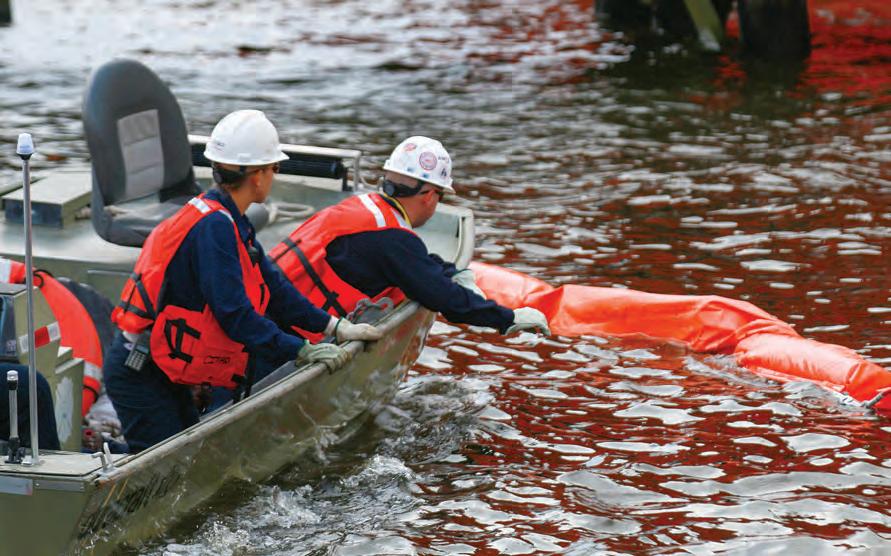
investment in and commitment to the community. By prioritizing safety and supporting nonprofit organizations, educational initiatives and volunteer efforts, CITGO recognizes the significance of their role as a dedicated community steward.
Preparing for emergencies is a cornerstone of CITGO operations.
Every three years, the company conducts a worst-case scenario drill at each of its refineries. This year, the drill took place in late September at the Lake Charles Refinery.
The exercise saw over 130 participants, including emergency responders and representatives from local, state and federal agencies, engaging in a live scenario on the waterway. This drill tested the emergency operations’ command capabilities and assessed the worst-case discharge of oil from the refinery to ensure the necessary resources and plans are in place to respond effectively.
“In our industry, preparing for and practicing our response to these emergency scenarios is critical to the safety of our
“In our industry, preparing for and practicing our response to these emergency scenarios is critical to the safety of our employees and surrounding communities.”
Sterling Neblett, Vice President and General Manager, CITGO Lake Charles Refinery
For training exercises and emergency response efforts, the CITGO Lake Charles Refinery partners with:
• U.S. Coast Guard
• Calcasieu Parish Office of Homeland Security and Emergency Preparedness
• Louisiana Department of Environmental Quality
• Louisiana State Police and others
employees and surrounding communities,” says Neblett.
“Our emergency responders and agency partners play an essential role in this preparation, and we thank them for their dedication to ensuring everyone’s safety.”
At the close of this year’s drill, agency partners thanked the CITGO Lake Charles team for not only allowing them the opportunity to practice together, but to learn from one another and gain valuable knowledge they can implement in real life scenarios.

THE CHILDREN’S MUSEUM of Southwest Louisiana, a beloved institution for over 35 years, has faced its fair share of challenges. Forced to close its doors in 2020 due to the devastation caused by Hurricane Laura, the museum is now on the brink of a grand reopening at its new home in Port Wonder. Allyson Montgomery, executive director of the museum, shared insights on the importance of the museum to the region and the exciting changes ahead.

“We are no stranger to pivoting in Southwest Louisiana—we have a lot of grit. It’s what we do,” Montgomery emphasized, reflecting on the museum’s resilience in the face of adversity. The new facility, part of a
$29 million project, will also house a Nature and Science Center in partnership with the Louisiana Department of Wildlife and Fisheries. This expansion is expected to attract approximately 75,000 visitors annually, almost doubling from the 40,000 visitors at
AVIATION AND AIR service play a vital role in Southwest Louisiana’s economy, offering both direct and indirect benefits that bolster the region’s growth. According to George Swift, CEO of the Southwest Louisiana Economic Development Alliance, the area is home to a strong aviation sector, with companies like Northrop Grumman and Bristow Helicopters operating at Chennault International and Lake Charles Regional Airports, respectively.
“Our aviation sector is a key component of our diverse economy,” says Swift. “At Lake Charles Regional Airport, we have three daily flights on United Airlines to Houston and three daily flights on American Eagle to Dallas. For a small market, this level of air service is exceptional.”
This robust air service not only supports the local oil and gas industry but also provides essential connectivity for residents and businesses. “We have the most convenient airport in America,” Swift adds. “Parking is free, and our on-time flight percentages are better than flying out of Houston.”
Aviation training programs at SOWELA Technical Community College further enhance the sector’s impact, preparing the next generation of aviation professionals. The blend of strong air service, industrial support, and educational opportunities makes aviation a cornerstone of Southwest Louisiana’s economic landscape. As Swift notes, “Our diverse economy, including aviation, positions us well for future growth and stability.”
the previous location. The museum’s mission remains clear: to be a hub for learning and community engagement. “We want to be a place where families come on the weekends and whenever the kids aren’t in school, and just hang out and learn something new,” she said.
With the museum’s reopening campaign aptly named “Here Comes the Sun,” there’s a true sense of hope and renewal. As the community eagerly anticipates the return of this vital cultural resource, the Children’s Museum of Southwest Louisiana stands as a symbol of resilience and optimism for the future.

Shippers around the globe who require efficient, large-scale handling rely on the Port of Lake Charles—a top-10 U.S. port that anchors “America’s Energy Corridor.”
Our capacity has long made us a global choice, handling all shapes and all weights of cargoes.
We also offer ideal real estate for lease and development.
Let’s talk about how we can put our capabilities to work for you.
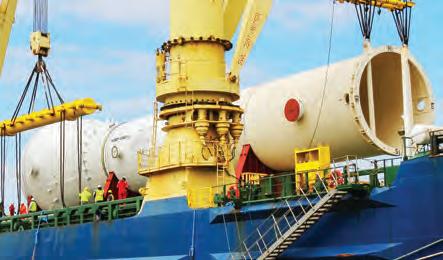
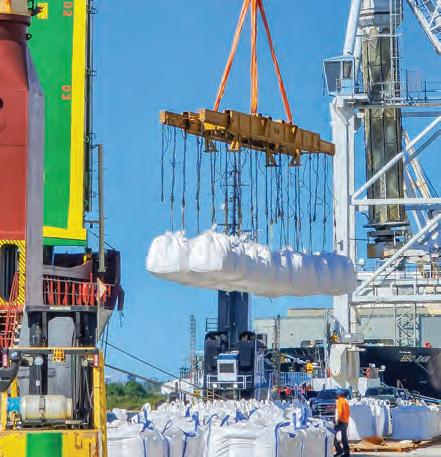

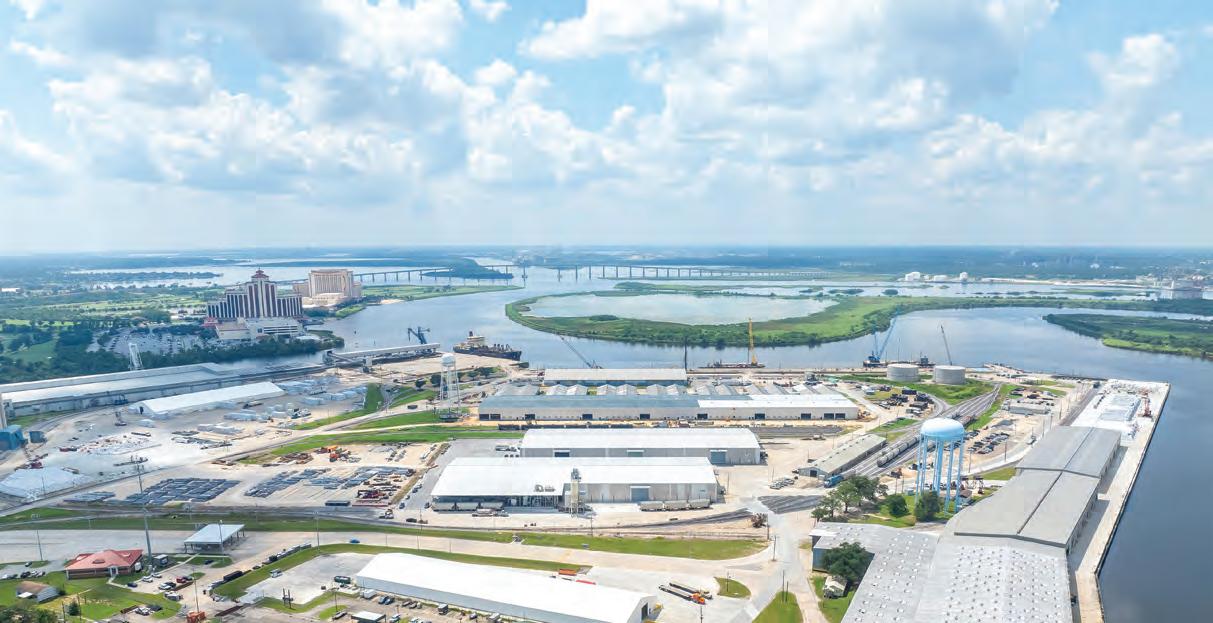

SOUTHWEST LOUISIANA is slowly but surely regaining its voice, its rhythm, and its potential as not only a family-friendly destination, but also a place of innovation and expanding new technologies in a wide array of industries. It’s home to Cajuns, cowboys and backyard barbecues as well as a hub of activity for manufacturing and construction.
It is blue-collar, boisterous and bountiful. The workers in Southwest Louisiana keep one boot in the past —buoyed by vibrant traditions—and one boot stepping toward the future. The region offers a jackpot of entertainment at a variety of casinos that offer everything from golf greens and spas to horseracing and island time getaways.
Find luxurious accommodations, a myriad of dining selections, top-name entertainment, and incredible gaming experiences at Delta Downs Racetrack Casino Hotel, Golden Nugget Lake Charles, Coushatta Casino Resort or L’Auberge Casino Resort Lake Charles. The region is working its way back to hosting dozens of festivals.
Arts and culture is also alive and well with galleries, symphony and theater offerings as well as multiple museums. Outdoor activities abound with the Creole Nature Trail All American Road, a beach, state parks and plenty of hunting and fishing.




TO ACHIEVE long-term economic success, Southwest Louisiana must create, attract, and retain an educated and skilled workforce. From essential onboarding requirements, background checks, workforce readiness training and customized badge security systems, the Safety Council of Southwest Louisiana is committed to meeting the safety and training needs of members and the community it serves.
The Safety Council is the catalyst for workers connecting with employers’ needs, and its mission is to support, develop and enrich all forms of workforce readiness as a way of making the workplace a more secure environment.
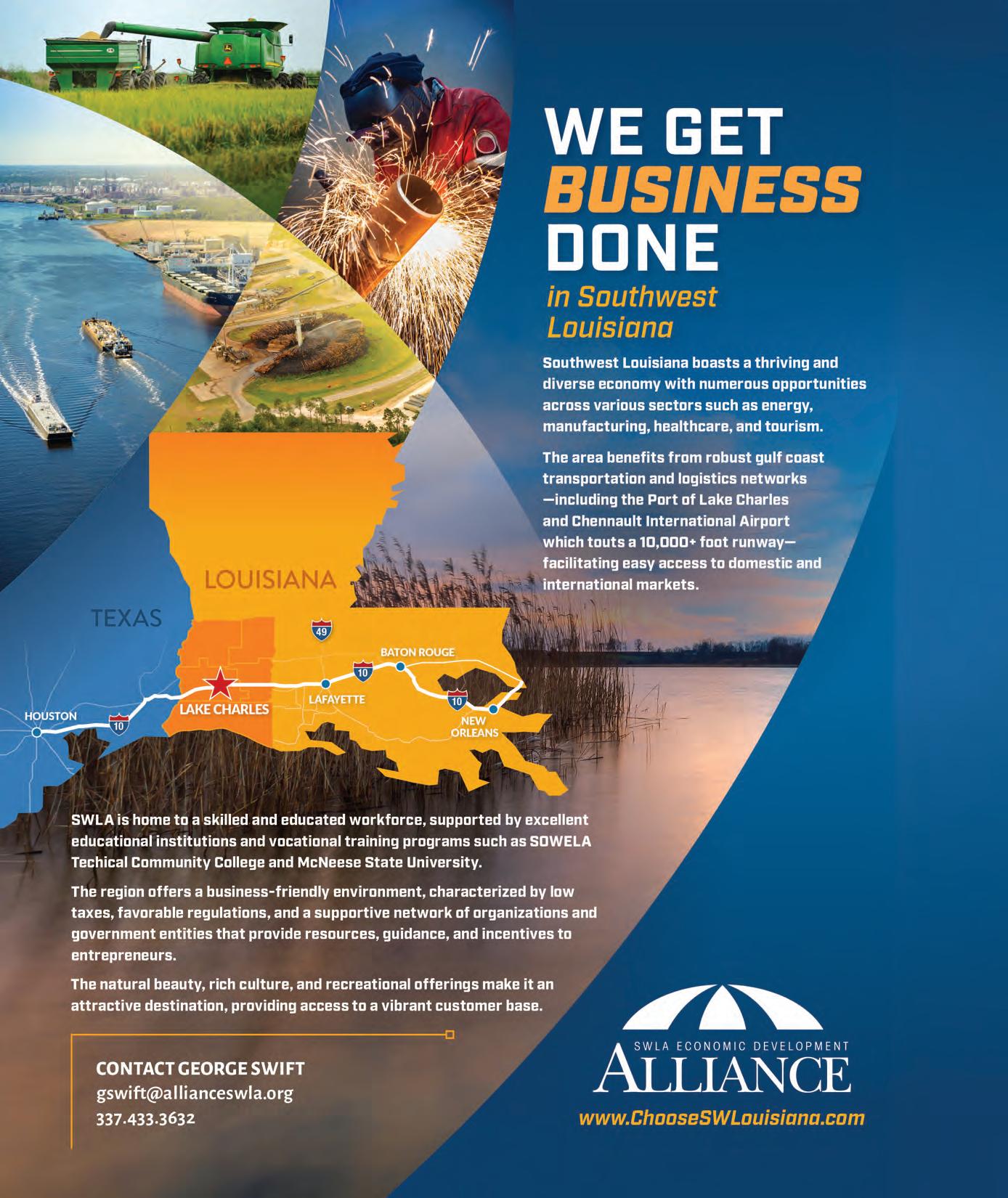
All rising professionals, entrepreneurs, executives, and small business owners are invited to join us in taking their leadership up a notch. Business Report’s Executive Leadership Academy is a transformative program that will take your career and your organization to new levels of success.


THE LEADERSHIP ACADEMY WAS A GREAT opportunity for me to learn not only about myself and how I can better myself as a leader, but also to learn from other talented young professionals that represented many different industries in the Baton Rouge area.The instructors were interactive, impactful, and relevant with case studies we discussed in class and thorough with their explanations.”
NYOKI MOKEBA
Performance Contractors, Inc.

EACH CLASS HAD PRACTICAL INFORMATION that I could immediately take back to the office and apply. I also enjoyed being surrounded by incredible classmates that led to great discussions and sharing of perspectives. I have many pages of notes that I know I will reference for many years to come.
KATI HODGES, Premier Geotech & Testing

THE EXECUTIVE LEADERSHIP ACADEMY is one of the best things I have done in my career for professional development. The course content was excellent with a ton of practical applications. Being able to network and collaborate with other professionals across industry type was of great value.”
EVAN SCROGGS, Lee & Associates

By SAM BARNES
Streamlined processes help contractors strike a balance between safety and productivity.
Contractors are engaged in a classic struggle between productivity and prudence as they ramp up manpower in Louisiana’s swiftly growing industrial space.
As they strive to find skilled laborers—and find them quickly—they must also ensure that their new hires are properly trained, screened and oriented to the jobsite.
Various third-party companies
that support that effort are speeding up their processes, whether by propping up new brick-andmortar facilities, nesting at the plants, streamlining procedures or even using AI-supported learning tools that bring the training to the workers.
It’s a challenge that won’t go away anytime soon.
Industrial contractors are expected to face unprecedented workforce needs for years to come, given sizeable investments in new
plants and expansions across the state. That will result in a highly competitive labor market.
“Every year we see more patients than the year before,” says Sarah Taylor, owner of Gulf Coast Occupational Medicine in Baton Rouge, a provider of pre-employment and annual screenings. “And every year, we have a bigger staff than the year before. My company runs in direct parallel to the Baton Rouge industrial market. If I’m ramping up, that means Baton
Rouge industry is ramping up.”
To shorten turnaround times, Gulf Coast Occupational Medicine operates multiple satellite offices as well as three mobile onsite units. The company plans to open its newest office in Geismar by the end of the year, which will be their 12th location.
“With the amount of traffic on highways 73, 30 and 44 … it gets our services closer to where the people work,” Taylor says. “If someone’s leaving BASF, Shell, et-

cetera, it will cut 35 to 40 minutes off their commute. That’s a win for them and for us.”
Their mobile units, typically needed for annual screenings or swift ramp-ups in labor, can operate anywhere in the country. While on-site, they can perform a full battery of screenings, including X-rays.
“Our mobile services are aimed at people already at work and on the clock,” she adds. “It’s more efficient for us to come to them. We’re at a site right now for three days testing 260 people.”
UTILIZING AI
Kathy Trahan, president and
CEO of Alliance Safety Council in Baton Rouge, is excited about the potential of the council’s AI-enhanced safety orientations, which enables workers to access any course from a computer or smart phone. It’s the latest step in an orchestrated effort by the council to decentralize its operations by bringing the training directly to their clients.
The organization began developing the service for the power industry in 2019 with the help of a Canadian-based tech company.
“We were ready to launch it when COVID hit, so we flipped everything we had to it,” Trahan says. Today, anything in the Alliance Safety Council’s course library can be delivered with the AI component. “It’s super helpful for people coming from out of state who have to be on the job first thing Monday morning,” she adds.
It has become a vital tool in their training portfolio. Last
year, the Alliance Safety Council trained more than 240,000 workers in the petrochemical, power, pulp and power sectors through in-person and remote training.
“With the help of AI, we’re now in their pocket; we’re on their phone,” Trahan says. “They can take the training from anywhere with verified proctoring. It allows you to scale quickly, where all these other proctoring systems can be less efficient.”
The AI-supported training tool uses facial recognition and flags anything that might be a testing violation.
“But it can’t do everything, such as determine if an extra set of eyes belongs to a baby or a cat, or someone else who could actually be giving you an answer,” she adds. “AI flags all that, but a human has to verify everything.”
The Alliance Safety Council’s “nesting” services are also growing in popularity. Those provide fulltime, five-day-a-week orientation
services while physically located at a plant or with a contractor. At present, they’re nested with contractors such as Turner Industries, Cajun Industries and EXCEL Group, and plants such as Dow and ExxonMobil.
The time-saving advantages are obvious, Trahan says. “None of their workers have to travel to our offices; we just integrate into their onboarding process.”
For its part, Associated Builders and Contractors’ Pelican Chapter is shortening the length of two of its courses–pipefitting and heavy equipment operation–by eliminating the classroom component in favor of exclusively “hands on” training. That has reduced course times from two years to six months, and significantly improved their ability to get new workers to the field.
By shortening the classes, they hope to achieve the dual goals of
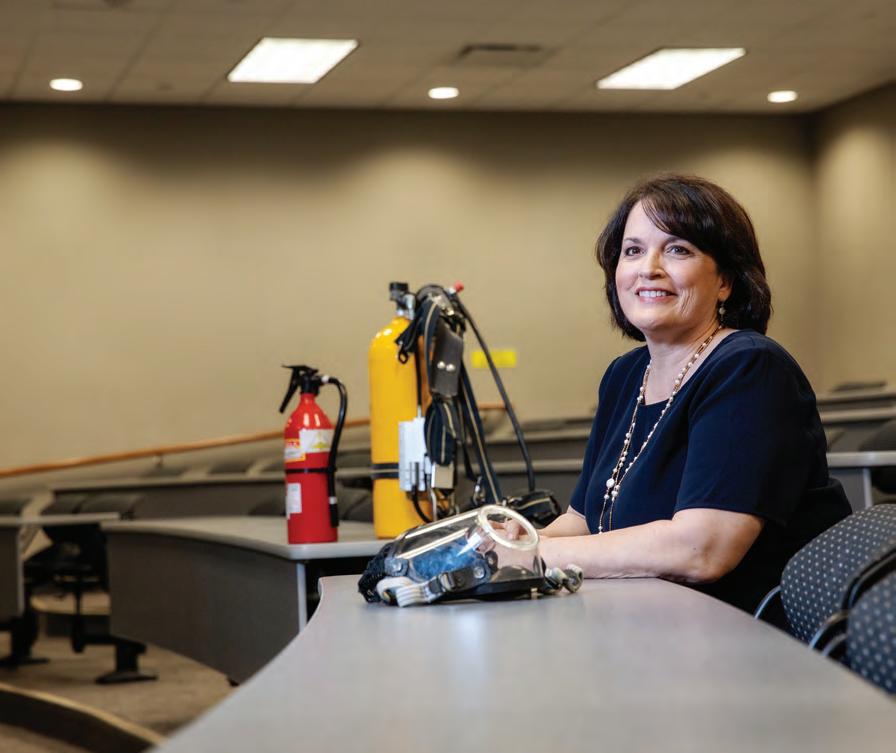
“With the help of AI, we’re now in their pocket; we’re on their phone.”
KATHY TRAHAN, president and CEO, Alliance Safety Council
improving student retention and increasing graduation rates.
To develop the classes, ABC utilized industrial subject matter experts to ensure they addressed the necessary skillsets. Their first pilot class of pipefitters graduated last summer. “It went well,” president and CEO David Helveston says. “We saw a higher level of engagement from the students. Some of these individuals aren’t book learners and learn best with hands-on training; that’s what they’re going to see in the field every day.”
Student numbers were limited to ensure a small, structured environment for evaluation purposes. “We saw such success and promise that we’re now piloting a hands-on heavy equipment operator class,” he adds. ABC partnered with Louisiana CAT, which provided two simulators and an instructor to work with the students once a month.
“Our mobile services are aimed at people already at work and on the clock. It’s more efficient for us to come to them.”
SARAH


The remaining course time is focused on using actual heavy equipment behind the ABC training center. A second pipefitting class is also under way.
The courses will be audited by ABC’s Safety Committee to ensure that safety isn’t compromised in the process. “They’ll perform an audit to identify if we have any shortcomings in our practices,” Helveston says. “It keeps us in check and ensures that we’re providing the latest from industry in regard to safety practices.”
Regardless, safety is embedded in the ABC culture, says Helveston.
“It’s a top priority in everything we do as we teach our classes,” he says. “I think in everything they do and every process there’s a slant on safety and that’s a priority, specifically with ABC and our school.”
Overall, more than 1,000 students are currently enrolled in the fall semester–the highest enrollment for ABC Pelican Chapter since 2020.
Despite the push and pull between safety and the need for speed at the jobsite, Taylor hasn’t noticed any contractors or industrial owners scaling back their screening processes. On the contrary: They’re requesting more comprehensive screenings and in greater frequency.
In particular, she’s noticed a heightened interest in physical abilities testing, necessary to prove that a worker can perform certain tasks such as stepping up and down a ladder and fitting through a small space.
“The pre-employment screening is like Burger King: You can do as little or as much as you want,” she says. “There’s no right or wrong. Of course, the more you do, the bigger impact you can have on the safety of your workforce.
“It’s an ongoing struggle. The safety team wants to screen everyone from their toes to their hair, while operations wants bodies at work to get the work done. Each company has to find its own balance.”
“We get to the root cause of any issue that comes up during a drill.”
CARA MADZY, senior director of environmental, health, safety and security at BASF Geismar
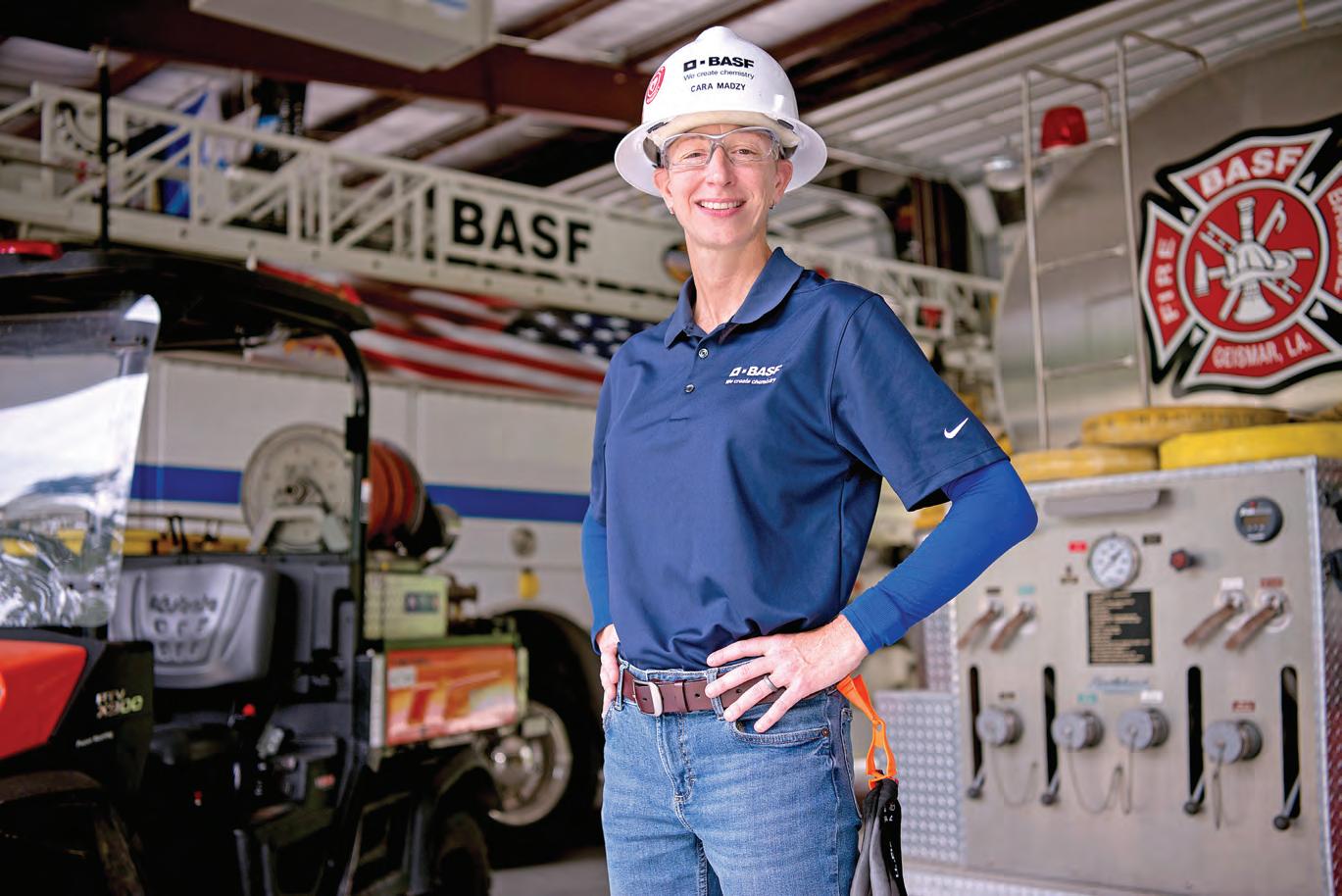
By SAM BARNES
Industry leans on partnerships, technology and a lot of practice to prep for the unthinkable.
When disaster strikes in the industrial space, it’s far too late to begin mapping out a game plan. Wasted time could potentially endanger the lives of employees, contractors or the public at large.
Most of Louisiana’s industrial facilities practice–somewhat relentlessly–for the unimaginable. In the process, they’re depending increasingly upon a blend of new technologies and old-school common sense, while collaboratively reaching across the aisle for assistance from other industrial plants and area emergency response teams.
Ryan Novak, senior manager of safety, health and emergency
response at Sasol Lake Charles, says preparing for an emergency these days goes way beyond merely showing a PowerPoint presentation at a safety meeting.
Novak cut his teeth in the industrial hygiene world, but in the last couple of years has had his role expanded to include safety and emergency response.
“In years past, our facility’s emergency response program was led by a few members of the safety department, and supported mostly by volunteers,” he says.
“We now provide 24/7 coverage and have 16 full-time people working across four shifts,” he adds. “The team includes professional firemen and paramedics who are trained in rescue and HAZMAT response.”
Sasol also purchased a full complement of emergency response apparatus in 2016, including rapid response vehicles and a fire engine.
In similar fashion, BASF Geismar has ramped up its equipment and personnel over the years, and today supports a fully staffed emergency response team complemented by multiple response vehicles, equipment and an on-site medical facility.
Cara Madzy, the plant’s senior director of environmental, health and safety, or EHS, as well as security, conducts four site-wide drills per year, most of them focusing on hypothetical events that could impact the surrounding community.
“We get to the root cause of any issue that comes up during a drill,”
Madzy says. “We determine what happened, why it happened and what the root causes were, as well as identify best practices.” An EHS leadership team then actively discusses the outcomes and cascades their findings to the remainder of the site.
Sasol’s drills are executed collaboratively with LyondellBasell, their joint venture partner, as well as with other plants in the area. Following each drill or incident, they perform an after-action review. “Our drills are preplanned with the management teams and are full-scale field exercises focusing on worst case scenarios identified by our risk management programs,” Novak says.
For additional training, their emergency response team partici-
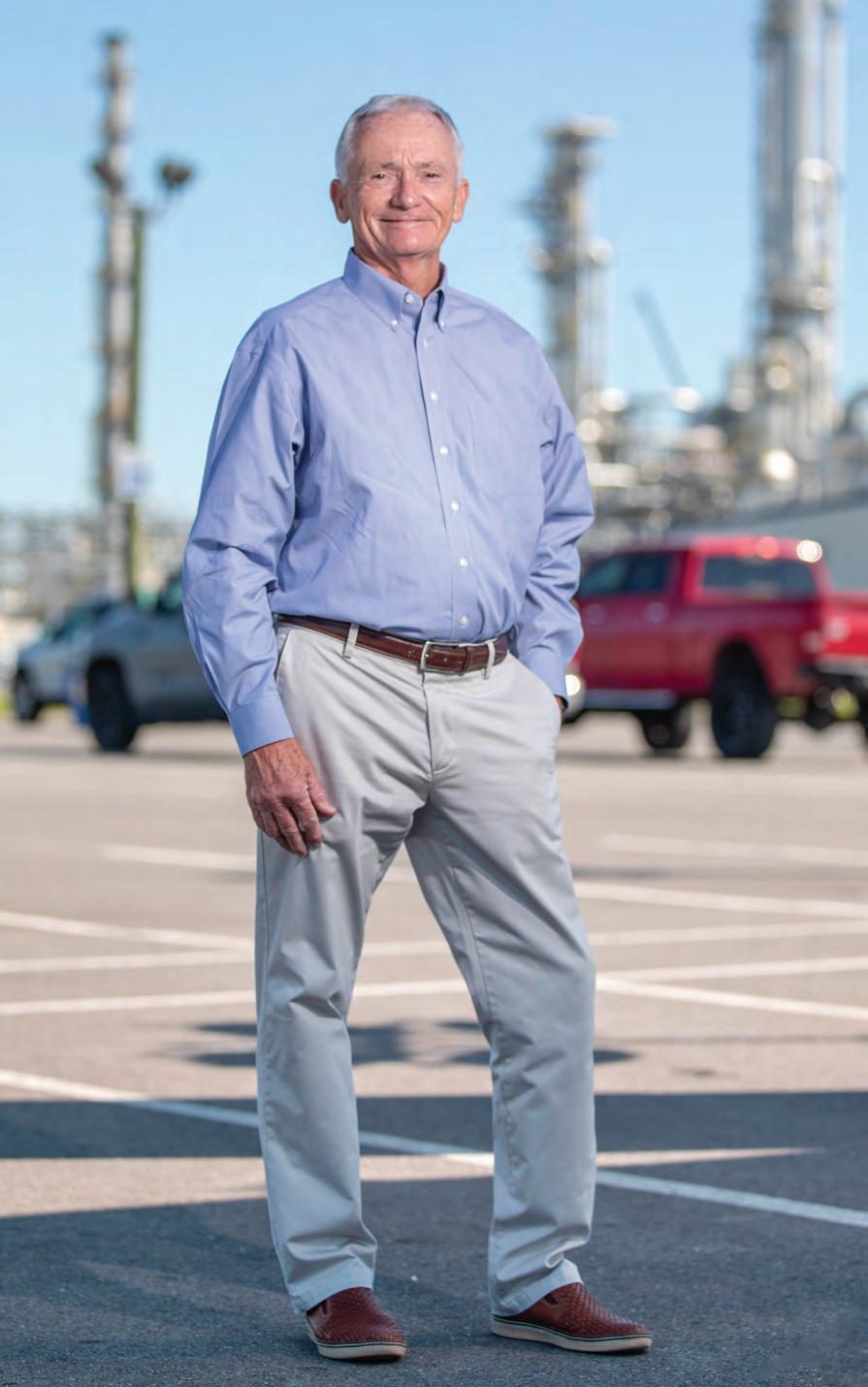
pates in annual firefighting, rescue and hazmat training at Texas A&M’s Engineering Extension Service.
And for knowledge sharing, they attend monthly meetings sponsored by the Southwest Louisiana Mutual Aid Association, comprised of public safety representatives, first responders, private sector members, support organizations and vendors in the area.
Says Novak: “We’ve made an intentional effort in the last two years to increase our level of engagement.”
To minimize obstacles that might impede emergency response times, Novak’s team regularly invites local response teams, fire departments and nearby plants for walk-throughs and practice drills. Phillips 66, located immediately across the highway, trains with them regularly.
“The sirens will complement other notification methods in the parish and could become a model for other regions.”
JIM
executive director.
“That way, should there be an event or a mutual aid call, we’re not meeting people for the first time,” Novak says. “We have some measure of trust and confidence in their ability to do their job–and during an emergency there’s nothing more important than that.”
To reinforce their local relationships, BASF’s Geismar plant invited about 40 representatives of the Ascension Parish Sheriff’s Office, Louisiana State Police, Louisiana Department of Environmental Quality and local emergency response teams to review their security plan and emergency response protocols.
More recently, they offered the use of their administration building to the local sheriff’s office for an active shooter drill.
“We want to maintain those relationships so we can communicate effectively during an emergency,” says Blythe Lamonica, external communications manager.
No matter a plant’s location, any emergency with the potential to impact the public is typically

overseen by the parish Office of Homeland Security & Emergency Preparedness, or OHSEP, the Louisiana State Police, local law enforcement and fire department. If it’s a large-scale event, the Governor’s Office of Homeland Security & Emergency Preparedness, or GOHSEP, in Baton Rouge steps in to support the effort.
“When a parish has exceeded their capacity, we help with operations, logistics or administration … to plug gaps and holes,” says Mark Ward, assistant director of emergency management at GOHSEP in Baton Rouge.
“For example, if it’s some type of air monitoring that’s needed, those requests come from the parish level up to us, and then we ask DEQ if they can assist. If they say no, we go to the next person on the list or contract it out to a third party.
“We can help with messaging, getting equipment there, air monitoring etcetera, and we’re taking to the state partners to make sure they get what they need. We’re here to help coordinate whatever
needs to be coordinated, as well as provide any type of operational or logistics support to that local area.”
Following an event, BASF’s initial point of contact is the Ascension Parish Community Awareness Emergency Response, or CAER, network.
“Each of the facilities is plugged into the network, so if there is an incident that we think may have significance off-site, we call into the system and it notifies the sheriff and state police,” says BASF’s Lamonica. “We’ll guide them, but they’ll make the decision about how to move forward. They’re all tied together–if there’s an incident in a chemical plant, state police is in charge and they make the decision.”
At Sasol, a dispatcher contacts the local CAER network, which in turn notifies the parish OHSEP.
“We communicate what is happening and what we’re doing about it,” Novak says. “And we will advise them on community shelter-inplace evacuation protocols based upon what we know. We don’t
make the decision, but we certainly advise them.”
Technology is perhaps having the biggest impact on response times. In 2025, the Calcasieu Parish OSHEP plans to replace all 36 of the parish’s aging sirens with new technology featuring 360-degree sound projections, a longer sound projection of up to 1.2 miles and solar panels for an independent power supply.
The parish reached out to the Lake Area Industry Alliance for assistance.
“We used a map of the industrial locations in the parish and reviewed each facility’s worse case scenarios to determine areas that would need to be covered for potential shelter in place events due to industrial activity,” says Jim Rock, executive director of LAIA in Lake Charles.
“This showed that using the existing locations resulted in some areas being covered by multiple sirens while other areas were not.”
They subsequently determined the optimal locations for the sirens
and, in the process, identified four additional locations in outlying areas. “The sirens will complement other notification methods in the parish and could become a model for other regions,” Rock says.
Drones have also become a vital response tool at most plants. Using their own drone pilots, BASF operates the devices both during and following an event. “They’re used for air monitoring, to photograph damage or other issues, or even to strategize how we need to address the situation,” Madzy says.
“All those pictures are transported back to the Incident Command Security for better decision-making.”
Sasol uses a third-party drone operator, with similar results.
“They’ve been incredible,” Novak says. “We responded to some wildfires last summer and we were able to see what path the fire was taking and how far ahead we needed to get a bulldozer and make that fire line … they were undeniably instrumental to the success of our response.”
From idea to install, Sam Carbis Solutions Group keeps your product transfer process safer and more efficient. Loading arms, cage systems, and platforms engineered to work together ensuring compliance with mandates and easier loading and unloading.
See how we have helped other organizations with their safety needs at CarbisSolutions.com



10/12 Industry Report shines a light on companies and organizations that make an impact in their fields and in their communities.
BEARD CONSTRUCTION GROUP | FIVE-S GROUP | GRAND ISLE SHIPYARD
MOORE INDUSTRIES | PALA INTERSTATE, LLC


Valuing people over profits has guided Grand Isle Shipyard (GIS) into its fourth generation of ownership and 76th year in business.
CEO Mark Pregeant II grew up on the seven-mile island of Grand Isle and started working in the family business at age 13. He learned under his grandfather and father, helping to grow the business through industry dynamics, technological advances and international expansions, before taking over himself in 2019.
“We have grown to a company of over 3,000 employees now, but still treat each individual as a unique person and a family member at end of the day,” he says. Each person in a leadership position at GIS is instilled with keeping people at the forefront of every decision that’s made. “Putting our people first is what’s kept us in business for this long and will carry us into the future,” Pregeant II adds. In addition to people, GIS’s other core values include service, performance, integrity and safety.
The key to service at GIS is diversification. You don’t stay in business for 76 years without changing things up from time to time.
“Our overarching strategy and vision are to be able to leverage our company’s core skill sets that we have utilized within oil and gas for over 76 years in other markets, because the foundational competencies are quite similar,” explains Vice President of Business Development Adam Beatty. “While we may need to adjust processes slightly for


compliance and success within each market, the overall concept remains consistent, enabling us to continuously diversify and stand out among others.”
Utilizing a client-centric approach, GIS can handle any aspect of a project no matter where it is in its life cycle and carry it through to completion. Another big selling point is a single point of contact, which allows for a cohesive project execution plan.
“We are one of a few companies that offer a true turnkey experience,” says Chief of Execution Services Andy Bruzdzinski. “You have one contact with GIS, and we can provide support, design, maintenance, installation and fabrication—every bit of it.”
GIS’s foray into the industrial market as an engineering, procurement and construction provider (EPC) is a more recent venture for the company. Serving 30-plus clients largely in the Gulf Coast area, this division emphasizes both quality and safety.
Looking toward the future, GIS is moving into the renewable energy sector. “We take pride in the protection of the environment, and we are actively seeking new projects and clients in that renewable and low-carbon space,” says Beatty.
Being a world-class solution provider in the energy and power market sectors will serve to ensure GIS stays around for decades to come. Coupled with international expansion plans in the Brazilian and African markets and visionary leadership, the company can boast both great people and profits.
“We are excited about what we have historically done for energy and are equally as excited about the new markets as well, both in terms of diversity and geography,” concludes Chief Development Officer Todd Berthelot.
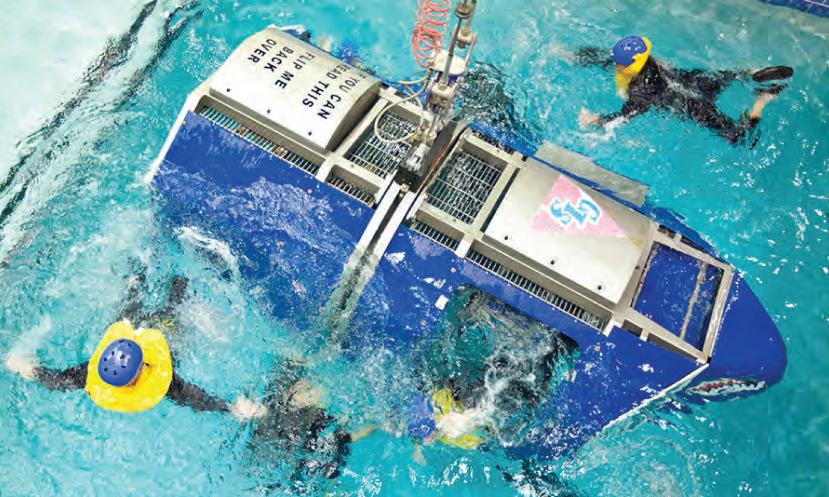
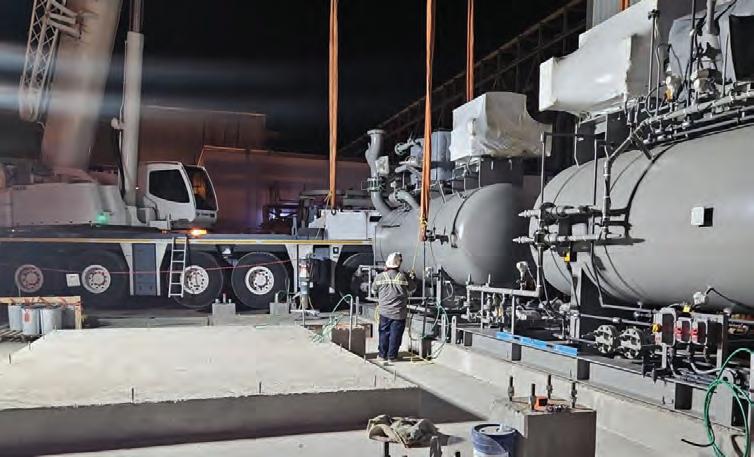
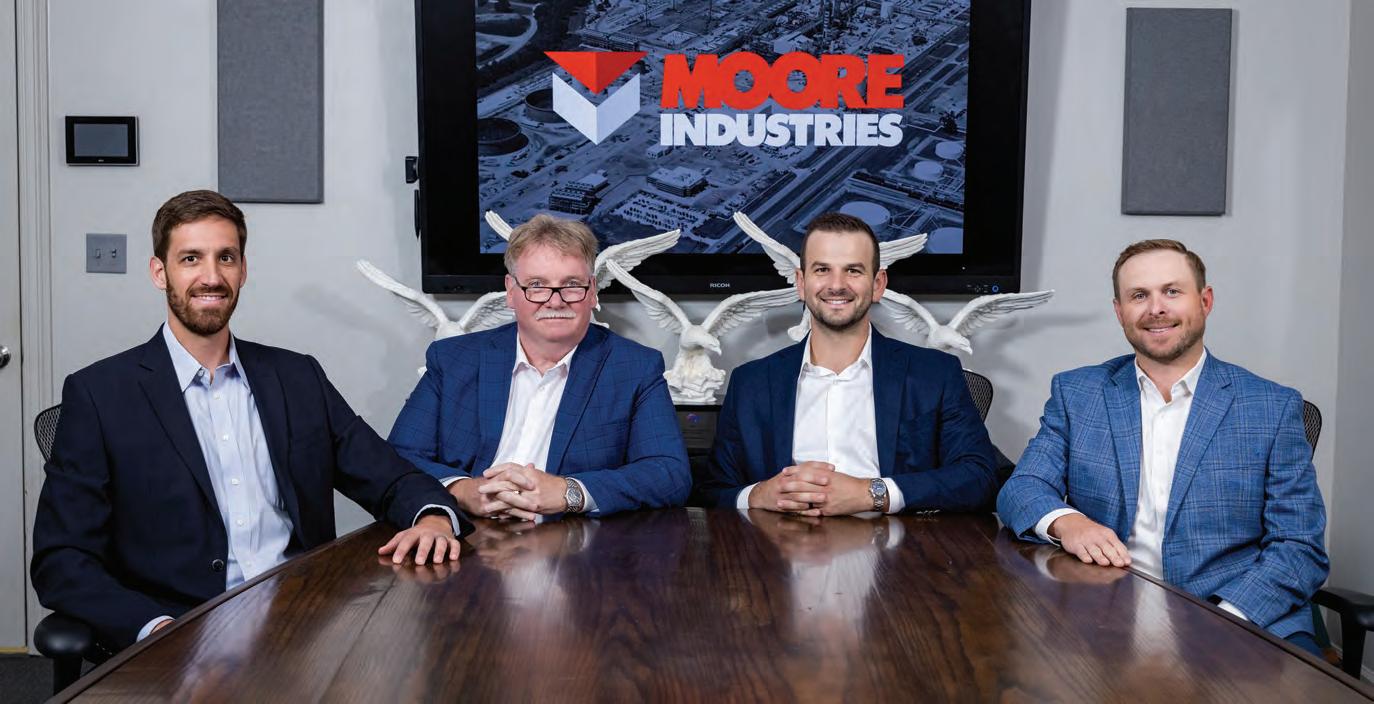
After nearly four decades in the construction industry, Moore Industries is embarking on an exciting new chapter. With fresh services, enhanced leadership, and an expanded geographic reach, the company is stepping into its next phase, ready to deliver successful outcomes for clients nationwide.
“Our company is operating on a whole new level,” says President Tyler Moore. “We have proven our resiliency by being in business for 39 years but realize we must continuously reassess who we are and strive to get better every day. We have worked hard to put the right people in the right positions and enhance our processes to position ourselves for sustainable growth. We are more ready than ever to embrace that growth.”
At the heart of this transformation is a dynamic leadership team driving the company’s future. Three Vice Presidents—David Miller, Michael Kleinpeter, and Paul Frischhertz—have taken the
reins, each bringing unique expertise and vision to steer Moore Industries forward.
Historically, Moore Industries spent the bulk of its career as a building contractor, primarily serving industrial clients in the petrochemical sector. However, in the past decade, the company has embraced its evolution into a diverse general contractor with self-perform capabilities. This shift has opened doors to new opportunities beyond buildings, allowing Moore Industries to become more versatile and adaptable.
“We have the ability to be nimble, and we’re committed to going above and beyond for our clients,” says Moore. “We deeply understand their needs, identify areas where we can add value, and build upon the relationships we’ve cultivated over the years.”
In this new era, Moore Industries can now serve a broader range of clients and projects by possessing a more comprehensive suite of capabilities with
concentrations in industrial buildings, civil, industrial HVAC, and facility maintenance.
“We work closely with our clients to understand their goals for each project, tailoring our services to provide options that best support their objective,” says Kleinpeter. “We recognize that each client and project is unique, and that we must possess the resources and capabilities necessary to adapt to the needs of each client. This versatility allows us to reduce risk and maximize value to our clients. We are not afraid of change.”
A recent project in California serves as a testament to Moore’s willingness and ability to adapt. Despite the challenges that come with entering new territories, Moore did not shy away from the challenge. “Ultimately, our agility and commitment to our client resulted in a successful project and led to a second project awarded in the same location,” says Frischhertz.


With project bid opportunities across the country and licenses in 22 states, Moore Industries is well positioned for growth. But the company’s new chapter also includes growth on the home front. “We have fostered a culture that promotes growth in all areas of the company … not just in the sense of size but also in the sense of development and improvement. Collectively, as an organization, we are committed to the continuous development of our people and improvement of our processes. The consistent growth in the size of the company that we have experienced is a natural byproduct of that commitment,” says Kleinpeter.
“Career advancement opportunities within Moore Industries are limitless,” says Moore. “As we grow, so do the possibilities for our people. There’s tremendous opportunity which creates an exciting and energetic environment.”
Kleinpeter echoes this sentiment, adding, “Our employees have a direct hand in shaping the future of the company. In doing so, they are generating opportunities for themselves to grow within the organization and achieve their personal goals. The sky’s the limit for them and the company as a whole.”
With its sights set on new horizons, Moore Industries is entering a new era that promises to leave lasting impacts on its employees, clients and communities. “As long as we remain focused on growth and improvement, we will be well positioned to capitalize on opportunities as they arise. We are poised for success and excited about the future,” Moore concludes.
This is the story of Moore Industries—a company rooted in passion, resilience and a vision for the future that knows no boundaries.
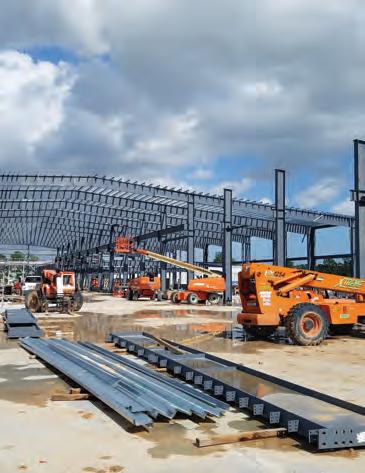

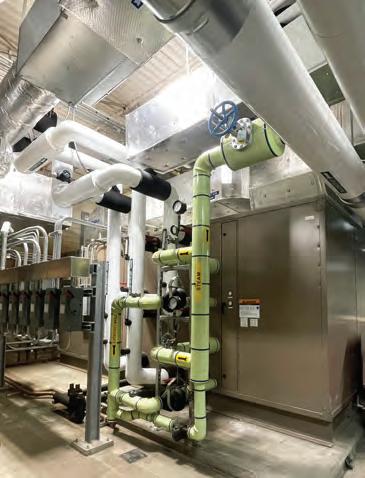
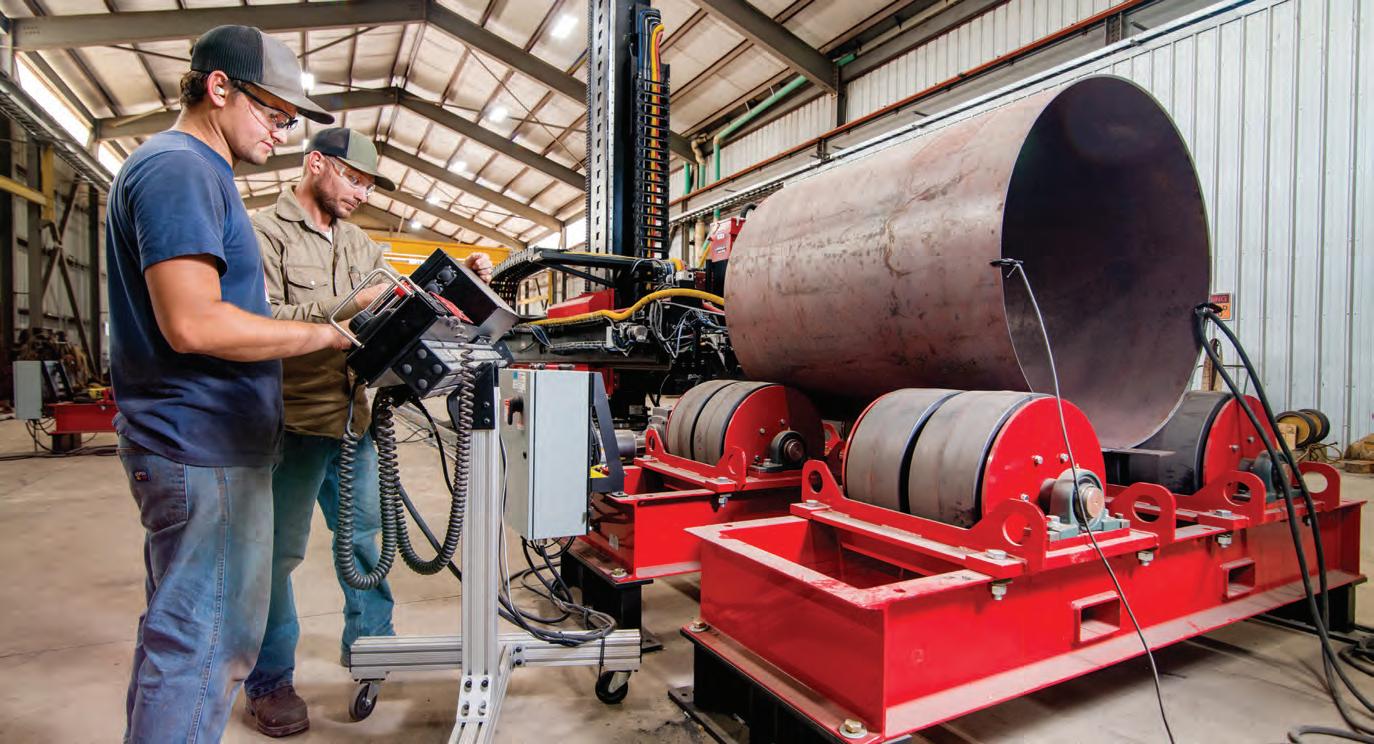
PALA Interstate, LLC has spent the past five decades making a name for itself as a leader in ASME vessel fabrication, storage tank erection and general industrial construction. Now, with recent investments in cutting-edge technology inside of the company’s 70,000-square-foot ASME vessel fabrication facility, PALA is striving to increase efficiency while remaining committed to the safe and quality execution it’s known for.
Company leaders have invested in semiautomated welding technology and equipment at PALA’s 37-acre production facility in Hammond, Louisiana, which designs and manufactures carbon steel and exotic alloy ASME vessels and API storage tanks. These vessels and tanks are used in facilities across the country. Investments include a state-
of-the-art manipulator and a collaborative robotic welding system.
Semi-automated and automated welding is a transformative technology and will continue to expand PALA’s growth in the ASME vessel market as a Gulf Coast leader. Traditional methods require a welder to physically join the components whereas automated technologies streamline the welding process, enhancing safety, ensuring consistent quality and significantly reducing fabrication time — all controlled through the convenience of an LCD interface. These technologies are designed to work with people — not replace them.
“We wanted to move into more semi-automated and automated technologies to cement our position as an industry leader in ASME and API vessel and tank fabrication,” says Adam Landry, PALA’s chief
operating officer. “These technologies provide consistent, high-quality welds that meet all specification requirements while ensuring safety at our facility and promoting technologically advanced working conditions for our employee owners as well as improved delivery schedules to our customers.”
While the automated welding equipment can’t be applied to all of PALA’s fabrication processes, PALA is optimistic that implementing the technology will broaden and extend the company’s extensive client portfolio developed in the past 51 years of business.
PALA is committed to searching for solutions via technology to further enhance all aspects of the fabrication process, thereby creating more opportunities for its employee owners and better efficiency for end-user customers.
Top Executives: Scott Barringer, President & CEO; Adam Landry, COO


During the installation of these technological advancements, the company has been modernizing other aspects of its work, with safety and quality at the forefront. One example is its shift from traditional compressed gas cylinders, which can pose safety and quality concerns, to newer liquid bulk equipment with telematic technology that Jeremy Guidry, shop operations manager, describes as a “gain all the way across the board.”
PALA’s fabrication facility has also moved toward modularization for API field-erected tanks. In the past, some of the tanks and vessels that PALA fabricated were too large for traditional shop fabrication methods, as they needed to be constructed on site and could not be transported via road.
A unique new approach allows the vessels and tanks to be built in completed, modularized sections that are then transported to the client and assembled in the field.
“With a modularization approach, instead of utilizing the traditional method of shipping sheets of steel plate to the field, we can erect, test and send out completed modular components to the field,” Guidry says. “It’s less work and exposure in the field. They just stack the modular sections instead of building the tank via traditional methods. It allows PALA to provide a better price, and it improves safety, quality and schedule.”
PALA is confident its modernization efforts will not only enhance the company’s reputation as an industry leader but will help address the widening shortage of skilled labor by appealing to an emerging, tech-savvy craft workforce. Because high-tech equipment like automated welding machines have not yet become widely used, working at PALA offers the chance to expand on the traditional skills they’ve acquired in trade school and learn something new in a safe environment — all while becoming employee owners at PALA.
“We at PALA have a vision of continuous growth while steadfastly prioritizing safety, quality and the empowerment of our employee owners,” Landry says. “Through continuous innovation and expansion of our services, we are committed to exceeding our client’s expectations, delivering exceptional value to our employee owners and extending our position as an industry leader. This is just another step in PALA’s progression and innovation in our 51-year history, with more to come.”

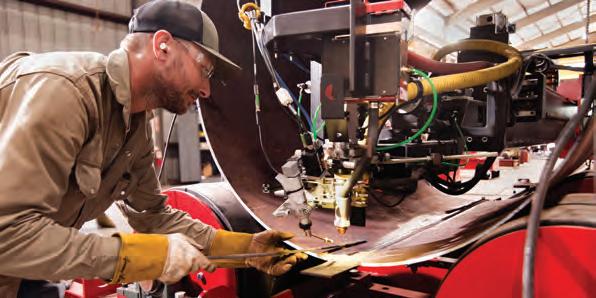
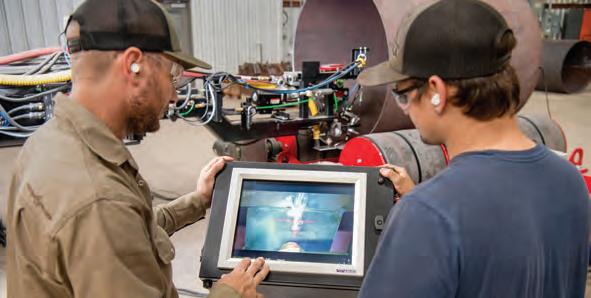

Beard Construction has come a long way since Jim Beard and a group of partners launched their own company working from a small garage in 2004. That was 20 years ago and in the years since, the company has settled into a multi-building campus in Port Allen and has created a reputation focused on reliability, customer satisfaction, and excellence. A sole-source contractor, Beard Construction can perform nearly every phase of civil construction, including site development, pile driving, concrete foundations, roads, rail and environmental scopes of work. The company has become a regional leader with repeat customers who have helped the company expand and have opened doors to project opportunities across the Gulf South.
In their first year in business, the partners landed a $7.5 million job that served as a sign of their eventual success in the industry. “In 20 years, we’ve gone from zero to $100 million in revenue,” says Beard, the company president. “We’ve had recessions and low periods in our industry in that time, but we’ve been able to manage our affairs to
From the initial clearing and grubbing to site prep and foundations, Beard Construction Group has built a 20-year reputation as a regional leader in civil construction.
the extent that we’ve never had to lay anybody off because of a lack of work.”
Beard is proud of the fact that his company is recognized for helping clients find solutions—from soil conditions to financial budgets. But he says what sets him apart from others is his dedicated employees. “They are the reason we’ve been able to consistently deliver results that make our clients happy,” he says. “They’ve made Beard Construction Group what it is today.”
The company employs between 250 and 400 in craft, depending on the time of year, along with about 25 office employees and 25 to 30 supervisors. Matt Milton, executive vice president
and chief operating officer, says those employees are family whether they’re related or not.
“They are a big part of our business and we take great lengths to ensure their safety at job sites, provide training, and create career development opportunities for them,” he says. The company also a professional development program (Beard University) for young employees who show leadership potential.
“Beard brings to the table a 20-year history of consistency and positive client relationships,” says Jason Landry, vice president of business development and marketing. “We have a track record of success. We often win projects based on our historical performance and relationships our teams have with the customer—not just on the initial price. To me, that’s an indicator of doing something really well in this business.”
As for the next 20 years? “We’re going to remain true to our core values and capabilities,” Landry says. “In the next 20 years, when clients think of Beard, we want them to think of high project predictability and success—just like they do today.”
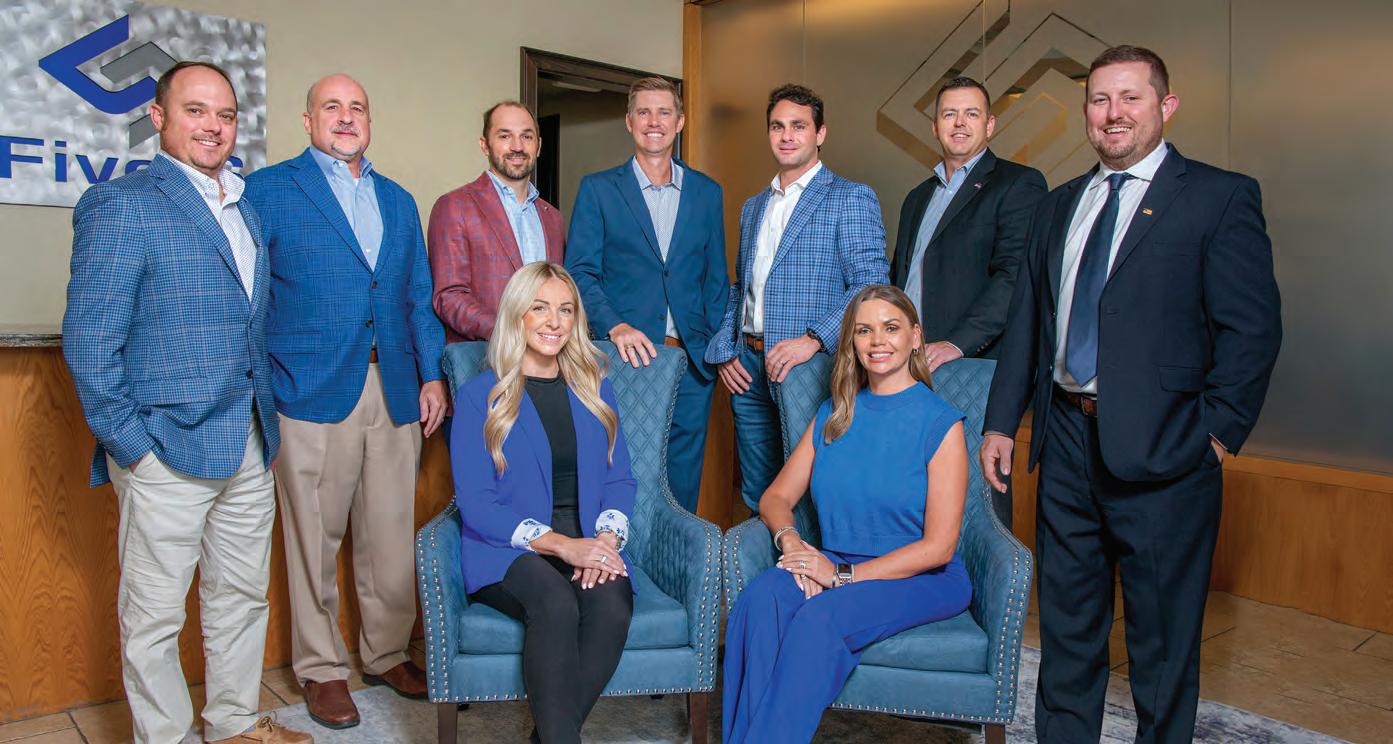
Fulfilling a long-term plan for growth, Five-S Group recently welcomed new executive leadership to take the company into the future. Kirk Arceneaux and Keith Keller have joined the group as Senior Vice President of Finance and Senior Vice President of Operations, respectively.
Arceneaux will direct and oversee all financial functions with a growth-focused mindset and bring an array of new processes and efficiency to the company. Keller is responsible for the oversight of all pre-construction, project management and field operations to provide client solutions from the ground up.
After 11 years in business, these new additions to the team are a huge milestone for Five-S.
“We had a growth strategy and a plan to expand
our executive leadership, but we interviewed for close to a year to find the right people,” says Marketing Manager Braley Ducote.
Arceneaux and Keller aren’t the only expansions for the company, though. Five-S has also hired 37 new employees this year—and that number is still rising. With the level of growth Five-S has experienced, a new location for their main office will be implemented before the end of the year to accommodate their large team, and a marine division has been brought to fruition.
Key new hires include a Director of Engineering to expand the Quality and Engineering Department, an Applications Developer to continue advancing construction technology and several other key roles that support rapid growth.
“We are bringing in skillful and driven people that have diverse experience,” Ducote adds.
Five-S Marine was born out of a desire to provide more competitive pricing for heavy civil construction work and material supply services. The company is investing in equipment and barges and has hired Mickey Suire as Senior Vice President of this division. Suire brings nearly 20 years of experience to the table.
“This growth has been in the making for a long time and we’re excited to be on track to meet the goals we set at the beginning of the year,” says Ducote. “Being named one of the ‘Best Places to Work’ in Baton Rouge by Business Report this month is just the icing on the cake.”


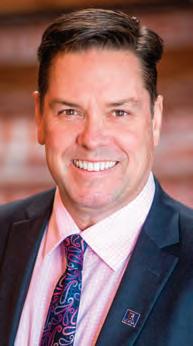
For more than a century, Louisiana has been an energy-rich state and a world leader in energy exploration, production and innovation.
We have achieved this success thanks to our state’s abundant natural resources, highly skilled workforce unmatched anywhere else in the world, and extensive network of pipelines that supply half of America’s refining capacity.
As we look to Louisiana’s future, the energy industry’s emerging expansion represents a golden opportunity for us to grow our economy in ways
TUESDAY, OCTOBER 15 • 11 AM
It is not too late to watch the replay at 1012industryreport.ewebinar.com


not seen since Louisiana’s first oil boom.The numbers speak volumes: Louisiana’s energy sector sustains over 346,000 jobs, contributes $25 billion in wages, and generates $54 billion in economic output.
Our state provides direct access to America’s only deepwater offshore oil port, produces clean offshore energy supplies for our nation and allies, and is home to some of the world’s largest liquified natural gas export terminals.
Today, Louisiana’s robust energy infrastructure and experienced workforce remain an essential national resource, strengthening our state’s

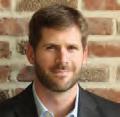


economy and supplying both America’s energy needs and global market demands.
Right now, America’s energy sector is expanding as the demand for all types of energy production keeps growing. Louisiana is working to fulfill this demand and capitalize on the energy industry’s expansion.
Energy producers around the world, like ExxonMobil, Shell, Chevron and dozens of others are investing billions of dollars into Louisiana’s working energy infrastructure. This includes:
• $50B in new project investment for energy production, manufacturing or related facilities according to Louisiana Economic Development;
• More than $20B in clean hydrogen energy production projects with more than 10,000 future job opportunities;
• A $27.5M investment from Shell will create the LSU
Institute for Energy Innovation to study and direct the future of American energy;
• $46.9B for six energy-related projects planned at the Calcasieu Ship Channel;
• $3.6M from ExxonMobil invested in Louisiana to lead innovation around future energy projects in addition to educational programs teaching Louisiana students about new technologies such as advanced recycling, carbon capture and clean hydrogen.
Louisiana can do more if we embrace our position as the leading energy innovation state in America.
For example, Louisiana could gain up to $13 billion in private investments plus thousands of new jobs for carbon management and hydrogen energy production, as well as 4,400 new jobs and $445 million in new investment through just
one offshore wind farm in the Gulf of Mexico.
The need for oil and natural gas resources is not going away. By supporting our oil and natural gas investments and new opportunities in energy advancements, Louisiana can lead America’s energy expansion and be at the forefront of the great American energy renaissance.
Let’s build on our ability to supply the world’s energy needs by producing even more energy through innovations like hydrogen and offshore wind.
This isn’t about replacing our traditional energy efforts. It’s about enhancing them, while embracing innovation and preparing for the growing global energy demand.
We know what the energy industry gives to Louisiana–a robust economy contributing more funding for local schools, police protection and coastal
restoration, plus an exciting future brimming with in-state, advanced careers. Industry leaders, energy advocates, scientists and local communities are backing the future of Louisiana energy by working together across our state, advocating for pro-energy policies and streamlining regulations to ensure that Louisiana remains at the forefront of energy production.
It is vital that we stand firm in our support of Louisiana’s energy expansion for the people of the industry. Our action or inaction today will determine whether Louisiana’s position as a premier energy-producing state will be preserved or threatened.
Let us stand united and resolve to do what it takes to not only maintain, but fortify Louisiana’s exceptional energy culture and way of life, now and well into the future.

Active Louisiana industrial projects announced or proposed, with projected capital investment of $25 million to $250 million. Second line shows projected capital investment and direct new jobs. List is representative, not complete; statuses and costs change frequently.
1 BP Lightsource
Prairie Ronde Solar Farm
$170M | 1,300 jobs retained
Location: Pointe Coupee Parish Status: Construction begins late 2024
2 Shell catalyst plant output boost
$121.7M | 17 jobs
Location: Port Allen Status: In progress
3 Acadia Gulf of Mexico Access Channel deepening
$96M | N/A
Location: Port of Iberia Status: Underway
4 Honeywell expansion
$91.4 | 30 jobs
Location: Baton Rouge Status: In progress
5 Delta Terminal Services tank repurposing
$88.6M | 25 jobs
Location: Harvey Status: In progress
6 CF Industries upgrades
$75M | 2 jobs
Location: Donaldsonville Status: 2025 completion
7 Boise Cascade
$75M | 30 jobs
Location: Allen Parish Status: Announced
8 Placid Refining Headquarters
Port Allen facility modernization
$66M | 20 new jobs; 215 retained jobs
Location: Baton Rouge, Port Allen Status: 2027 completion
9 Aviation Exteriors
$64M | 300
Location: Acadiana Regional Airport Status: Announced
10 Albemarle equipment + materials upgrades
$53M | N/A
Location: Baton Rouge Status: Announced
11 Syngenta Crop Protection expansion
$52M | 3 jobs
Location: Iberville Parish Status: Announced
12 Kinder-Morgan expansion
$50M | 6 jobs
Location: Geismar Status: April 2025 completion
13 Agile Cold Storage
$45.9M | 100 jobs
Location: Pearl River Status: 2025 completion
14 Fusion One waste into hydrogen project
$42M | 130 jobs
Location: Port of New Orleans Status: Announced
15 South Lafourche Leonard Miller
Junior Airport corridor project
$35M | N/A
Location: Lafourche Parish Status: Late 2024/early 2025 completion



Active Louisiana industrial projects announced or proposed, with projected capital investment of $250 million or more. Includes projects that are underway, awaiting FID, and proposed. Second line shows projected capital investment and direct new jobs. List is representative, not complete; statuses and costs change frequently.
1 Venture Global LNG export facility
$21 billion | 400 jobs
Location: Plaquemines Status: 2025 completion
2 Driftwood LNG
$16.8B | 498 jobs
Location: West bank of the Calcasieu River, south of Lake Charles Status: Pending
3 Venture Global CP2 LNG export facility
$13.5 billion | N/A
Location: Calcasieu Parish Status: In progress
4 Energy Transfer LNG
$10B | 250 jobs
Location: Lake Charles Status: Pending
5 Formosa Sunshine Project
$9.4B | 1,200 jobs
Location: St. James Parish Status: Pending
6 Grön Fuels
renewable diesel facility
$9.4B | 1,025 jobs
Location: Port of Greater Baton Rouge Status: Pending
7 Delta LNG + Delta Express Pipeline
$8.5B | 300 jobs
Location: Plaquemines Parish Status: Pending
8 St. Charles Clean Fuels
$7.5B | N/A
Location: St. Rose Status: In progress
9 Louisiana Clean Energy Complex
$7B | 350 jobs
Location: Burnside Status: 2026 completion
10 Delfin LNG
$7B | 400 jobs
Location: Off the coast of Cameron Parish Status: Pending
11 Argent LNG export terminal
$5B | 350 jobs
Location: Port Fourchon Status: Pending
12 DG Fuels
$4.96B | 650 jobs
Location: St. Rose
Status: Pending ($250M and up)
13 Lake Charles Methanol
$4.6B | 200 jobs
Location: Calcasieu
Ship Channel Status: In progress
14 Magnolia LNG
$4.6B | 70 jobs
Location: Calcasieu Ship Channel Status: Pending
15 St. Charles Clean Fuels
blue ammonia facility
$4.6B | 220 jobs
Location: Port of South Louisiana Status: In progress
16 Air Products Blue Hydrogen Complex
$4.5B | 170 jobs
Location: Burnside Status: Operational 2026
17 Commonwealth LNG
$4B | N/A
Location: Cameron Parish Status: FID 2025
18 Cameron LNG Train No. 4
$4B (estimated) | N/A
Location: Cameron Parish Status: FERC approved
19 Louisiana Green Fuels
$4B | N/A
Location: Caldwell Parish Status: 2026 construction
20 IGP Methanol
Gulf Coast Methanol Park
$3.6B | 325 jobs
Location: Plaquemines Parish near Myrtle Grove Status: Pending
21 Lake Charles Methanol manufacturing plant
$3.24B |123 jobs
Location: Port of Lake Charles Status: Announced
22 Pointe LNG
$3.2B | 200 jobs
Location: East Bank of the Mississippi River in Plaquemines Parish Status: Pending
23 CF Industries + Mitsui & Co. blue ammonia plant
$2B | 102 jobs
Location: Geismar Status: Pending
24 Element USA rare earth extraction plant
$2B | 200+ jobs
Location: Gramercy Status: FID issued
25 Mitsubishi Chemicals methyl methacrylate complex
$1.9B | 125 jobs
Location: Geismar Status: Pending
26 Port NOLA
Louisiana International Terminal
$1.8 billion | N/A
Location: Violet, St. Bernard Parish Status: Construction in 2025; first berth opens in 2028.
27 Shell Chemical olefins facility expansion
$1.2B | 12 jobs
Location: Geismar Status: Pending
28 Shell renewable diesel and sustainable aviation fuels facility
$1.3B | 42 jobs
Location: Convent Status: 2027 construction
29 Shintech PVC production expansion
$1.3B | 42 jobs
Location: Convent Status: 2026 operational
30 First Solar panel plant
$1.1B | 700 jobs
Location: Acadiana Regional Airport Status: 2025 completion
31 Bunge Chevron Renewables oilseed production facility
$1B | 30 jobs
Location: Destrehan Status: 2026 operational
32 Koura lithium ion battery components
$800M | 100 jobs
Location: St. Gabriel Status: Pending
33 BASF MDI production facility
$780M | 22 jobs
Location: Geismar Status: 2025 completion
34 Kindle Energy Magnolia Power Generating Station
$740M | 25 jobs
Location: Plaquemine Status: Commercial operations in May 2025
35 Project Cypress carbon capture hub
$603M | 100 jobs
Location: Southwest Louisiana Status: Pending
36 Southern Cross Transmission Project/HVDC converter station + transmission line
$600M | N/A
Location: DeSoto Parish Status: Completion 2026

BLUE = ADDED SINCE PREVIOUS EDITION
Sources: LED, LEO, 10/12 research


37 Westlake Chemicals expansion
$512M | 12 jobs
Location: Geismar Status: Pending
38 UBE Corp. lithium ion battery components
$500M | N/A
Location: Jefferson Parish Status: Operations late 2026
39 APM Container Terminal
$500M | 56 jobs
Location: Plaquemines Parish Status: Pending
40 Louisiana Gateway Port/ Plaquemines Port & Harbor Terminal
$467M | N/A
Location: West Bank of the Mississippi River, Plaquemines Parish Status: 2027 construction
BY SAM BARNES
Louisiana native Erick Comeaux, director of growth operations at Koura in St. Gabriel, has spent more than 30 years working in the petrochemical industry. His degree in chemical engineering from LSU and additional studies in business administration have prepared him to serve in a variety of roles, from research and development to logistics, production and commercial management.
Today, Comeaux is guiding Koura’s St. Gabriel plant through a transformative $800 million expansion.
Erick Comeaux’s toughest challenge came at precisely 8:37 a.m. on June 13, 2013. Ironically, he was in the middle of discussing the importance of safety intervention with his team when an explosion rocked the south Louisiana plant where he worked at the time.
“I could feel an invisible fist punch my chest,” says Comeaux, who was the plant’s engineering and technical manager. “Within a fraction of a second I felt the ground shake and heard the boom … and when I opened the back door it looked like the whole world was on fire.”
A heat exchanger had violently ruptured, resulting in an explosion that killed two workers and injured more than 100 others. It shook Comeaux’s confidence to its core. Before that, the company had built an impeccable safety record spanning some 40 years.
Following an investigation, they determined that multiple failures had occurred simultaneously. “One of the things you’re taught in industry is that you don’t plan for double jeopardy,” Comeaux says. “You plan for one thing to fail, but you don’t plan for the backup to fail.”
In this case, it was triple jeopardy. “We had three things fail at
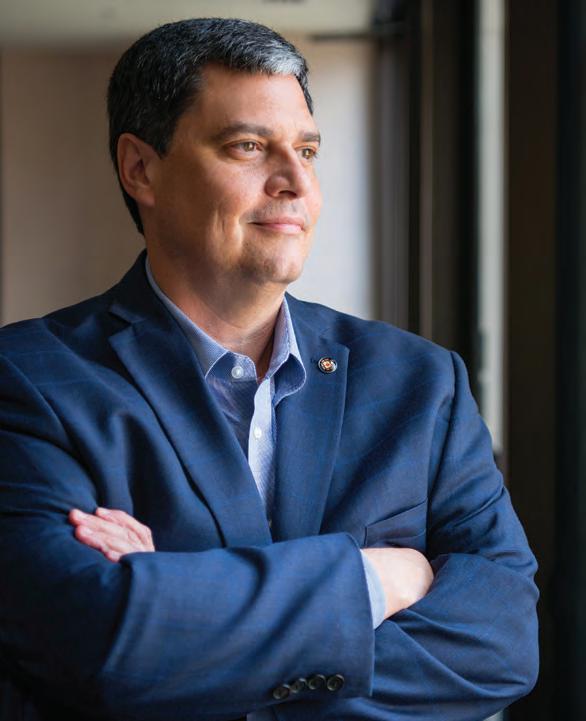
exactly the same moment.”
After recovering from the initial shock, Comeaux embarked on a complex and challenging fiveyear journey to fix the problem, rebuild the confidence of the plant’s employees and contractors, and restore customer trust. “Our customers had known us for a long time as one of the safest and most reliable suppliers in the market,” he says. “That had evaporated in an instant.”
The plant didn’t ship product for more than a year following the incident, giving Comeaux’s team the time it needed to create and execute a comprehensive game plan. One thing was certain–the employees would be part of the process.
POSITION: Director of Growth Operations COMPANY: Koura, St. Gabriel
WHAT THEY DO: Koura took the bold step of entering a business they have supported for decades–the lithium-ion battery market–by choosing to build two new grassroots production facilities to manufacture the chemicals that go into the batteries. Once operational, they’ll produce enough lithium hexafluorophosphate to make more than 1 million electric vehicle batteries a year. Koura will then retrofit its existing operations to produce a new, low-carbon refrigerant.
Comeaux and the marketing team then embarked on a road show, of sorts, to visit every customer to explain what had happened, what they’d learned and what had been done to ensure a similar situation would never occur again. “It was a one-on-one, personal experience with every one of them to help them understand what had happened, and why we were coming out much stronger than before,” he says.
“We even got them involved in the initial investigation,” he says. “That way, the root cause of the accident was not merely presented to them; they helped determine the cause of it and test it.”
The employees were also involved in the design, implementation, testing and startup of the solution, which went far beyond addressing the root cause of the incident. “We second guessed everything and asked ourselves, ‘What if this happens?’ ‘What could we do to prevent that?’ The employees were part of that process every step of the way.”
Once the new unit was complete, the plant invited the employees and their families to visit the site “to see the newness and cleanliness of everything for themselves.”
Comeaux’s number one takeaway: “Some things are so bad that you simply don’t walk away from them better than before. Everyone is going to walk away damaged to some extent, but you still must find those opportunities and derive whatever good you can from them.”
In that vein, Comeaux and his team took the bull by the horns in the wake of the 2013 disaster, while keeping the greater good of the employees and industrial community top of mind.
“When the process was over, we shared what we’d learned not only with customers, but with our competitors as well,” he adds. “We might compete for revenue, but we don’t compete for lives and for safety. By being open about it, our hope is that we improved the industrial community at large so that this will never happen again.”







